Inbox and Environment News: Issue 532
March 27 - April 2, 2022: Issue 532
Friends Of Narrabeen Lagoon Catchment: Update On Wakehurst Parkway Wildlife
Wildlife are on the move and can be unpredictable. Please be careful driving in the area around Oxford Falls Road and Dreadnought Road.
Sadly one Swamp Wallaby has been hit and killed.
This death has been added to: https://wildlifemapping.org/
Happy to report that one echidna has been moved off the road to a safer location.
Find out more at: https://www.narrabeenlagoon.org.au/
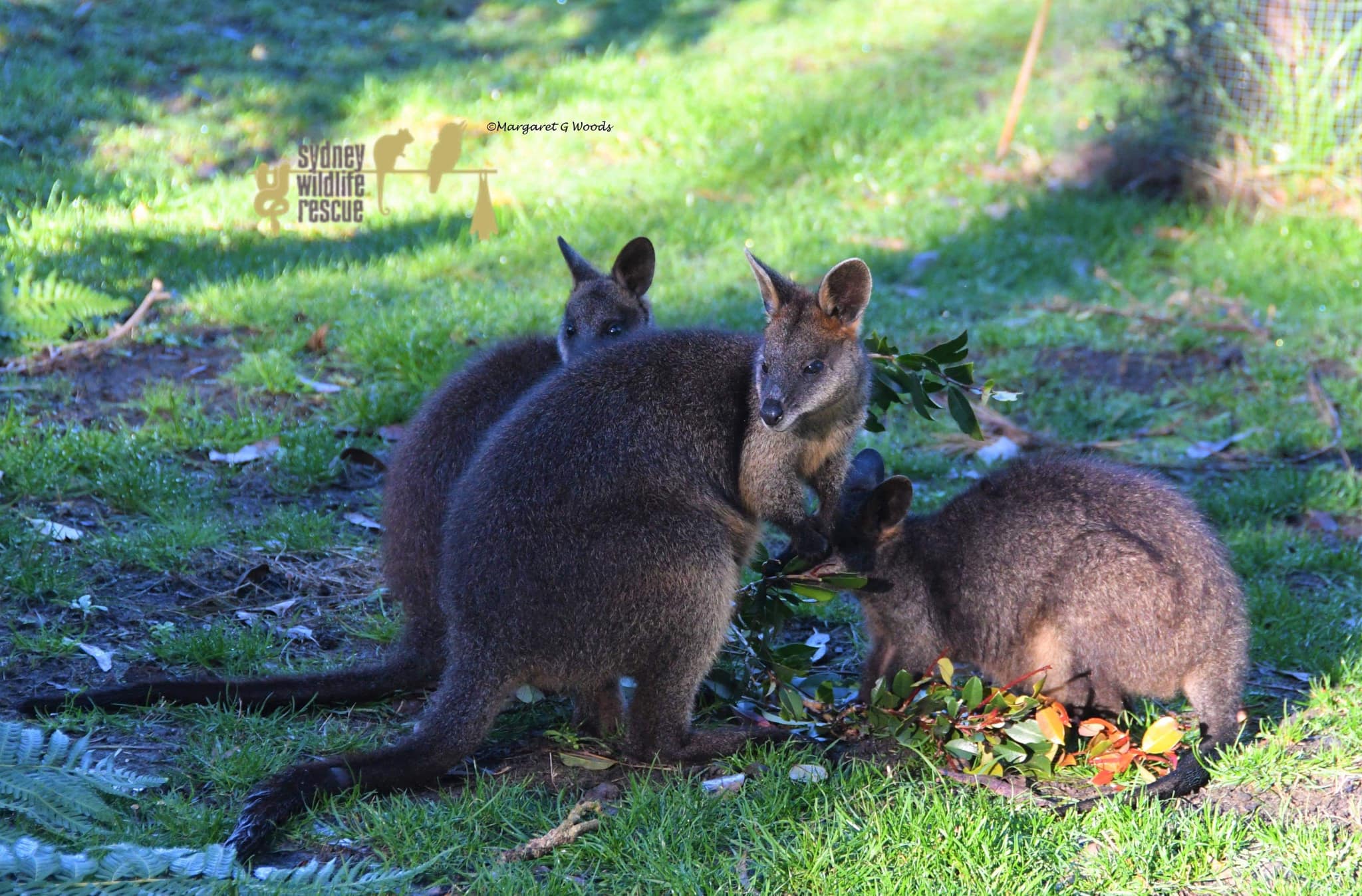
Photo credit Margaret G Woods
Habitat Being Destroyed For Profit: Wildlife Leaping From Trees Being Cleared Under Them - Video
This is happening in Noosa at present - this is glossy cockatoo habitat and food trees and this is occurring during their breeding season.
At 1:39 you can see a mother ringtail leap from the tree that's being ripped out from under her to the machine. The wildlife 'spotters' were MIA or behind the machine - one later found the ringtail and one of the babies that was left, still clinging to mum's back.
It is ILLEGAL to do this in QLD; to hurt or endanger wildlife.
Furthermore, the Glossy Black-Cockatoo, Calyptorhynchus lathami, are one of the more threatened species of cockatoo in Australia and are listed as vulnerable under QLD and NSW legislation.
Those sharing and bearing witness to this have asked Pittwater online to share a petition at: https://www.change.org/p/uniting-church-help-spencer-to-stop-the-church-to-save-our-glossies
Join The Fight Against Foxes On The Northern Beaches
Northern Beaches residents are invited to hear how they can join the fight against foxes in their area at a free online event on April 5th.
A joint initiative between NSW DPI, Greater Sydney Local Land Services and Northern Beaches Council, the webinar will feature a range of expert speakers and local information.
Greater Sydney LLS Senior Biosecurity officer Gareth Cleal said the event would give residents advice and information based on real life scenarios and experiences.
“There is no doubt foxes are becoming more and more prominent in urban areas of Sydney and the Northern Beaches is not immune,” he said.
“We regularly receive reports of fox sightings in the area and there are simple steps residents can take to help reduce their impact.”
Mr Cleal said foxes were attracted by food scraps and domestic pets like chickens and rabbits.
“Residents can help by ensuring compost bins are kept secure and properly closed, keeping household rubbish in a secure location, feeding domestic pets inside, ensuring food is not left outside and wherever possible, keeping pets inside overnight,” he said.
“Keeping yards in check by tidying gardens, weeding to reduce fox harbour and housing backyard chickens in secure, fox-proof enclosures rather than free ranging will also help.”
The webinar will feature presentations from local pest animal experts, and cover topics including:
- How to minimise impacts to your pets and native wildlife
- Recording/reporting foxes into FoxScan - https://www.foxscan.org.au/
- An update on local programs
The webinar will be held on Tuesday, 5 April 2022 from 7pm. RSVP via https://bit.ly/3qq5aIK or email feralscan@feralscan.org.au.
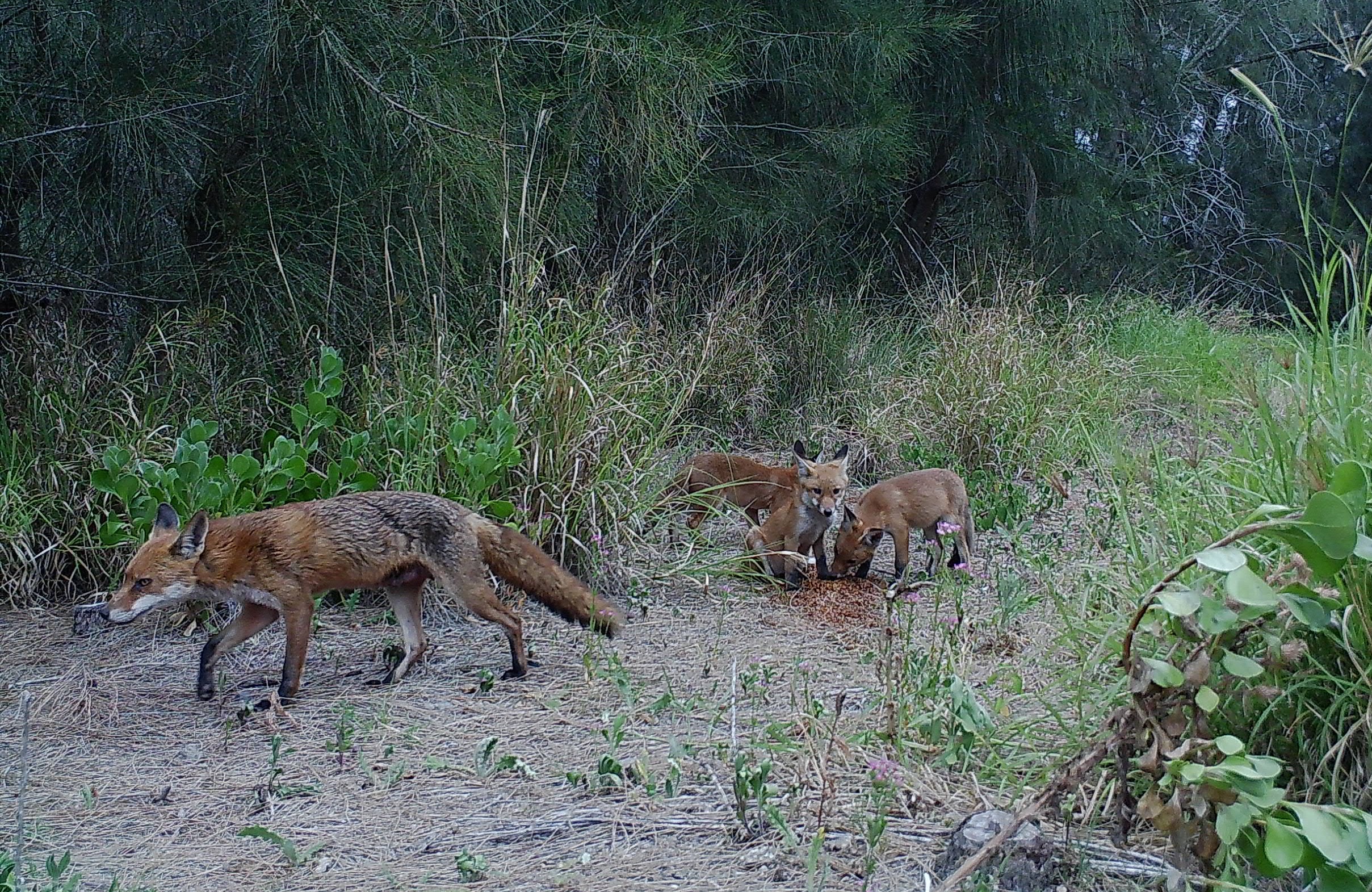
Synthetic Fields: Independent Review Report Due Mid Year
The Independent review into the design, use and impacts of synthetic turf in public open spaces by the NSW Chief Scientist and Engineer has tabled its initial report in February 2022, with the final report due mid-year.
Pittwater Online News has been conducting research into the environmental impacts and feasibility of the planned introduction of more of these fields into our area, along with speaking to resident Julia Walsh over several months. Julia first brought the fragmentation of one of these fields to our attention in August 2021.
Julia has sent in a video update on one of the grassed areas for which synthetic fields is proposed, alongside Manly Creek, taken after the recent rains.
The February 2022 interim report may be accessed at: www.chiefscientist.nsw.gov.au/independent-reports/synthetic-turf-in-public-spaces
Melwood Oval at Forestville has had a synthetic field installed and during heavy rains Julia witnessed "pulverised rubber" washing off and down pathways.
"It's not just the plastics that you can see, it's the plastics you can't see," Julia stated in 2021.
"The biggest concern is that we're putting these fields in water catchment zones."
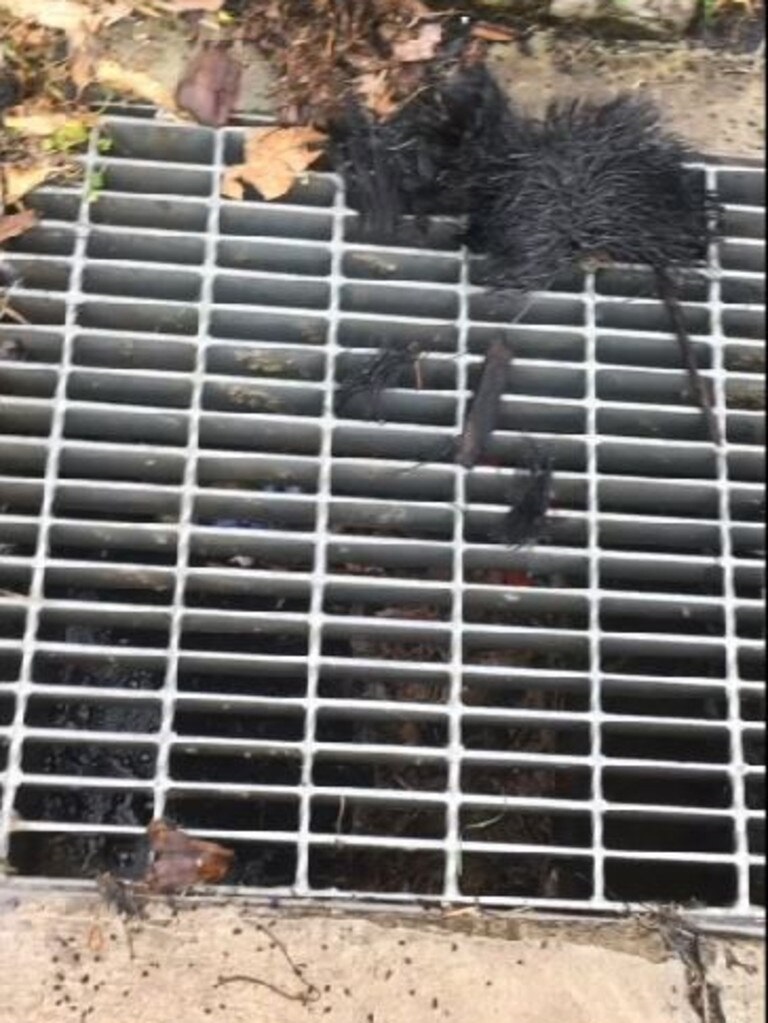
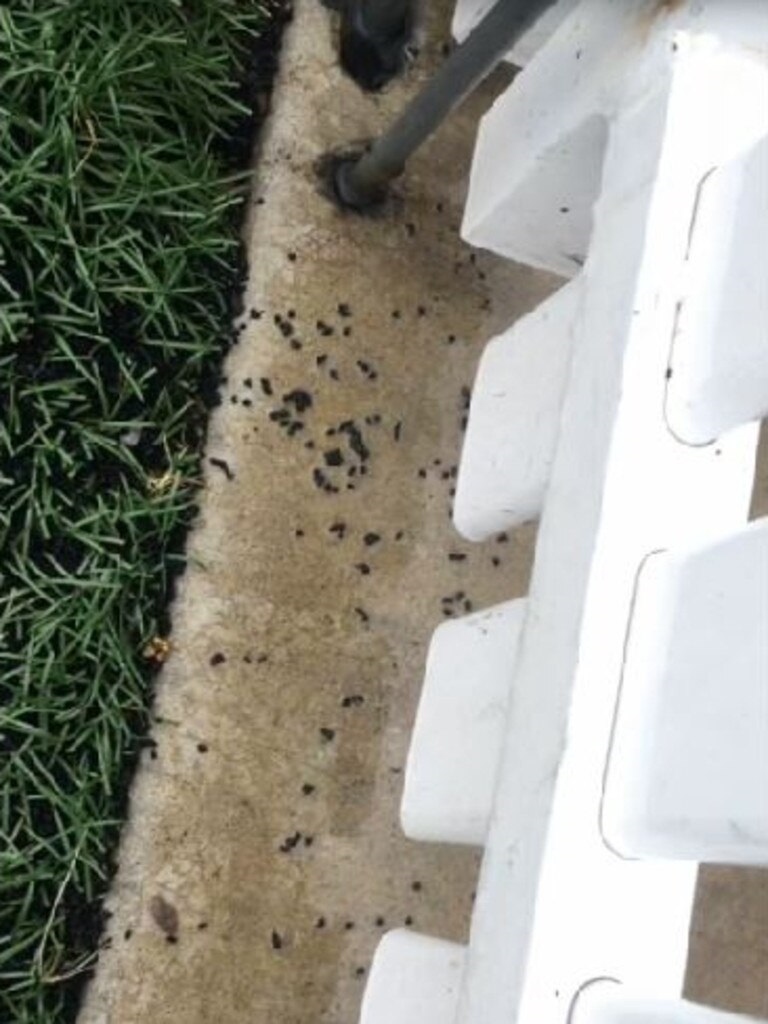
Melwood Oval - synthetic field fragmenting. Images: supplied.
Millers Reserve at Manly Vale is among seven greenspaces across the LGA that will be "upgraded" to a synthetic surface, with a $203,000 tender already awarded for the works. Millers Reserve is located beside Manly Creek, which flows to Manly Dam, and Ms Walsh is concerned about run-off there.
At their March 2021 council meeting, councillors Stuart Sprott and Roslyn Harrison called for council to halt approvals of synthetic fields pending a NSW Government investigation into sustainable alternatives, which was called for by Planning Minister Rob Stokes. Their response was not supported by other councillors.
Seven new synthetic ovals are planned for our area, including one being touted for Careel Bay, which floods during rain events with refuse carried into the wetlands alongside these. Careel Bay is a Wildlife Preservation Area (WPA) due to its importance to resident wildlife as well as migratory birds, many of which are endangered species.
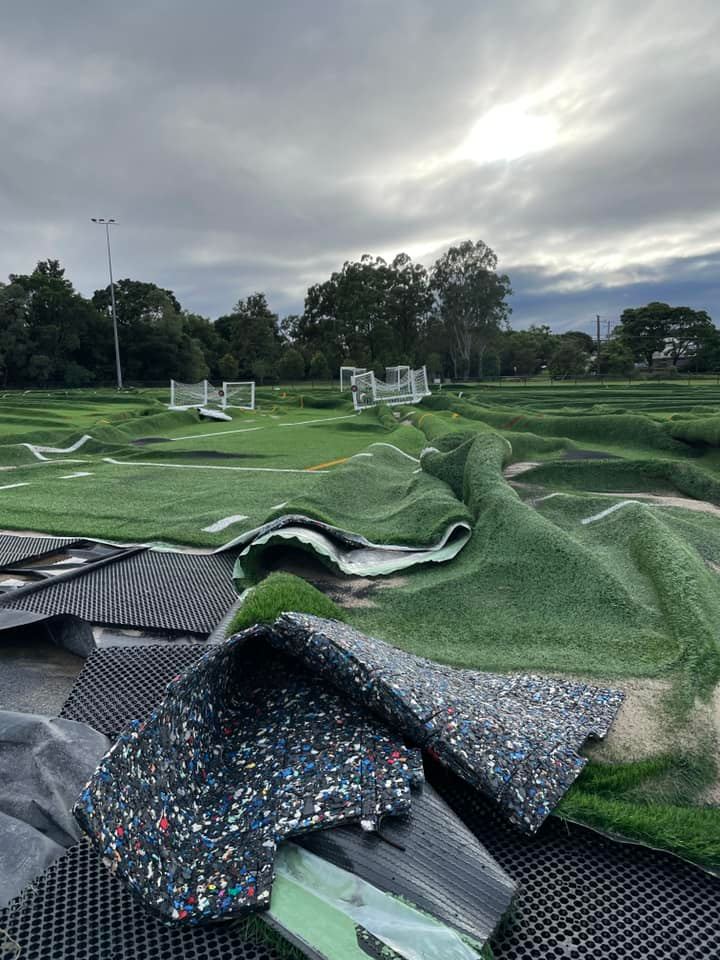

Mitchelton football field No 2 in Everton Park Brisbane after rains there - February 28, 2022. The rest of their fields are grassed areas and these were quickly restored/cleaned to allow commencement of their Season in March. From the Mitchelton football Club Facebook page.
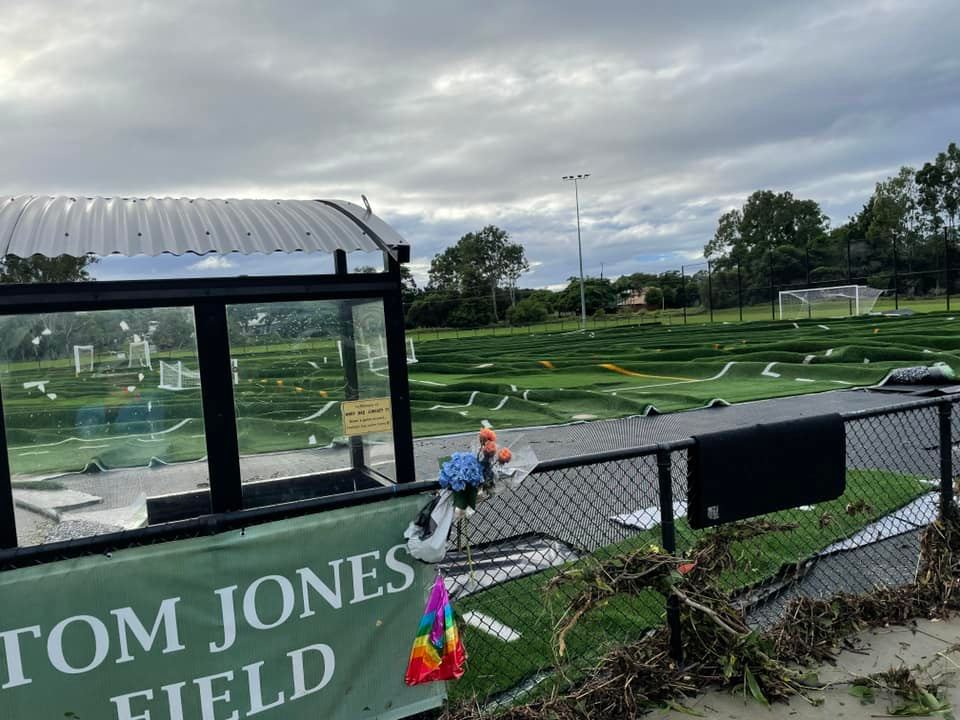
Mitchelton football field No 2 in Brisbane after rains there - February 28, 2022. From the Mitchelton football Club Facebook page.
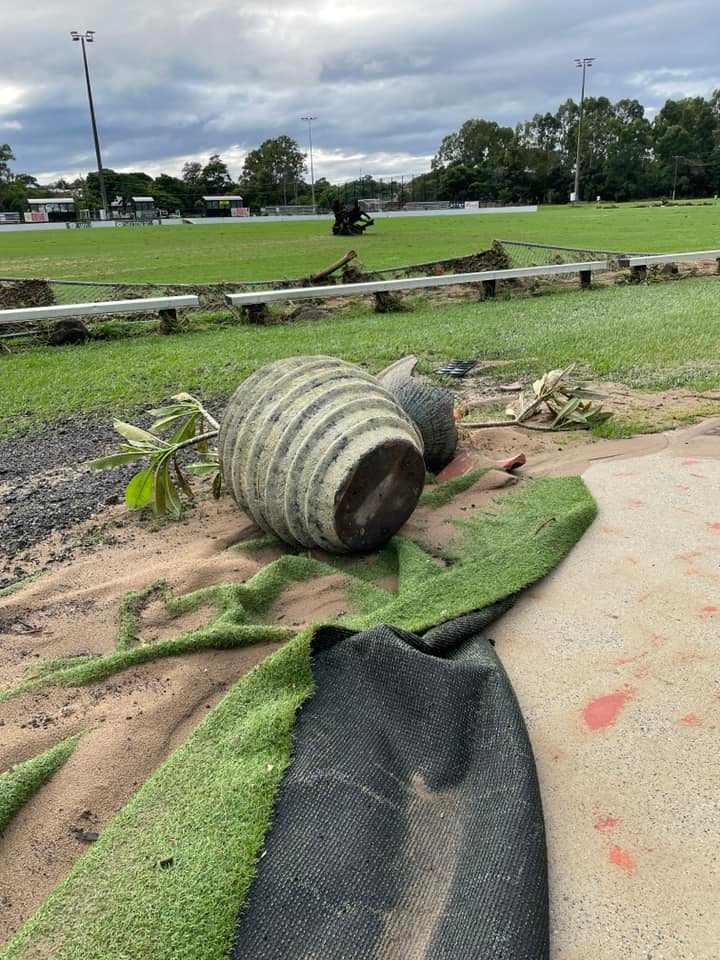
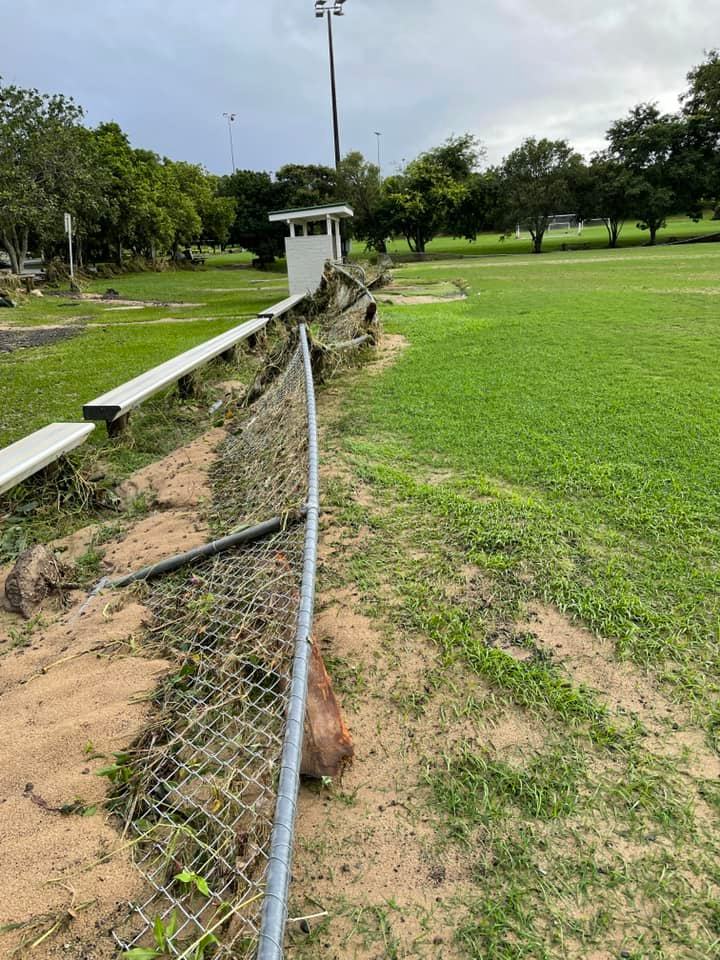
Mitchelton football club - Fields 1, 3-4 in Brisbane after rains there, and perimiters - February 28, 2022. From the Mitchelton football Club Facebook page.
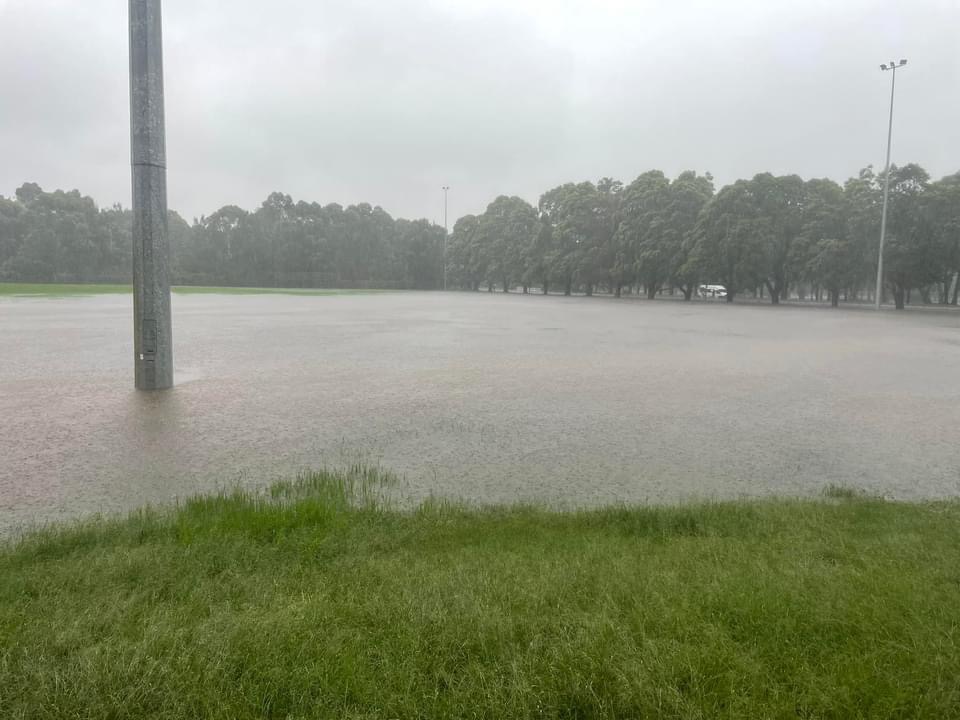
Millers Reserve submerged by water after the heavy rains, March 2022
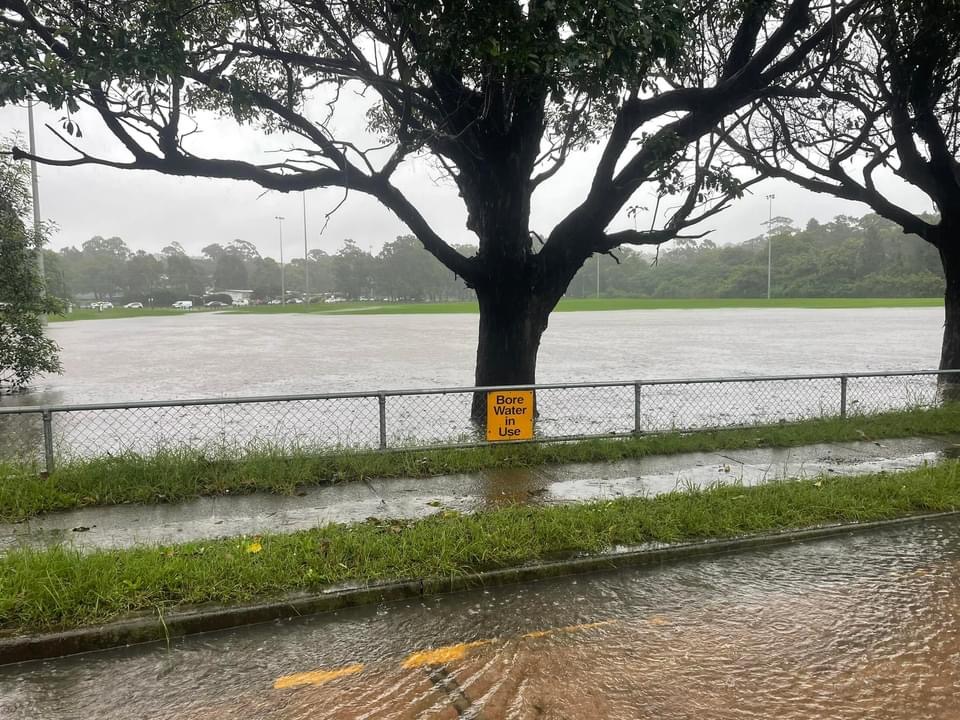
Millers Reserve submerged by water after the heavy rains, March 2022
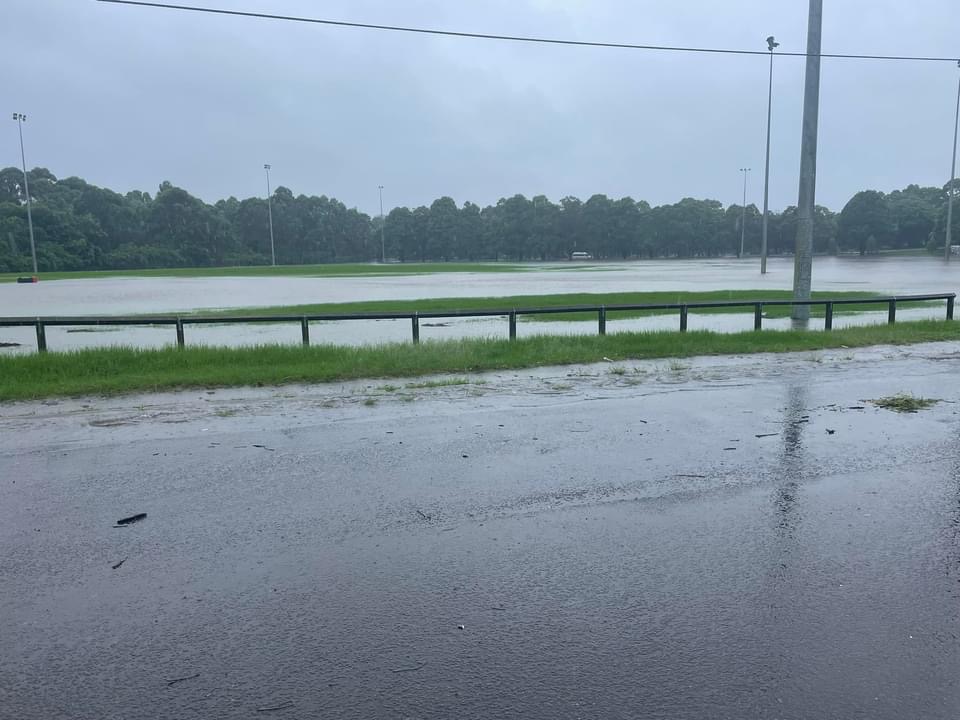
Millers Reserve submerged by water after the heavy rains, March 2022
More on this once the final report is released. Julia's latest video runs below.
Hawk Moth Caterpillars
These are Hawk Moth caterpillars on food plant Cayratia. Young ones camouflage by being green, older ones change to browns. Theretra indistincta has bright green spots on its spiracles where it takes in oxygen along its sides. Theretra latreillii’s spiracles just look like dots. Cayratia aka Native Grape grows madly in this weather but watch out for these lovely grubs before you clear it too energetically.
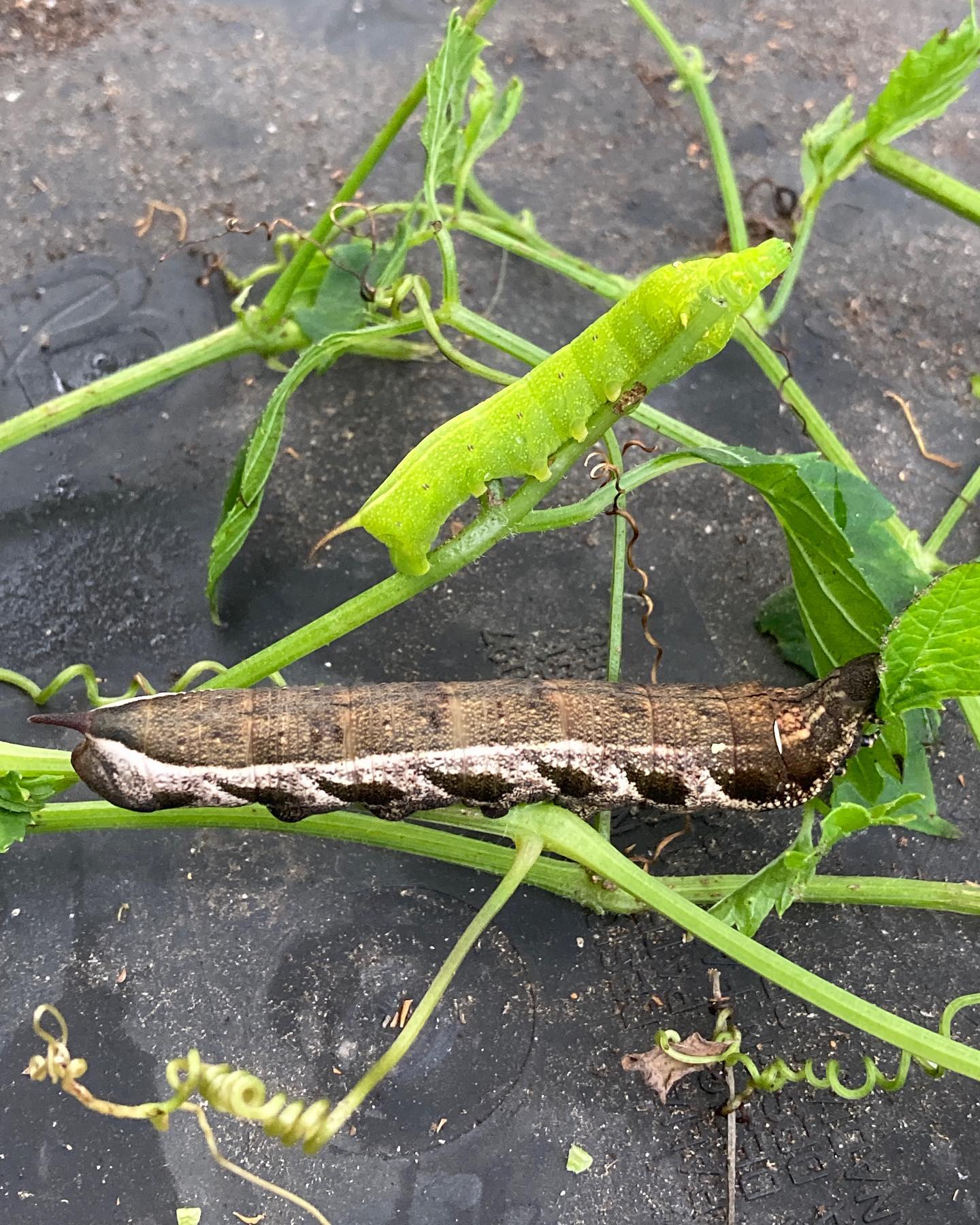
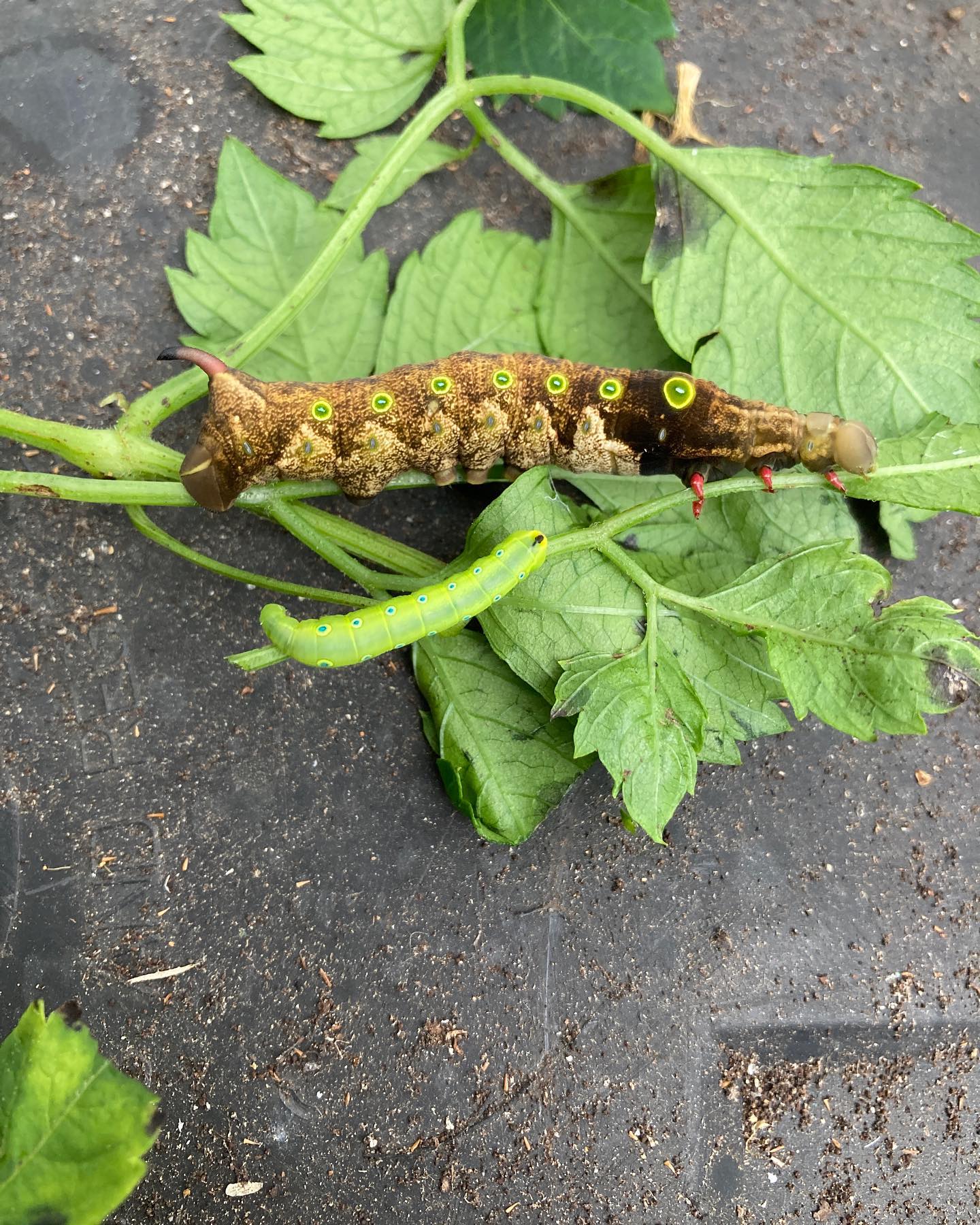
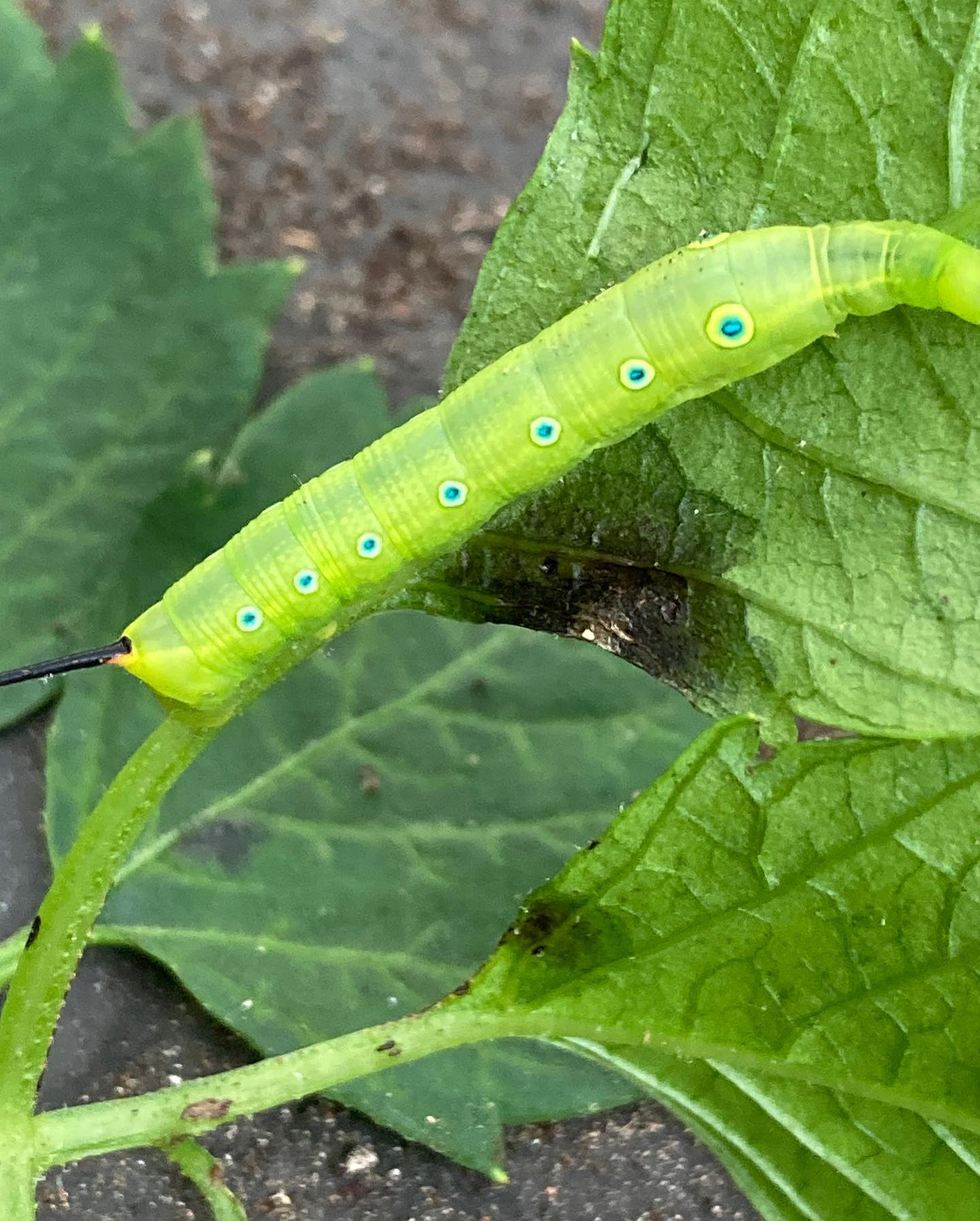
There are an estimated 850 species of Hawk Moth world wide, with the highest diversity occurring in wet tropical regions. Australia has 65 species and in the Sydney region 21 species are known.
The larvae (caterpillars) are large and often colourful, usually with a long horn near the end of the body. Many have lateral stripes and/or large eye spots on the thorax and abdominal segments. The colour patterns help to camouflage the caterpillars and the large eye spots may assist in warding off predators. The caterpillars don't bite or sting but may regurgitate green fluid (from a previous meal) if annoyed.
Adult Hawk Moths are medium to large in size. They are streamlined, robust flyers with an obvious head and large eyes. The forewings are long and narrow and much larger than the hind wings. When the moth is at rest the wings are tented over the body. The abdomen is large and has a tapered cigar-shape appearance. Hawk moths often have a long proboscis, coiled when not in use, which is used in nectar feeding. The adult moth hovers in front of flowers and inserts its proboscis to drink the nectar.
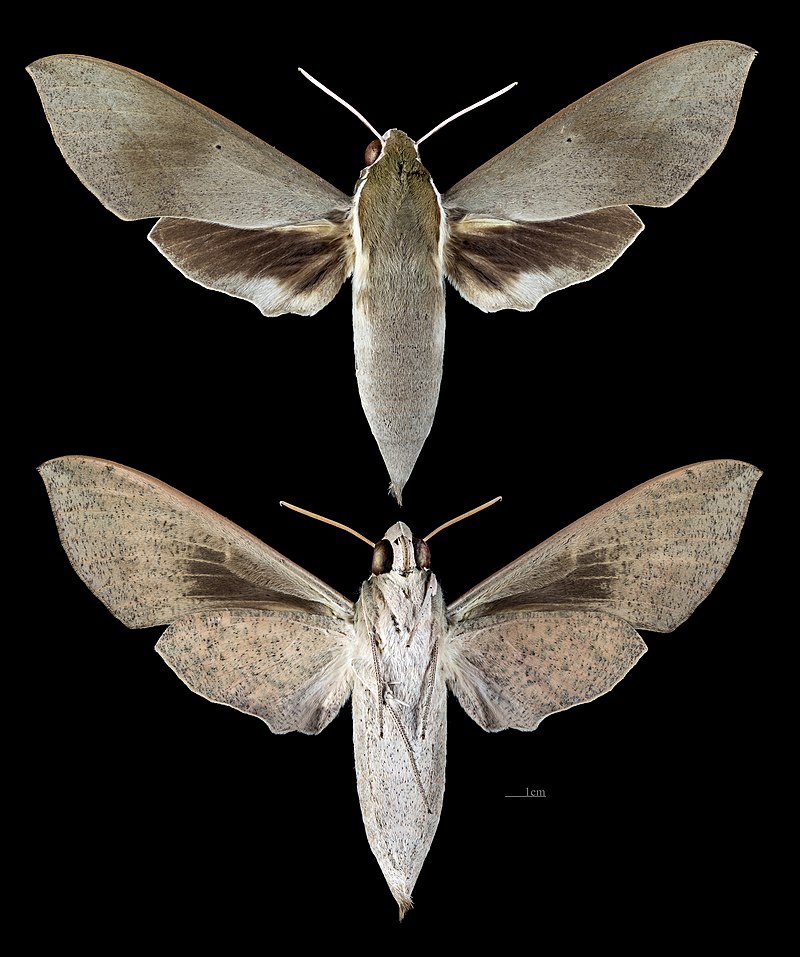
Theretra indistincta taken at Cooktown, QLD. Photo: Didier Descouens
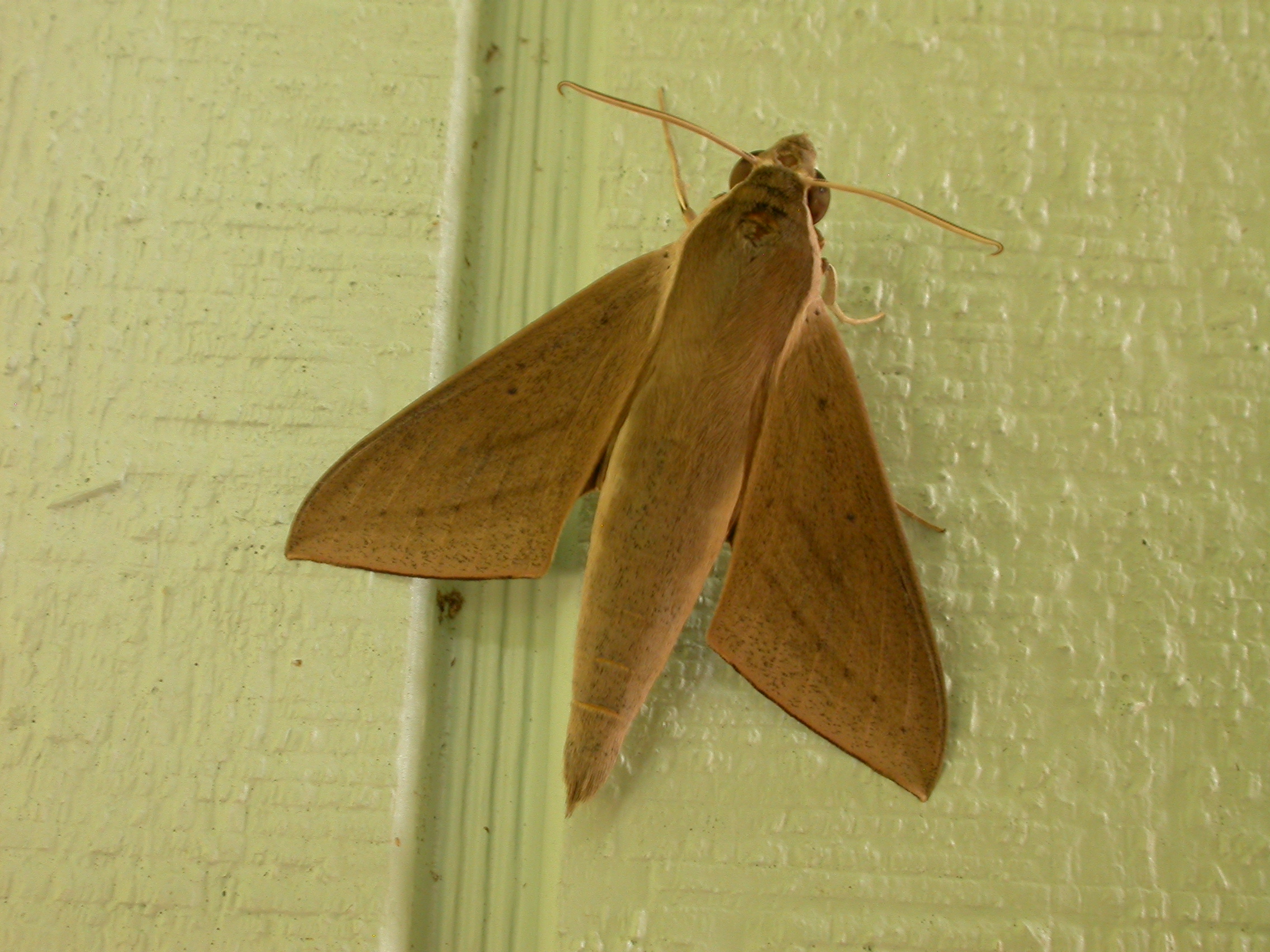
Theretra latreillii, the pale brown hawk moth, taken at Mission Beach, QLD. Photo: Donald Hobern.
Theretra latreillii, the pale brown hawk moth, is a moth of the family Sphingidae described by William Sharp Macleay in 1826. Mr. Macleay emigrated to Australia in 1839, living briefly at the Colonial Secretary's House in Macquarie Place with his parents before moving in September of that year to the family's still unfinished Elizabeth Bay House. Mr. Macleay was interested in the natural history of Australia, the marine fauna around Port Jackson in particular. Later, he collected a large number of Australian insects; on his death, these were bequeathed to his cousin William John Macleay, whose interest in natural history he encouraged and who in 1888 transferred them to the Macleay Museum, University of Sydney, for which act he was knighted. He also encouraged the scientific interests of his brother George Macleay.
Common moths found in suburban gardens include the Impatiens Hawk Moth (Theretra oldenlandiae), Pale Brown Hawk Moth (T. latreilla), Bee Hawk Moth (Cephonodes kingii) and the Privet Hawk Moth (Psilogramma menephron). Adults are usually most active at dusk or at night but some, such as Bee Hawks, fly during the day.
The Sphingidae are a family of moths (Lepidoptera) called sphinx moths, also colloquially known as hawk moths, with many of their caterpillars known as “hornworms”; it includes about 1,450 species. It is best represented in the tropics, but species are found in every region. They are moderate to large in size and are distinguished among moths for their agile and sustained flying ability, similar enough to that of hummingbirds as to be reliably mistaken for them. Their narrow wings and streamlined abdomens are adaptations for rapid flight.
The family was named by French zoologist Pierre André Latreille in 1802. Sphingidae are named for their hovering, swift flight patterns - from New Latin, from Sphing-, Sphinx, type genus + -idae, New Latin, from Latin, from Greek -idai, suffix indicating offspring. Theretra is a genus of moths in the family Sphingidae. The genus was established by Jacob Hübner in 1819.
Cayratia is from Latin Cayratia, from the Annamese vernacular name, cay-rat, a vine + ia, forming nouns adopted unchanged from Latin or Greek (such as militia ), and modern Latin terms (such as utopia) forming names of genera and higher groups ("dahlia") and forming names of countries (Australia).The genus Cayratia consists of species of vine plants, typical of the tribe Cayratieae.
Some hawk moths, such as the hummingbird hawk-moth or the white-lined sphinx, hover in mid-air while they feed on nectar from flowers, so are sometimes mistaken for hummingbirds. This hovering capability is only known to have evolved four times in nectar feeders: in hummingbirds, certain bats, hoverflies, and these sphingids (an example of convergent evolution). Sphingids have been much studied for their flying ability, especially their ability to move rapidly from side to side while hovering, called "swing-hovering" or "side-slipping". This is thought to have evolved to deal with ambush predators that lie in wait in flowers.
Sphingids are some of the faster flying insects; some are capable of flying at over 5.3 m/s (19 km/h). They have wingspans from 4 cm (1+1⁄2 in) to over 10 cm (4 in).
_in_flight.jpg?timestamp=1648171091057)
The hummingbird hawk-moth (Macroglossum stellatarum) in flight, Yastrebets, Rila Mountains, Bulgaria. Photo: Charles J. Sharp photography, U.K.
Photos and information courtesy Pittwater Natural Heritage Association (PNHA) and Australian Museum
Australian Government Delists The Majestic Humpback Whale
On February 17th 2022 Federal Environment Minister Sussan Ley announced that Australia has delisted the Megaptera novaeangliae (Humpback Whale) from the Environment Protection and Biodiversity Conservation (EPBC) Act’s Endangered Species listing.
Ms Ley cited numbers of around 40 thousand humpbacks mean it is no longer endangered.
This decision, Minister Ley outlines, is based on scientific research however ORRCA states it is shocked by this statement as are many other groups who have worked for the last 3 and a half decades to protect and save this species.
''When ORRCA was founded back in 1985, there were few Humpbacks observed passing our coasts. Thankfully, with the IWC enforcing a moratorium on commercial whaling in 1986, we have watched this species slowly recover year on year. This is one of humans’ conservation success stories, one that Australia can also be proud of for its role.'' a statement from the group says.
''ORRCA documented its strong conservation view in its submission to the Minister back in March of 2021. In general, there hasn’t been enough research done to support removing this whale from the Endangered Species list. As an organisation who has protected and rescued marine mammals for over well over three decades, we have been a part of and have seen the Humpback success story unfold. However, how stable are their numbers?''
''We believe that a reasonable concern for the whales’ future can be underpinned by science and that the process of their assessment should take this fully into account. Whilst we appreciate that the Humpback will be given protection in Australian waters under the EPBC Act, this isn’t enough for such an iconic species. Even under this Act there will be issues with responding to breaches, enforcing the Act and fining or reprimanding those who wilfully and continually break the law.'' an ORRCA spokesperson has stated
''Whaling nations such as Japan have previously expressed an interest in taking Humpbacks in the Southern Ocean, for scientific research, and has certainly taken many other species over the years. They could see this as a new opportunity and venture down into the Southern Ocean once again, exploiting these still vulnerable whales.
''While the threat of whaling is not an immediate issue, there are still many other issues that need to be considered. For example, the warming of the ocean impacts the routes these whales travel when migrating up and down our countries coastlines making monitoring and research difficult. The Humpback is faced with increasing human interaction, ship strike, pollution, a plastic and micro plastic epidemic, entanglement in fishing gear and shark nets, and then there is the increase in ocean noise or acoustic pollution which effects many whale species. Unless the Government gets serious about addressing the threats to marine mammals and marine life in general, our oceans will be faced with unrepairable and long-term impacts.
''Maintaining Humpback populations in sustainable balance is critical to maintaining biodiversity in the region, and as part of the marine ecology provides high economic and cultural value to the Australian economy through tourism activity.
''From an ORRCA perspective, the protection status, needs to be fully evaluated from not only a scientific perspective, but also an economic, cultural and community perspective to ensure that objective fact and decision making occurs for a species still recovering from critical threat, and in a rapidly changing environment.
''Australia has the highest rate of species facing extinction and following the black summer bush fires, we must do everything we can to stop any more species being lost. Without these important protections, the Humpback will potentially end up right back on the Endangered species list in the future!
''As long-lived, slow-breeding animals that live in cooperative family groups, Humpback populations are exceptionally vulnerable to depletion and will always be slow to recover whatever causes this depletion and this is one key reason why they continue to need the highest level of protection.
''ORRCA believes that the delisting of the Humpback at this time is premature. Our view would be to invest in more solid research of the species, climate change, and our oceans viability to sustain the Humpback before there was any revision of its status.''
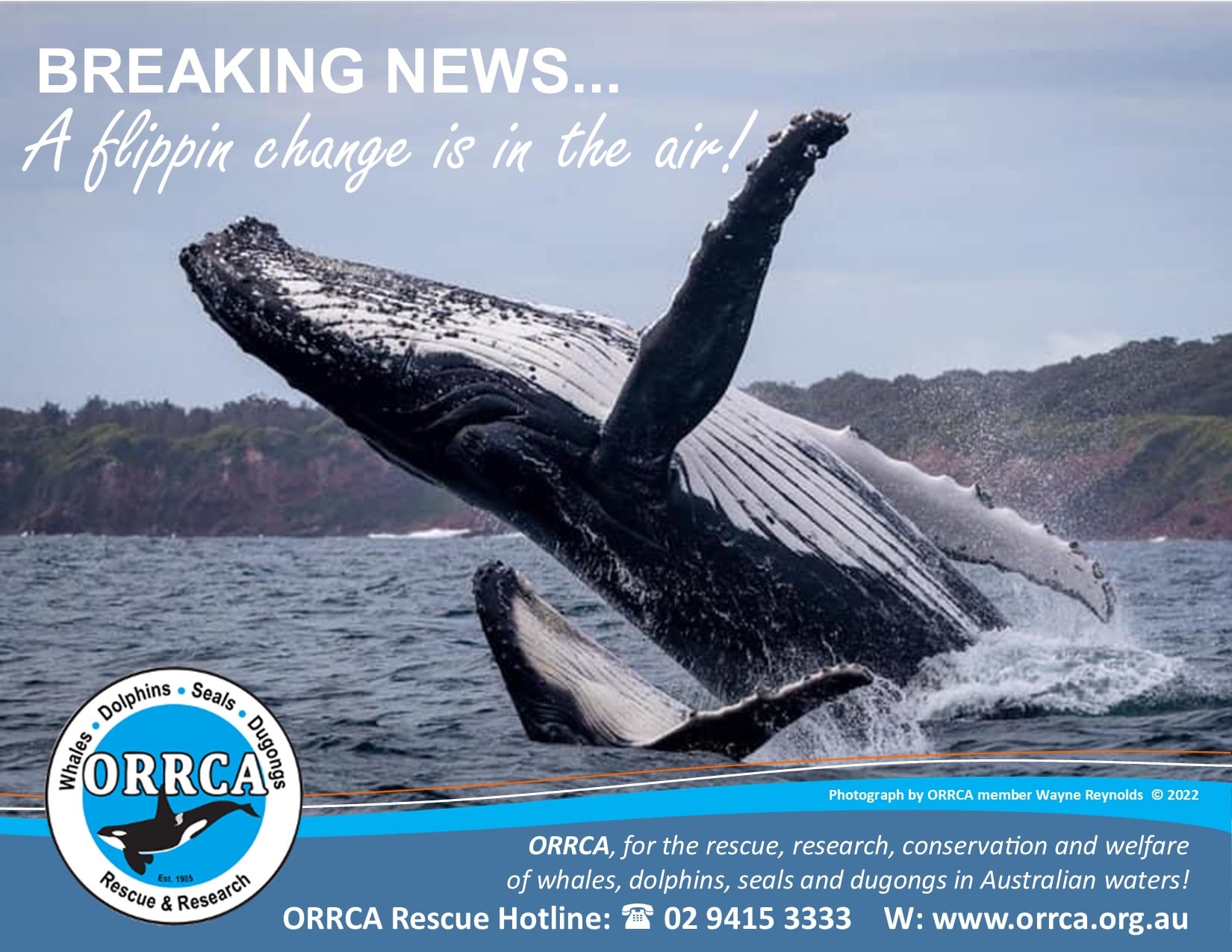
The Sydney Edible Garden Trail 2022: March 26-27 - Local Sites
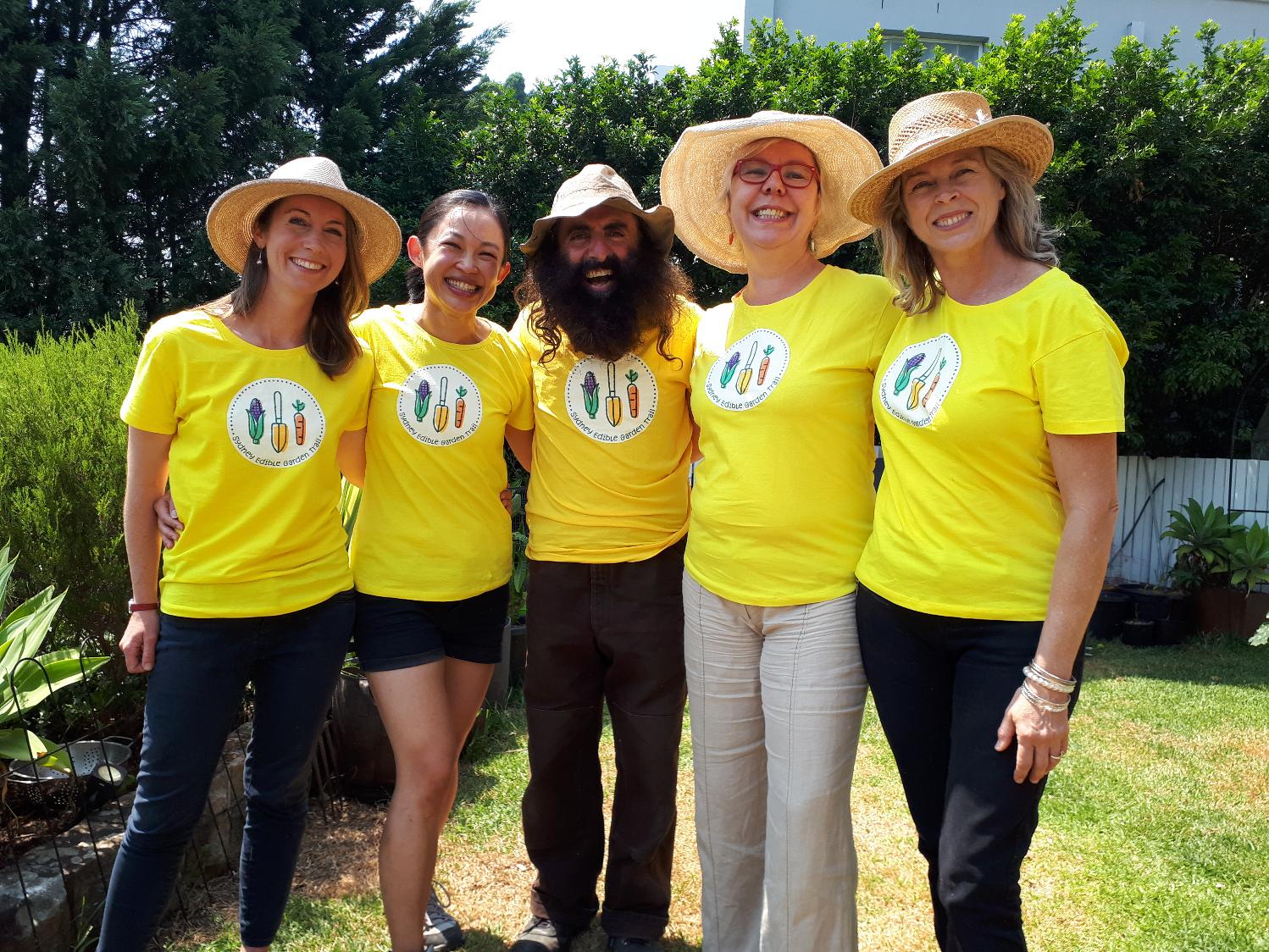
Peek inside some of Sydney’s private backyard fruit and veggie gardens this March, and discover their secrets to living sustainably.
Whether you’re a new or experienced gardener, the best way to learn how to grow juicy fruit and vegetables in your own backyard is to talk to a gardener who’s already doing it. Sydneysiders will have the opportunity to do this over the weekend of 26 & 27 March 2022 when over 50 suburban, community and school gardens will open for the Sydney Edible Garden Trail (SEGT).
Matthew Elphick, one of the garden hosts who participated last year, was inspired to reopen his garden again this year. He’s looking forward to the 2022 trail, saying “It was so wonderful to open last year and have people come through the garden and see how excited they are. You get to see the garden through their eyes, things that you don’t think much about, they find amazing. It’s such a great opportunity to meet like-minded people.”
With the motto “We don’t just grow food, we grow sustainable communities”, SEGT arranges for gardens to open to the public and allocates profits from ticket sales towards building stronger community and school gardens through a grants program with 8 gardens provided with grants in 2021.
This year the trail is extending to the wider Sydney metropolitan area with many new gardens included. Tickets are now on sale at https://sydneyediblegardentrail.com/tickets/
Those in our area listed so far for the 2022 edition of SEGT include:
Newport Community Garden
We are a membership based Community Garden of local neighbours who get together to learn about organic gardening, sustainable living, socialise and have a good time!
NCG has been running for over 8 years and from humble beginnings is now a vibrant, sustainable and inviting space with over 35 garden beds, compost bays, worms farms and native bee hive, green house, water tanks and garden shed.
We grow organic fruits, vegetable and herbs. We cultivate our compost, make our own natural pesticides and grow from seeds saved from our seasonal harvest.
It’s not just hard work, we are very social too and always finish the day with a cuppa and chat with local community members.
In November 2021 Newport Community Garden were announced as one of fifty SEGT GRANT RECIPIENTS 2021.
The grant will be used to attract local birdlife and bees by planting some native bush food plants and others native plants.
Newport Community Garden Profile of the Week
“The glory of gardening: hands in the dirt, head in the sun, heart with nature. To nurture a garden is to feed not just on the body, but the soul.” - Alfred Austin
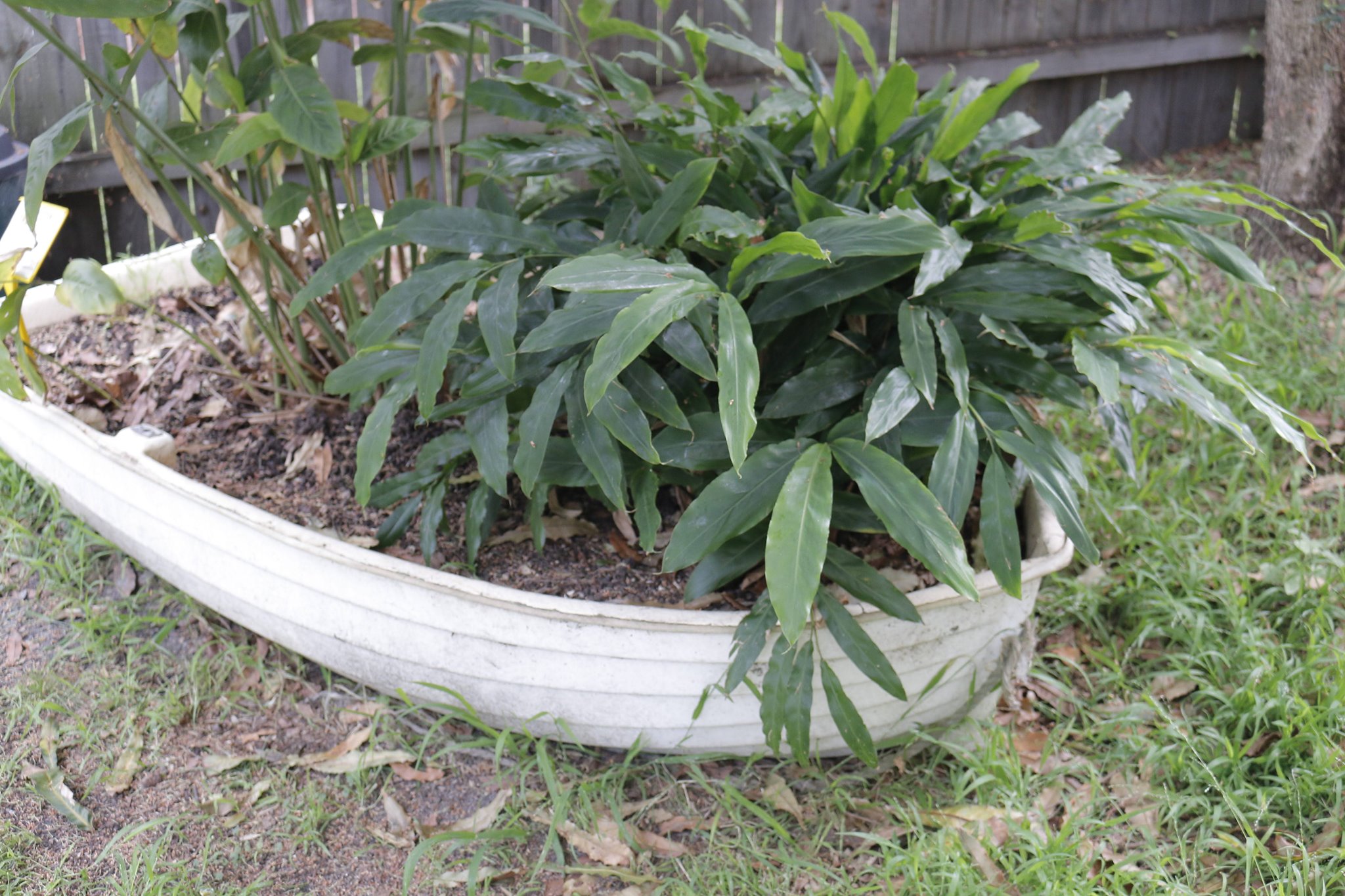
Great reuse of an old boat in the Newport Community Garden
Local Wildlife Rescuers And Carers State That Ongoing Heavy Rains Are Tough For Us But Can Be Tougher For Our Wildlife:
- Birds and possums can be washed out of trees, or the tree comes down, nests can disintegrate or hollows fill with water
- Ground dwelling animals can be flooded out of their burrows or hiding places and they need to seek higher ground
- They are at risk crossing roads as people can't see them and sudden braking causes accidents
- The food may disappear - insects, seeds and pollens are washed away, nectar is diluted and animals can be starving
- They are vulnerable in open areas to predators, including our pets
- They can't dry out and may get hypothermia or pneumonia
- Animals may seek shelter in your home or garage.
You can help by:
- Keeping your pets indoors
- Assessing for wounds or parasites
- Putting out towels or shelters like boxes to provide a place to hide
- Drive to conditions and call a rescue group if you see an animal hit (or do a pouch check or get to a vet if you can stop)
- If you are concerned take a photo and talk to a rescue group or wildlife carer
There are 2 rescue groups in the Northern Beaches:
Sydney Wildlife: 9413 4300
WIRES: 1300 094 737
Please be patient as there could be a few enquiries regarding the wildlife.
Generally Sydney Wildlife do not recommend offering food but it may help in some cases. Please ensure you know what they generally eat and any offerings will not make them sick. You can read more on feeding wildlife here

Information courtesy Ed Laginestra, Sydney Wildlife volunteer. Photo: from Esther Andrews.
Aviaries + Possum Release Sites Needed

Asparagus Fern Flowering Now: Dispose Of This Weed To Stop The Spread
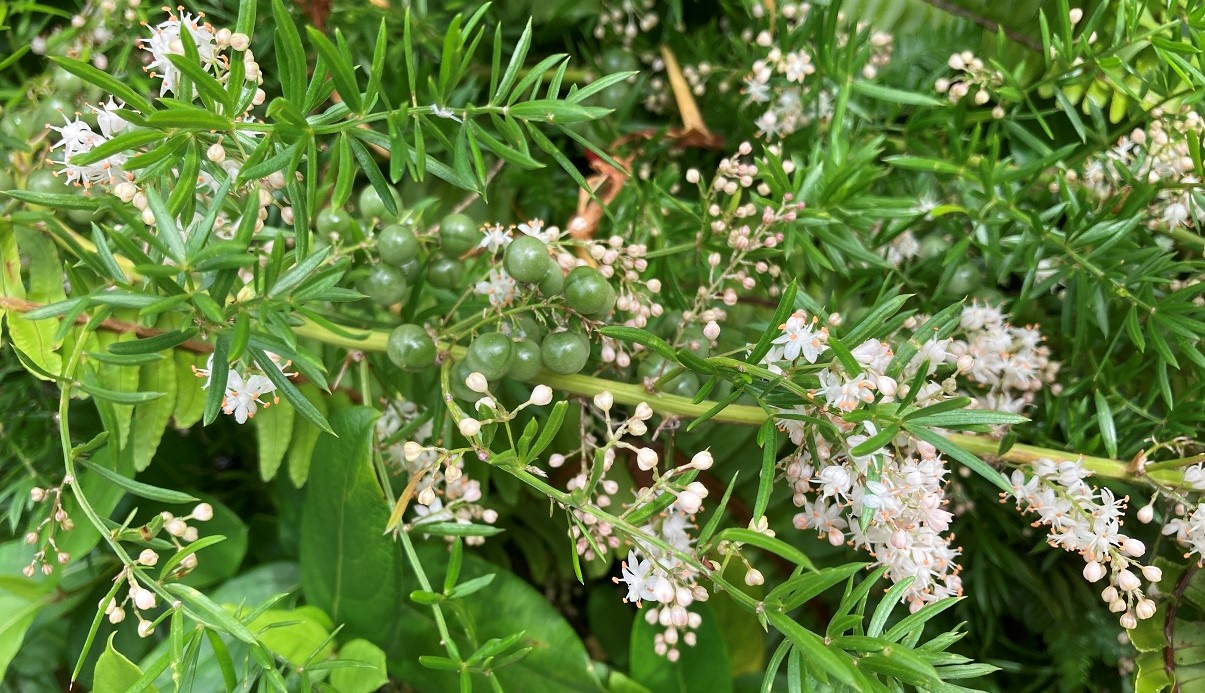
Sydney Wildlife Rescue: Helpers Needed

Bushcare In Pittwater
Where we work Which day What time
Avalon
Angophora Reserve 3rd Sunday 8:30 - 11:30am
Avalon Dunes 1st Sunday 8:30 - 11:30am
Avalon Golf Course 2nd Wednesday 3 - 5:30pm
Careel Creek 4th Saturday 8:30 - 11:30am
Toongari Reserve 3rd Saturday 9 - 12noon (8 - 11am in summer)
Bangalley Headland 2nd Sunday 9 to 12noon
Bayview
Winnererremy Bay 4th Sunday 9 to 12noon
Bilgola
North Bilgola Beach 3rd Monday 9 - 12noon
Algona Reserve 1st Saturday 9 - 12noon
Plateau Park 1st Friday 8:30 - 11:30am
Church Point
Browns Bay Reserve 1st Tuesday 9 - 12noon
McCarrs Creek Reserve Contact Bushcare Officer To be confirmed
Clareville
Old Wharf Reserve 3rd Saturday 8 - 11am
Elanora
Kundibah Reserve 4th Sunday 8:30 - 11:30am
 Mona Vale
Mona Vale Mona Vale Beach Basin 1st Saturday 8 - 11am
Mona Vale Dunes 2nd Saturday +3rd Thursday 8:30 - 11:30am
Newport
Bungan Beach 4th Sunday 9 - 12noon
Crescent Reserve 3rd Sunday 9 - 12noon
North Newport Beach 4th Saturday 8:30 - 11:30am
Porter Reserve 2nd Saturday 8 - 11am
North Narrabeen
Irrawong Reserve 2nd Saturday 2 - 5pm
Palm Beach
North Palm Beach Dunes 3rd Saturday 9 - 12noon
Scotland Island
Catherine Park 2nd Sunday 10 - 12:30pm
Elizabeth Park 1st Saturday 9 - 12noon
Pathilda Reserve 3rd Saturday 9 - 12noon
Warriewood
Warriewood Wetlands 1st Sunday 8:30 - 11:30am
Whale Beach
Norma Park 1st Friday 9 - 12noon
Western Foreshores
Coopers Point, Elvina Bay 2nd Sunday 10 - 1pm
Rocky Point, Elvina Bay 1st Monday 9 - 12noon
Gardens And Environment Groups And Organisations In Pittwater
Tracking Paddles Of Platypuses In The Blue Mountains
March 23, 2022
Platypus DNA has been detected at 29 sites in the Blue Mountains due to a ground-breaking detection technique funded by the Australian and NSW Governments. Federal Minister for the Environment Sussan Ley has stated this week the use of environmental DNA tracking was vital in supporting the recovery of the elusive platypus after the Black Summer bushfires.
“If we want to best support the recovery of species like the platypus, we need coordinated action on the ground that includes monitoring and research across the entire the range of the animal,” Minister Ley said.
“Using cutting-edge eDNA technology will help us understand more about the platypus – simply locating this iconic native species will help remove one of biggest obstacles we have faced in supporting its recovery after the fires.
“It may be improving water quality by fixing soil erosion or removing sediment and debris from rivers to help them feed, but if we know where the platypus live, we can deliver the right support to the right location.”
The NSW Minister for Environment James Griffin said that until recently, tracking teams would need to spend hours beside waterways waiting for the elusive mammals to appear.
“What we’re doing now is using high-tech DNA science to build a snapshot of how platypuses are faring, particularly after the recent devastating bushfires in the Blue Mountains,” Mr Griffin said.
“So far, we’ve discovered platypus DNA at 29 of the 67 National Parks sites sampled, including in some waterways we didn’t previously know they lived in.”
As they swim, platypuses shed small traces of skin cells or body secretion into waterways, which can be detected via environmental DNA testing of water samples.
More sampling will take place in Autumn, when breeding females emerge from their burrows with their puggles and take to the water.
“These mammals can face threats of habitat loss, predation by feral animals and they can drown if they become tangled in fishing lines or yabby traps,” Mr Griffin said.
“I want to make sure we’re doing all we can to protect the species, which is why this research is so important. It’s helping us ensure precious platypus habitat is being conserved and protected now and into the future.”
So far, platypuses have been detected in the Blue Mountains, Wollemi, Kanangra-Boyd, Nattai, Mount Royal, Turon, Marrangaroo and Bangadilly National Parks and Upper Nepean State Conservation Area.
The project is being delivered by the NSW Government, supported by $23,000 from the Australian Government’s Bushfire Recovery for Wildlife and their Habitats fund.
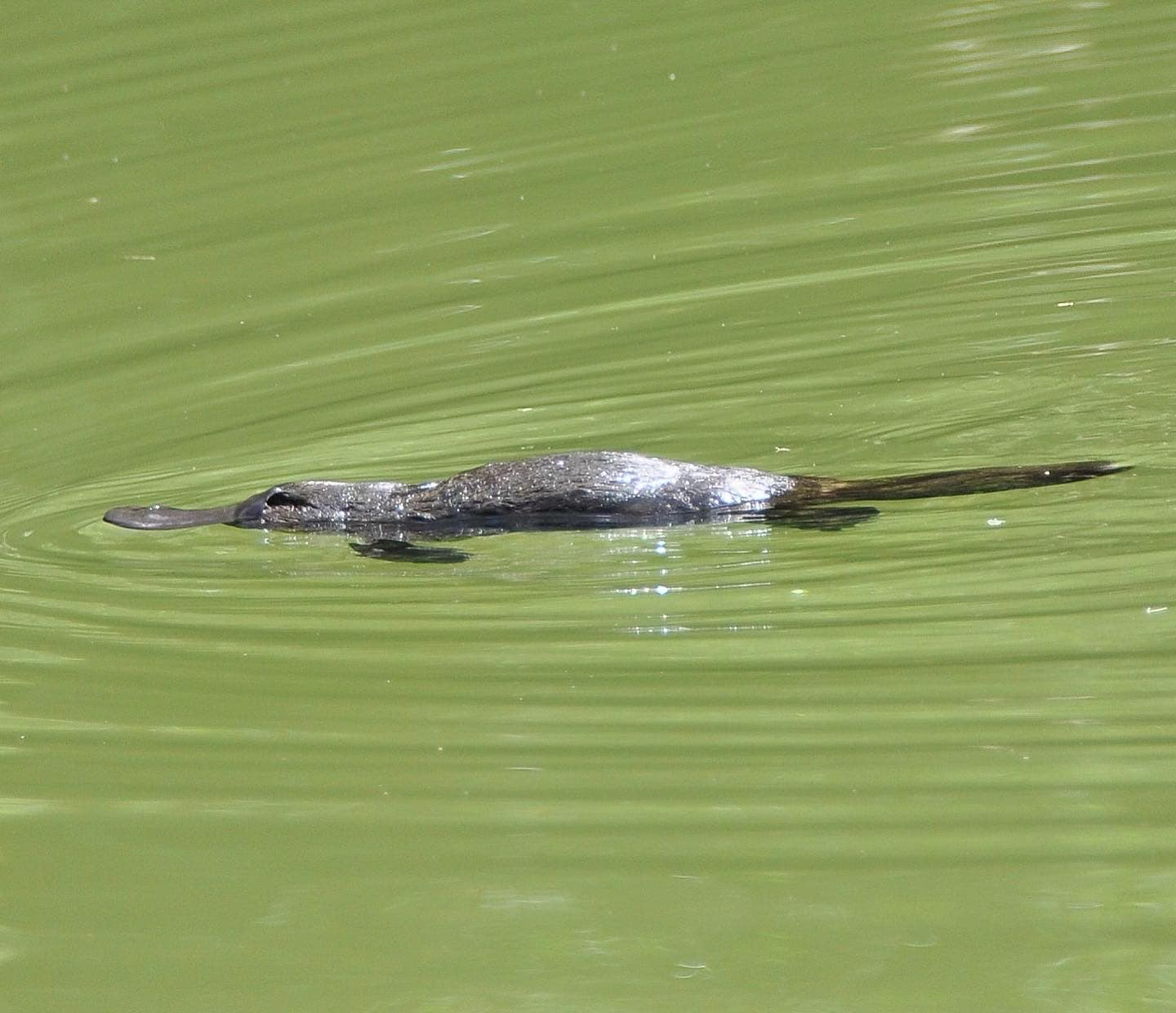
Photo: NSW NP&WS/OEH
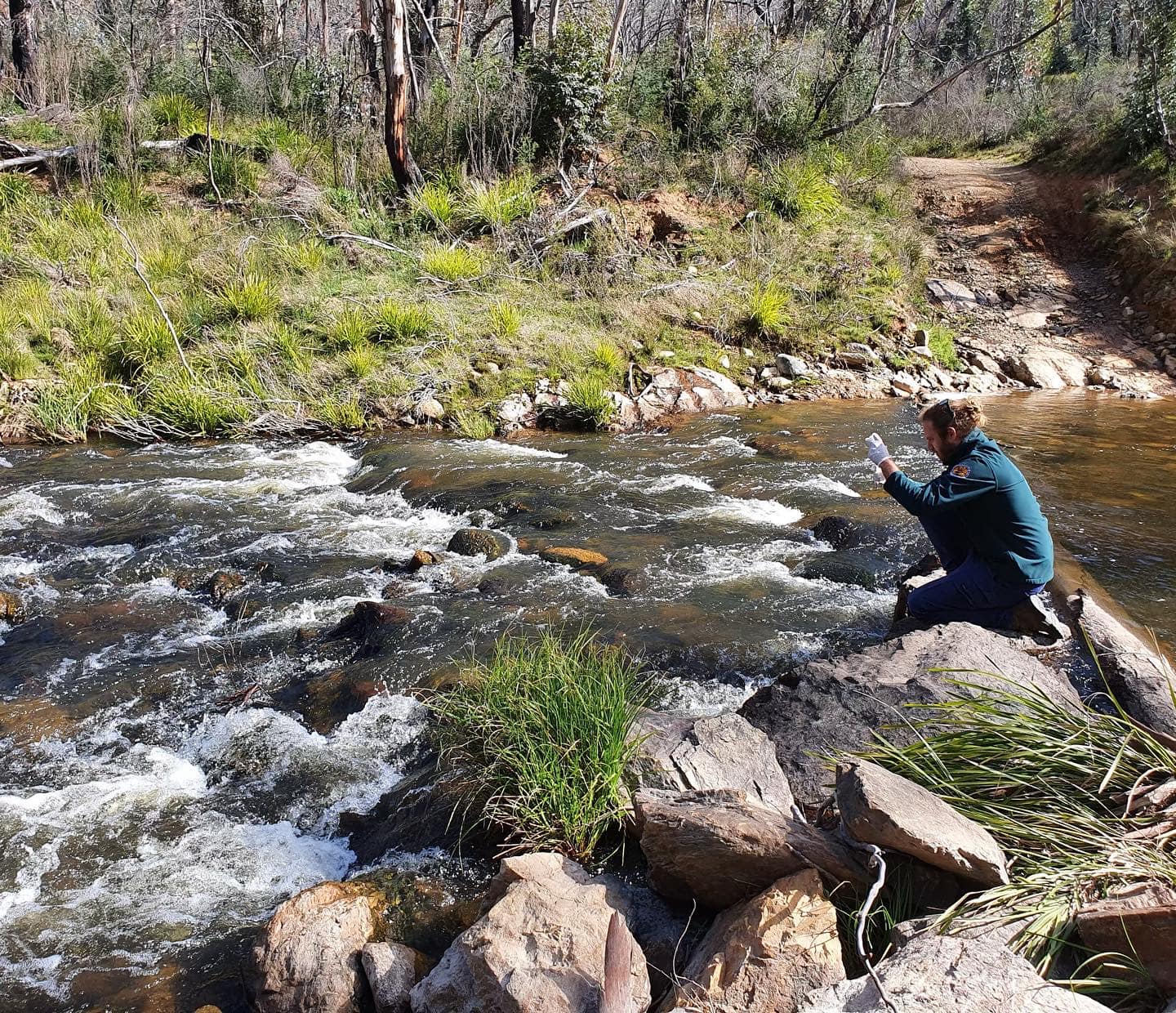
Photo: NSW NP&WS/OEH
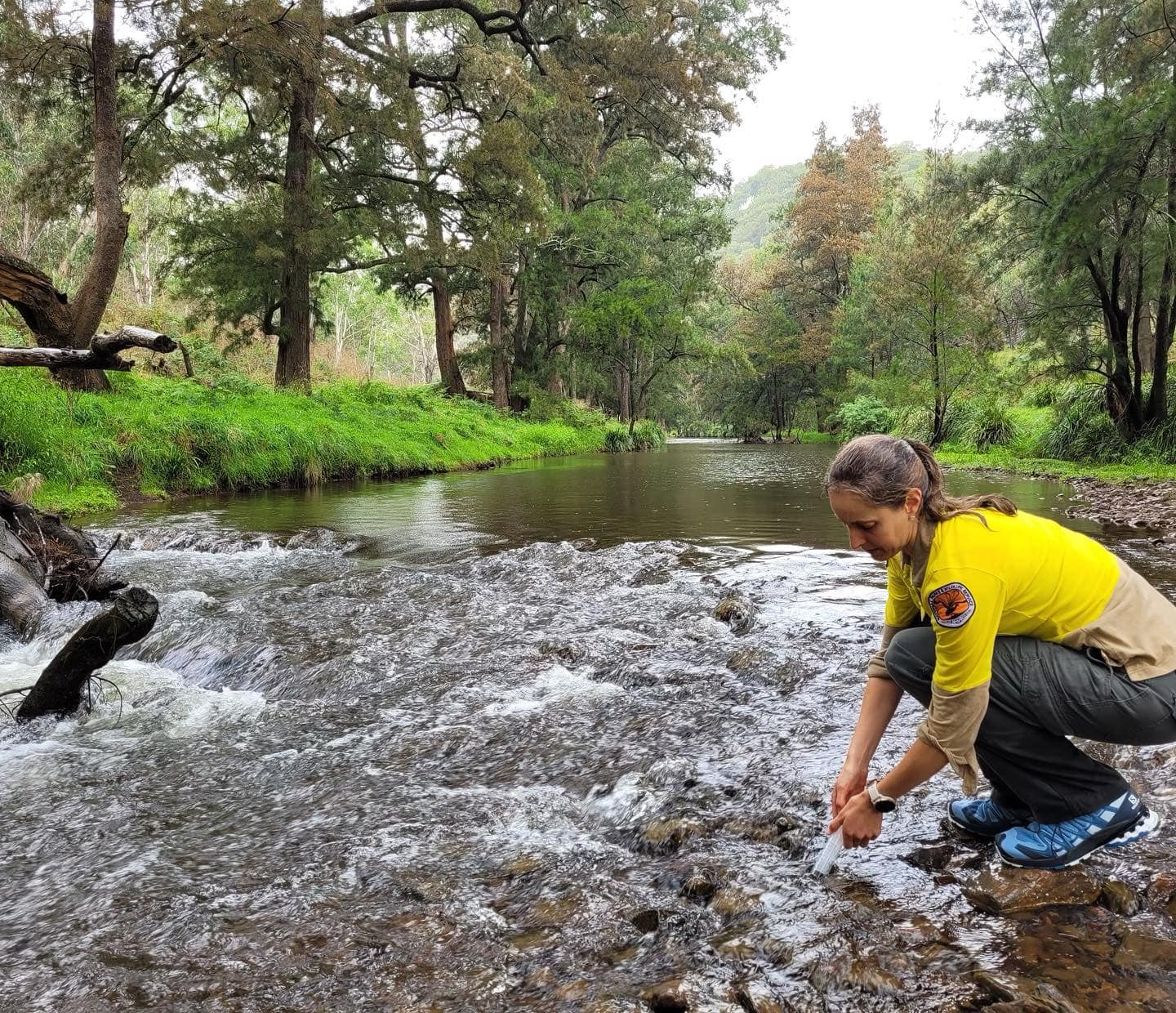
Photo: NSW NP&WS/OEH
Summer Soaking Brings Superb Results For Endangered Orchid
March 23, 2022
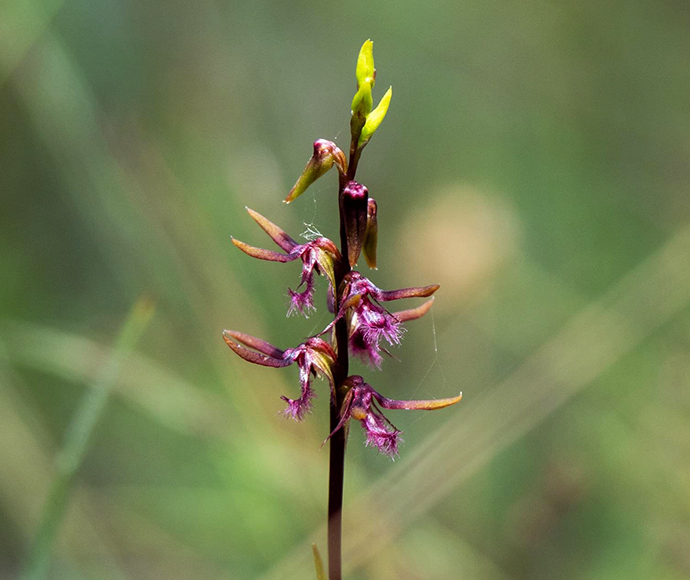 The endangered superb midge orchid has continued its streak of record-breaking seasons, with a high number of plants found across the Southern Tablelands this summer, NP&WS reportr
The endangered superb midge orchid has continued its streak of record-breaking seasons, with a high number of plants found across the Southern Tablelands this summer, NP&WS reportr
Saving our Species ecologist Erika Roper said recent summer rains have prompted an explosion of these miniature raspberry-scented orchids in the bush near Nerriga and Braidwood.
'Before the fires there were only a handful of known plants and historical records, but since 2020 we have discovered more than 300 plants spread over 3 sites,' Ms Roper said.
'The number alone is impressive but even more so when you consider just how hard it is to find this plant.
'Like many orchids, midge orchids spend much of the year below ground as a tuber, before putting up a single narrow stem that develops a flower spike.
'The stem looks exactly like a chive, the kind you grow in the veggie garden, so even when you know exactly what you are looking for, it's still tricky surveying for this tiny plant.
'Fortunately, orchid-spotting is my superpower and I've found some emerging stems that are only around 1 centimetre high.
'We're into our third summer of soaking rains and we think that is why we are seeing such a response from this and other threatened and common midge orchid species in the area.
'The fires also reduced many of the threats to this species, such as grazing by herbivores, allowing the orchids to live up to their name and put on a superb show.
'Coloured varying shades of dark pink and purple with fringed 'petals', they are one of the prettiest orchids around, but most people have never seen or even heard of it.
'Last month's surveys also found new plants growing in unburnt areas, including along wombat tracks and roadsides, and we have installed temporary cages to protect these individuals from damage.
'It's just amazing to see these extremely rare and pretty unusual looking plants bouncing back.
'It really reconfirms the extraordinary and resilient biodiversity that can be found in this part of the world,' Ms Roper said.
The Saving Our Species program is investing almost $100,000 into orchid conservation in the Illawarra and surrounding regions. This funding supports ecologists like Erika to commit resources towards threat control, surveying and monitoring, all of which help secure species like the superb midge orchid into the future.
Superb midge orchid (Genoplesium superbum) Photo Credit: E Roper/DPE
NPWS Investigating Ongoing Vandalism At Greenfield Beach
March 24, 2022
Authorities are appealing for information following vandalism at the popular Greenfield Beach Picnic Area in Jervis Bay National Park. Nathan Cattell, Acting Area Manager with the NSW National Parks and Wildlife Service (NPWS) said that over recent months vandalism at this family-friendly picnic area has hit unprecedented levels, with regular reports of damage and anti-social behaviour.
'We are working with the NSW Police to try to control this behaviour that is stopping others from enjoying the site,' Mr Cattell said.
'Damage to visitor facilities, including destroying the toilet block and sinks not only costs thousands of dollars to repair but also leaves the area out of action while we clean up.
'Broken glass and smashed bottles are also littering the site which makes the area unsafe for people who are having a picnic or stopping off along their bushwalk.
'The time to repair vandalised facilities takes staff away from other critical jobs including maintenance of walking trails, other visitor facilities and conservation work.
'NPWS is working closely with the local Police and both agencies will be stepping up patrols to control this anti-social behaviour and find who is responsible.
'Local residents have been very helpful in providing information as part of this investigation and we ask anyone with information to please come forward.
'This is not a one off. There has been consistent vandalism at the site prompting NPWS to install remotely active CCTV cameras and other measures to curb this behaviour.
'Jervis Bay National Park is world renowned, attracting visitors from overseas and Australia and we want them to enjoy the area's natural beauty and not see broken, vandalised facilities,' Mr Cattell said.
This deliberate damage at Greenfield Beach is a criminal offence, attracting fines of between $500 and $10,000.
People with any information regarding the vandalism are urged to call NPWS at Ulladulla on 02 4454 9500, or Crime Stoppers on 1800 333 000.
Scientists Find Climate Main Factor Behind Dropping Water Levels At Thirlmere Lakes
March 24, 2022
An extensive research program into fluctuating water levels at Thirlmere Lakes has confirmed that climate variations were largely responsible for the ancient lake system's decline in water levels over the last decade. The 4-year study found no direct links between the drying of Thirlmere Lakes and the nearby coal mine but could not rule out a smaller (relative to climate) impact on water levels from mining.
The Thirlmere Lakes is a group of waterways in Wollondilly, south of Sydney, in the Thirlmere Lakes National Park that includes Lake Gandangarra, Lake Werri Berri, Lake Couridjah, Lake Baraba and Lake Nerrigorang.
The mystery of the drying of the lakes, which are thought to be 15 million years old, has been investigated for nearly a decade.
Dr Peter Scanes, Acting Director of Water, Wetlands and Coasts at the Department of Planning and Environment (DPE), said the research confirmed factors like rainfall and evaporation were responsible for most of the recent drying and water loss at the freshwater lakes.
'The drying has been increased by the recent droughts but our investigations of sediment cores taken from the lakes also found that the lakes have dried before,' Dr Scanes said.
'In fact, there was a major drying period around 12,000-21,000 years ago. The last 120 years of historical records also indicate that the Lakes have dried intermittently.
'Our scientists also looked at the underlying geology of the 5 lakes. Those studies found the lakes are like leaky bathtubs. They fill with water after rain and dry out on the surface from the sun but they can also leak into the groundwater.
'Understanding the dynamics of how the lakes work is important for both scientists and the local community, who have been very interested in what is behind the recent drop in water levels.'
The $1.9 million research program was funded by the NSW Government and included scientists from the department, the University of NSW, the University of Wollongong and the Australian Nuclear Science and Technology Organisation (ANTSO) with support from the NSW National Parks and Wildlife Service.
The researchers looked at the lake system's sensitivity to external influences, the interaction between surface water and ground water, how water flows into and out of the lakes as well as its sediments and underlying geology.
Dr Scanes said researchers found no direct connection between Thirlmere Lakes and a nearby coal mine.
'Relative to climate, the impact of mining and groundwater extraction would be smaller, given climate factors are responsible for between 83 to 98% of water level fluctuations in recent times,' Dr Scanes explained.
'However mining impacts could not be ruled out as there was not enough data collected prior to mining occurring nearby. We therefore have no yardstick for comparison to conditions before mining took place.'
A 2012 Thirlmere Lakes Inquiry report by an Independent Committee speculated that the most recent changes in the water levels were due to climatic variations such as droughts and floods. However these earlier studies did not have access to the detailed data on surface water, groundwater, sediments and geology collected in the current program.
A review of those findings by the NSW Chief Scientist and Engineer in 2013 agreed more research was needed into how the lake system works. This resulted in the $1.9 million Thirlmere Lakes Research Program launching in 2017.
The findings of the Thirlmere Lakes Research Program can be found online.
Following significant rainfall events in June 2016, February 2020, March 2021 and more recently, Thirlmere Lakes are potentially at their highest levels for the last decade.
Fast Facts
- Water into Thirlmere Lakes is primarily rainfall run-off
- The main cause of water loss from the lakes is evapotranspiration
- A smaller proportion of water is also lost from each lake to shallow groundwater.
- The groundwater loss is different for each lake.
- Thirlmere Lakes have had five major filling events due to rain over the last 6 years – June 2016, February 2020 and March 2021, January 2022, March 2022.
- It is likely the lakes will continue to swing between low and higher water levels depending on drought and major rainfall events.
In the longer term mining impacts on regional groundwater may affect lake water levels by reducing inflows to lakes and increasing the hydraulic gradient (water flow path) away from the lakes.
Thirlmere Lakes National Park is part of the Greater Blue Mountains World Heritage Area.
Hunter Diversification Panel No Place For A Coal Mining Lobbyist Environmentalists State
March 25, 2022
The appointment of a NSW Minerals Council representative to an expert panel that is meant to oversee the Hunter Region’s diversification beyond coal risks is undermining the work the group was established to do, according to Lock the Gate. The Alliance says the appointment of a member of the coal lobby interferes with the panel’s purpose and creates a risk that some of the transition funding may end up in the hands of multi-national coal mining companies.
The NSW Perrottet Government yesterday revealed the eight person interim expert panel that would guide spending from the $25 million per annum Royalties for Rejuvenation fund.
The Royalties for Rejuvenation interim Hunter Expert Panel members are;
- Amy Cooper, Hunter Valley Wine & Tourism Association
- Bob Hawes, Business Hunter
- Deb Barwick, NSW Indigenous Chamber of Commerce
- Ivan Waterfield, HunterNet
- James Barben, NSW Minerals Council
- Joe James, Hunter Joint Organisation
- Sarah Withell, Upper Hunter Mining Dialogue
- Warwick Jordan, Hunter Jobs Alliance
The fund was created to ensure coal mining communities have the support they need to develop other industries in the medium and long-term.
Legislation was introduced into the NSW Parliament this week to create the Fund and establish the Expert Panels - this will be made available through the Mining and Petroleum Legislation Amendment Bill 2022.
In an address given in parliament about the bill The Hon. Paul Toole stated;
The Royalties for Rejuvenation fund delivers on a key commitment to support the growth of new jobs and industries in traditional coalmining communities. That will not happen overnight but requires detailed, long-term planning to ensure the regions continue to have growth industries that offer skilled, well-paying jobs. The new section of the Act specifies the purpose of the fund:
… to alleviate economic impacts in affected coal mining regions caused by a move away from coal mining by supporting other economic diversification in those regions, including by the funding of infrastructure, services, programs and other activities.
Locals are best placed to understand their community's needs and develop emerging opportunities. That is why the bill provides for the Minister to establish expert panels to advise the Minister and make recommendations about the payments from the Royalties for Rejuvenation fund. That will ensure that regional communities and industries play a central role in shaping the fund's priorities through support and provision of comprehensive advice that will guide long-term decisions on the fund's investment. The bill establishes a requirement to review the fund after three years to consider whether the fund is meeting its policy objectives and whether the provisions in the bill remain appropriate. That review period will give the Government time to see how the fund is operating and provide an opportunity to make improvements or adjustments to the legislative framework if required.
However, a Lock the Gate Alliance spokesperson, Georgina Woods, has stated that a member of the Minerals Council on the panel would compromise its ability to make objective recommendations that diversified the Hunter’s economy.
“It makes no sense to appoint a coal mining lobbyist to a panel that is meant to advise on the best way to diversify the Hunter’s economy beyond coal,” she said.
“We are calling on NSW Deputy Premier Paul Toole to remove the NSW Minerals Council’s representative, and to promise that none of this $25 million will go to coal mining companies.
“We’re pleased the government is moving swiftly to get the Hunter on the road to renewal, but the coal mining industry already dominates the political and economic landscape in the Hunter. It doesn’t need any more influence. We need a panel that gives community, environment, Indigenous and local business groups space to plan for the diversification of the region beyond coal.
“The coal mining lobby is yet to acknowledge that expanding coal is completely at odds with global efforts to prevent catastrophic climate change.
“At this crucial moment, when we finally have funding to help diversify the Hunter’s economy, the NSW Perrottet Government must ensure industries and communities other than coal mining have space to grow and plan - without the coal lobby breathing down their necks.”
Director's Cut: What Happens On Nuyina
Published by the Australian Antarctic Division
Spectacular vision from Antarctica, in a light-hearted behind-the-scenes look at the first voyage south by Australia's new icebreaker RSV Nuyina.
Little Penguins To Benefit From CSIRO’s New Invasive Weed Solution
March 24, 2022
The CSIRO reports that Little penguins in Victoria will be among the native species to benefit from a new biocontrol solution to tackle the invasive coastal weed ‘sea spurge’, which will be released in Port Campbell National Park by Australia’s national science agency, CSIRO, and Parks Victoria today.
CSIRO researchers have found that the fungus, Venturia paralias, specifically attacks the invasive coastal weed called sea spurge (Euphorbia paralias), which threatens nesting sites of native species including little penguins (Edyptula minor), as well as impacting on the wider coastal ecosystem. Current control methods include removing the weed by hand or chemical sprays.
The fungus will be released by CSIRO and Parks Victoria at the world-renowned London Bridge, a natural offshore arch in Port Campbell National Park. The park is a popular tourist destination, with visitors coming to see the pristine coastline, Twelve Apostles and little penguins returning to their beach nests after fishing.
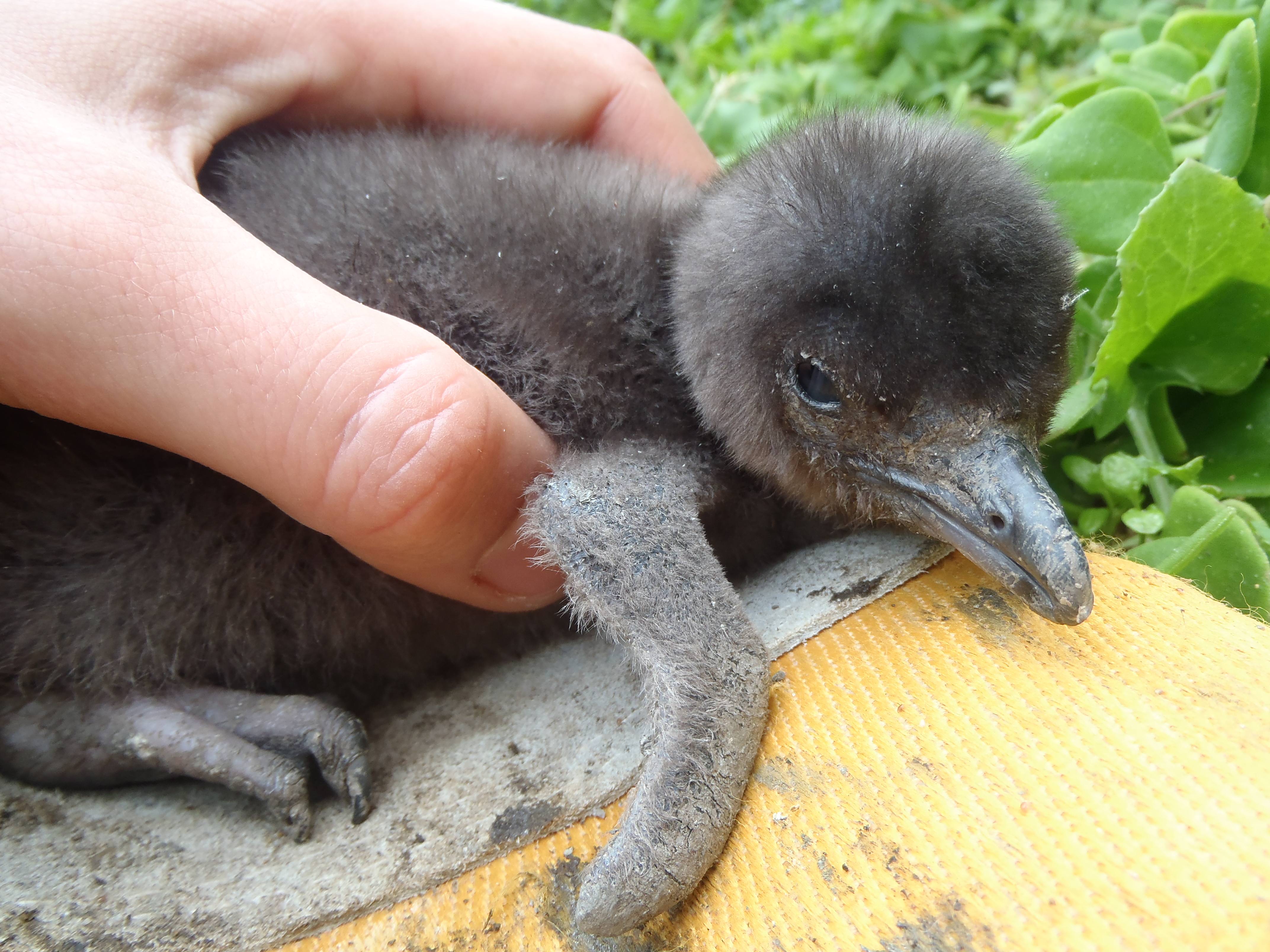
Little penguin chick, Port Campbell National Park. Photo: Parks Victoria
CSIRO scientist Dr Gavin Hunter said sea spurge is problematic for nesting shorebirds, including penguins, as the weed can alter sand dune structure and displace vegetation which could negatively impact nesting sites of shorebirds.
“The weed also has a sap which can cause irritation to animals as well as humans,” Dr Hunter said.
“Sea spurge grows along Australia’s southern coastline and is a concern for coastal ecosystems. We’re hopeful the biocontrol agent will help reduce the dense weed from penguin nesting sites at Port Campbell, and many other beaches along the coastline where the weed occurs.
“There are many challenges with current methods for removing sea spurge so finding a biocontrol agent for the weed was important to complement existing management strategies of hand pulling and chemical sprays that are very labour intensive, costly, and cannot easily be deployed in difficult-to-access beaches.”
CSIRO research technician Ms Caroline Delaisse will release the biocontrol agent at Port Campbell and said the fungus was originally found on the Atlantic and Mediterranean coast of France causing leaf and stem lesions on sea spurge plants.
“The fungus was isolated from these diseased plants and initial tests to explore its host range were performed in France. Following positive results from these tests, the fungus was imported to CSIRO’s quarantine facility in Canberra and studied extensively," Ms Delaisse said.
“Our research found that the fungus is highly specific towards sea spurge. Based on our results, the fungus was approved by the regulator for release in Australia.”

A fungus, Venturia paralias was found on the Atlantic coast of France. Photo: CSIRO
Infected sea spurge plants can topple. Photo: CSIRO
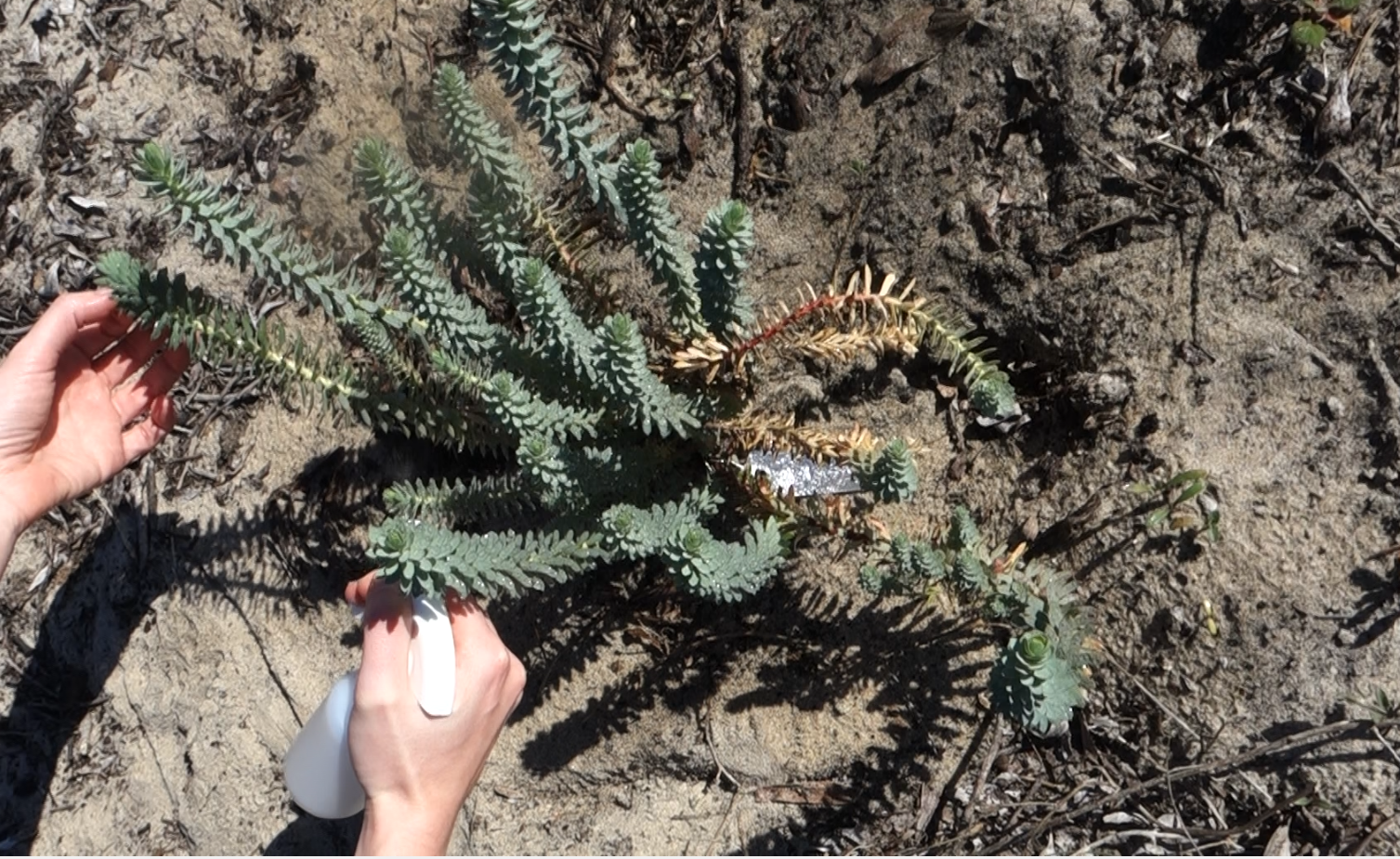
Sea splurge being sprayed with the mixture. Photo: CSIRO
Parks Victoria manages around 70 per cent of Victoria’s coast and is helping CSIRO release the fungus at several sites, in addition to Port Campbell National Park.
Parks Victoria Program Leader for Marine and Coasts Mr Mark Rodrigue assisted in the first releases of the fungus in Victoria and said this was an exciting advancement in weed control that would help protect the health of Victoria’s beautiful coast and native animals, such as little penguins and plants that depend on beach and dune habitats.
“If it successfully establishes, the biocontrol will be particularly important for managing this highly invasive weed in the more remote parts of the coast where access is very difficult for manual or chemical control,” Mr Rodrigue said.
“CSIRO has paved the way for land managers like Parks Victoria and volunteers to safely target areas of sea spurge infestation, with solid science and comprehensive guidelines developed to support us.”
A prolific seed producer, a mature sea spurge plant can produce up to 20,000 seeds per year and can grow anywhere on the beach above the high-water mark, taking over sand and dune vegetation.
Sea spurge can grow anywhere on the beach above the high-water mark. Photo: CSIRO
This project has been financially supported by the NSW Government as part of nearly $500,000 in funding targeting four weed species including sea spurge.
Sea spurge is an introduced plant from Europe that has invaded coastal ecosystems from Geraldton north of Perth in Western Australia through to the mid north coast of New South Wales and around Tasmania’s coastline.
CSIRO is calling for volunteers to help with the biocontrol release program on beaches infested with sea spurge in Victoria and Tasmania. To participate in community releases, seek approval from the land manager or owner in the first instance and then contact CSIRO scientists Gavin Hunter (gavin.hunter@csiro.au) or Caroline Delaisse (caroline.delaisse@csiro.au).
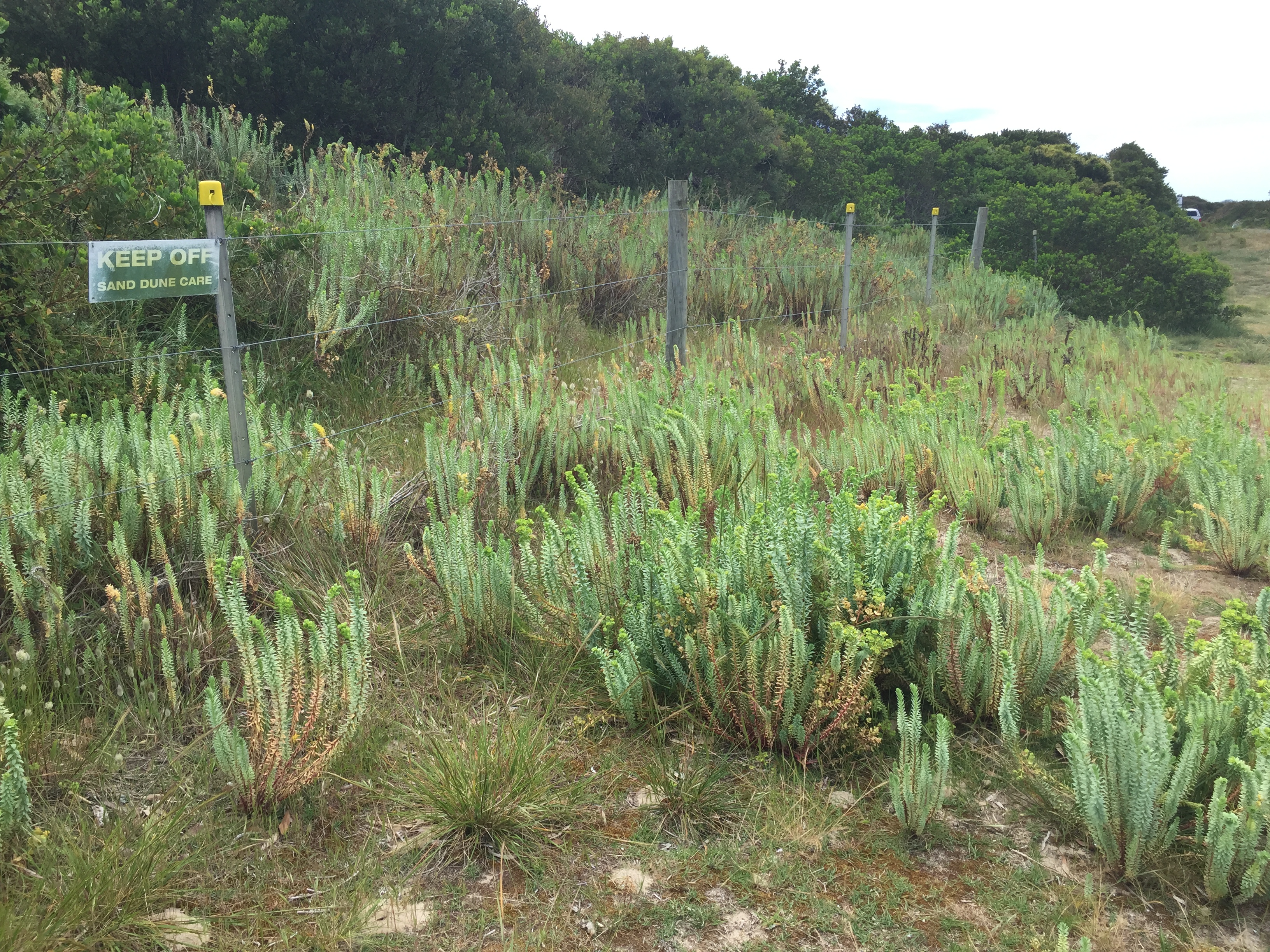
Sea spurge at Greens Beach in Tasmania. Photo: CSIRO
Sea spurge grows at Jervis Bay, NSW south coast. Photo: CSIRO
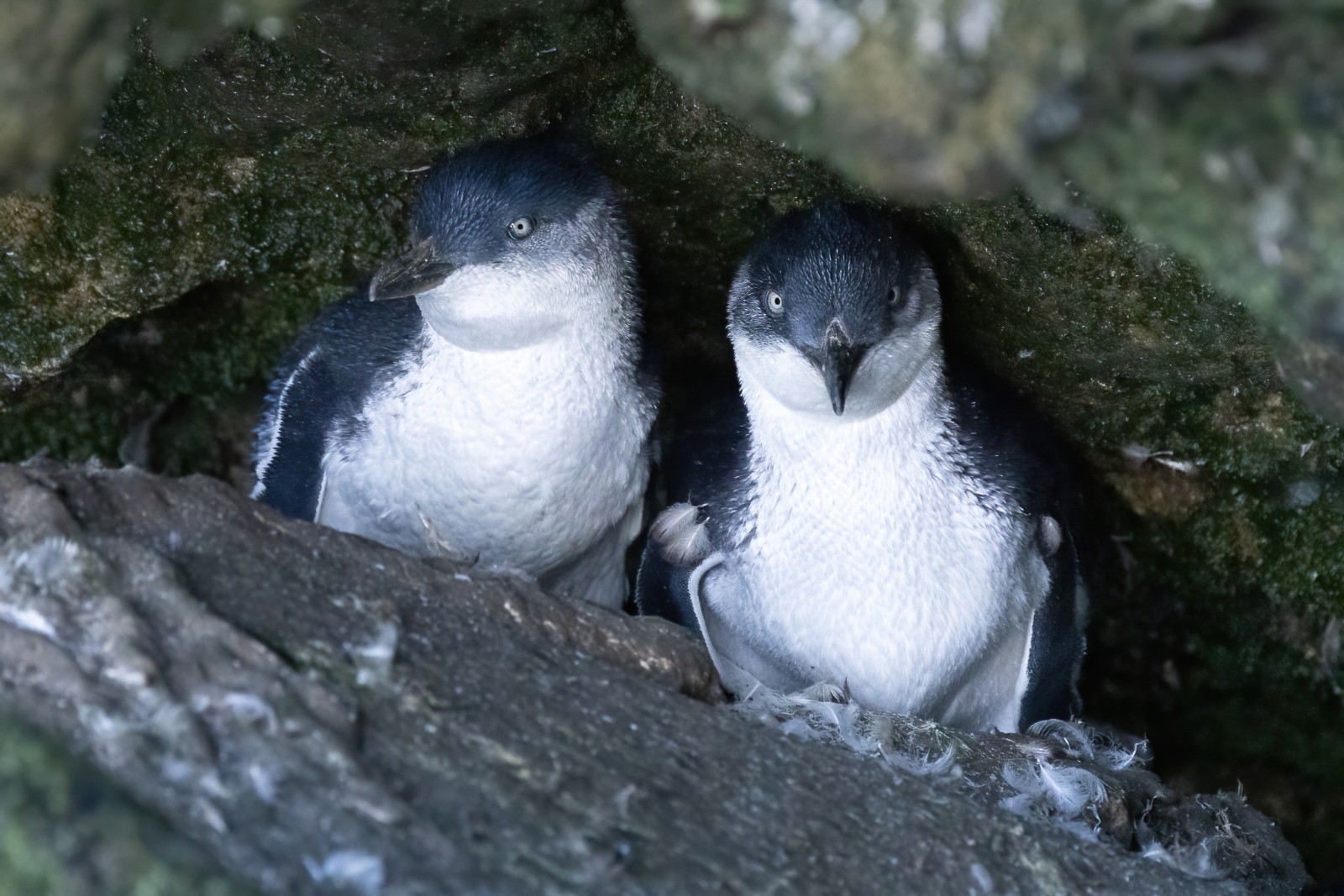
Port Campbell National Park is home to a little penguin colony. Photo: Parks Victoria
Roadmap Pinpoints Research Required For Smooth Transition To Renewables
March 25, 2022
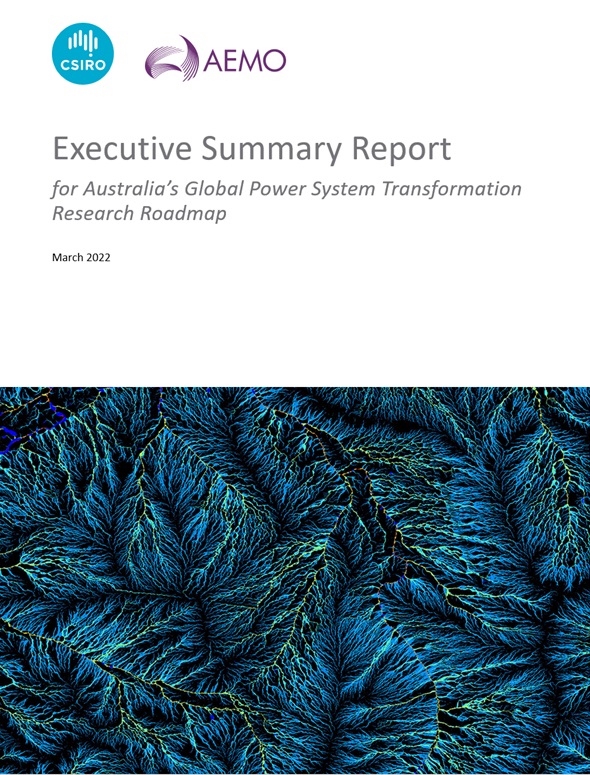 Australia’s national science agency, CSIRO today released a Roadmap highlighting the research required to continue Australia’s transition to a more secure and affordable electricity system, showing that innovation can drive the integration of renewables.
Australia’s national science agency, CSIRO today released a Roadmap highlighting the research required to continue Australia’s transition to a more secure and affordable electricity system, showing that innovation can drive the integration of renewables.
The Roadmap was developed in collaboration with the Australian Energy Market Operator (AEMO), and is based on input from leading Australian and international system operators and research agencies from the Global Power System Transformation (G-PST) Consortium.
The Consortium adapted key research questions to the Australian context, with the goal of supporting Australia’s energy transition in the long-term interests of consumers. The research areas they identified address the challenge of rapid change faced by Australia’s National Electricity Market and Wholesale Electricity Market.
Australia’s electricity systems face several key challenges, including ageing infrastructure, increasing complexity, and the need for investment in transmission and distribution.
The Roadmap summarises the outcomes of nine individual research plans, including their criticality to Australia’s energy transition, which research should be prioritised and how the research could form individual programs.
The key research topics are:
- Inverter design
- Stability tools and methods
- Control room of the future
- Planning
- Restoration and Black Start
- Services
- Architecture (Australian-specific)
- Distributed Energy Resources (DERs) (Australian-specific)
- DERs and Stability (Australian-specific)
CSIRO’s Energy Systems Research Director, Dr John Ward said the Roadmap could help forge a clear pathway to the integration of low emissions electricity.
“Across the energy system we are seeing a significant increase in renewable-generated electricity, combined with an increase in electricity requirements such as in transport, buildings, manufacturing and mining,” Dr Ward said.
“The cost of renewable energy is no longer the challenge – integrating renewable energy securely and efficiently into our electricity systems, and ensuring we have the right operational tools and capabilities in place, is what we need to solve.
“Australia has some of the world’s highest levels of rooftop solar, which means this integration challenge extends throughout our electricity system – from the largest generators through to efficiently integrating ‘distributed energy resources’ (such as solar and electric vehicles) into our homes and businesses.”
The Roadmap targets areas that will ensure ongoing energy security and reliability for Australian consumers, and an efficient and effective investment in infrastructure.
“The role of research throughout this transition is vitally important and Australia has the opportunity to lead the charge,” Dr Ward said.
Following industry consultation, CSIRO will use Roadmap priority areas to create technological steppingstones for further innovation while remaining adaptable to inevitable further change.
AEMO Executive General Manager Operations, Michael Gatt, said the research program targeted the increasing complexity facing power system operators with the rapid transition to inverter-based variable renewable generation.
“Australia is investing in renewable energy at a faster rate per capita than any other country. As Australia’s energy market operator, we’ve seen average renewable energy contribution increase to approximately 40 per cent of total or underlying demand, along with five-minute interval peaks above 60 per cent. In addition, consumer rooftop solar PV is pushing grid-scale generation out of the market under certain day-time conditions, setting minimum operational demand records across the country,” Mr Gatt said.
“The pace and scale of this transition is extraordinary. It demands new approaches to power system operations including tools, technologies, process and platforms, which complement network planning, and market and regulatory reforms.
“AEMO’s role is to design and operate a sustainable energy system that provides safe, reliable and affordable energy today, and to enable the energy transition for the benefit of all Australians. The CSIRO G-PST Research Roadmap, together with the AEMO Engineering Framework and upcoming Operations Technology Roadmap, is where the rubber hits the road in terms of providing a guide for government, industry and academia to work together to deliver a major step in achieving a net-zero emissions economy by 2050 – engineering net-zero energy systems.
“We need timely, multidisciplinary expertise and collaboration to identify and resolve the engineering and system issues involved in decarbonising Australia’s power systems. This is how we will keep the lights on for consumers while enabling an orderly transition to a safe, reliable and affordable net-zero energy future.”
The G-PST consortium intends the Roadmap to create a meaningful and holistic solution to the Australia’s energy transition.
CSIRO will soon be seeking input for phase 2 of this work.
Read the report Australia's Global Power System Transformation (G-PST) Research Roadmap
In 20 years of studying how ecosystems absorb carbon, here’s why we’re worried about a tipping point of collapse
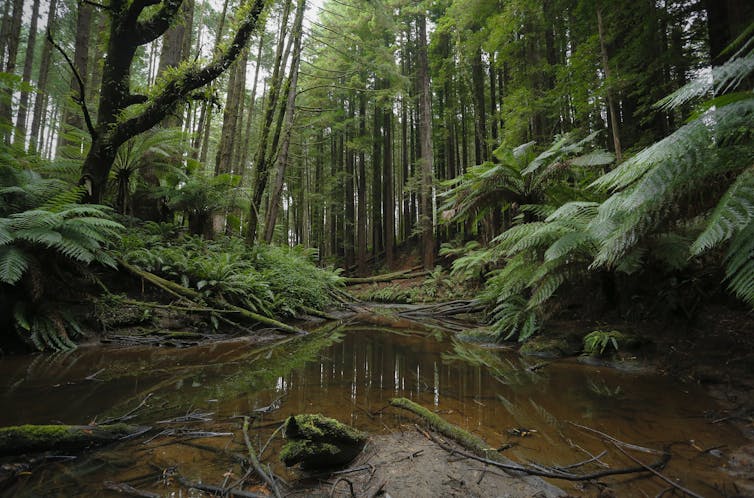
From rainforests to savannas, ecosystems on land absorb almost 30% of the carbon dioxide human activities release into the atmosphere. These ecosystems are critical to stop the planet warming beyond 1.5℃ this century – but climate change may be weakening their capacity to offset global emissions.
This is a key issue that OzFlux, a research network from Australia and Aotearoa New Zealand, has been investigating for the past 20 years. Over this time, we’ve identified which ecosystems absorb the most carbon, and have been learning how they respond to extreme weather and climate events such as drought, floods and bushfires.
The biggest absorbers of atmospheric carbon dioxide in Australia are savannas and temperate forests. But as the effects of climate change intensify, ecosystems such as these are at risk of reaching tipping points of collapse.
In our latest research paper, we look back at the two decades of OzFlux’s findings. So far, the ecosystems we studied are showing resilience by rapidly pivoting back to being carbon sinks after a disturbance. This can be seen, for example, in leaves growing back on trees soon after bushfire.
But how long will this resilience remain? As climate change pressures intensify, evidence suggests carbon sinks may lose their ability to bounce back from climate-related disasters. This reveals vital gaps in our knowledge.
Australian Ecosystems Absorb 150 Million Tonnes Of Carbon Each Year
Between 2011 and 2020, land-based ecosystems sequestered 11.2 billion tonnes (29%) of global CO₂ emissions. To put this into perspective, that’s roughly similar to the amount China emitted in 2021.
OzFlux has enabled the first comprehensive assessment of Australia’s carbon budget from 1990 to 2011. This found Australia’s land-based ecosystems accumulate some 150 million tonnes of CO₂ each year on average – helping to offset national fossil fuel emissions by around one third.
For example, every hectare of Australia’s temperate forests absorbs 3.9 tonnes of carbon in a year, according to OzFlux data. Likewise, every hectare of Australia’s savanna absorbs 3.4 tonnes of carbon. This is about 100 times larger than a hectare of Mediterranean woodland or shrubland.
But it’s important to note that the amount of carbon Australian ecosystems can sequester fluctuates widely from one year to the next. This is due to, for instance, the natural climate variability (such as in La Niña or El Niño years), and disturbances (such as fire and land use changes).
In any case, it’s clear these ecosystems will play an important role in Australia reaching its target of net-zero emissions by 2050. But how effective will they continue to be as the climate changes?
How Climate Change Weakens These Carbon Sinks
Extreme climate variability – flooding rains, droughts and heatwaves – along with bushfires and land clearing, can weaken these carbon sinks.
While many Australian ecosystems show resilience to these stresses, we found their recovery time may be shortening due to more frequent and extreme events, potentially compromising their long-term contribution towards offsetting emissions.
Take bushfire as an example. When it burns a forest, the carbon stored in the plants is released back into the atmosphere as smoke - so the ecosystem becomes a carbon source. Likewise, under drought or heatwave conditions, water available to the roots becomes depleted and limits photosynthesis, which can tip a forest’s carbon budget from being a sink to a carbon source.
If that drought or heatwave endures for a long time, or a bushfire returns before the forest has recovered, its ability to regain its carbon sink status is at risk.
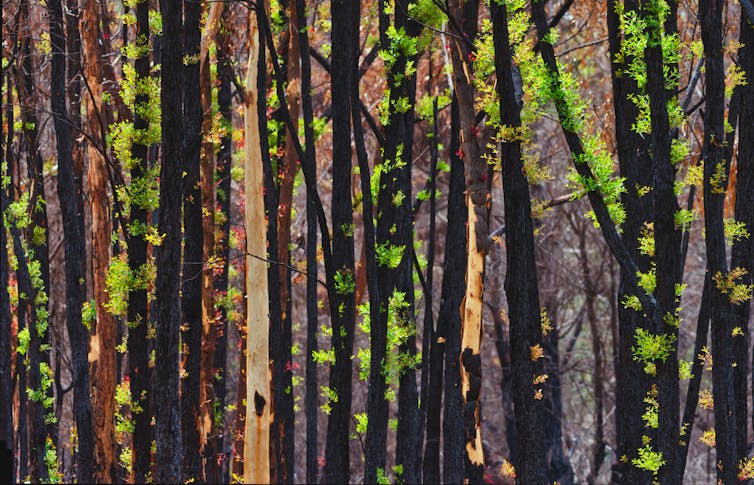
Learning how carbon sinks may shift in Australia and New Zealand can have a global impact. Both countries are home to a broad range of climates – from the wet tropics, to the Mediterranean climate of southwest Australia, to the temperate climate in the southeast.
Our unique ecosystems have evolved to suit these diverse climates, which are underrepresented in the global network.
This means long-term ecosystem observatories – OzFlux, along with the Terrestrial Ecosystem Research Network – provide a vital natural laboratory for understanding ecosystems in this era of accelerating climate change.
Over its 20 years, OzFlux has made crucial contributions to the international understanding of climate change. A few of its major findings include:
the 2011 La Niña event led to a greening of interior Australia, with ecosystems flourishing from increased water availability
heatwaves can negate the carbon sink strength of our ecosystems, and even lead to carbon emissions from plants
land clearing and the draining of peatland systems add to Australia’s and New Zealand’s greenhouse gas emissions
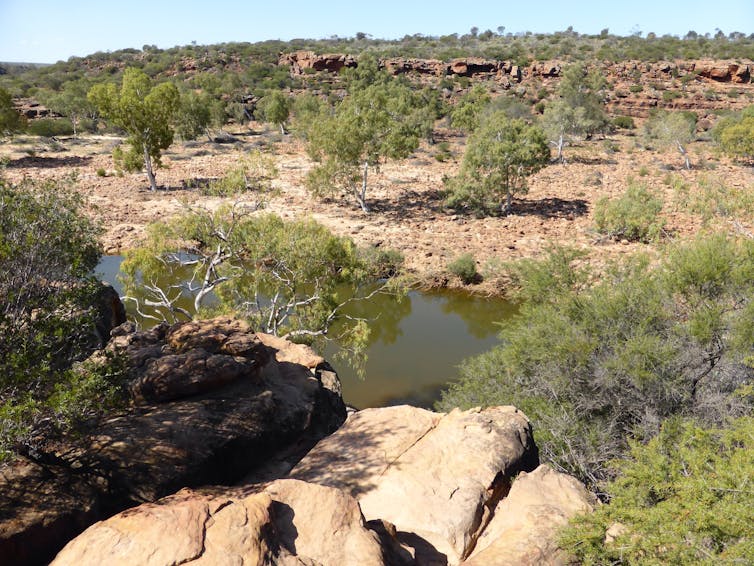
Critical Questions Remain
Plans in Australia and New Zealand to reach net zero emissions by 2050 strongly depend on the ongoing ability for ecosystems to sequester emissions from industry, agriculture, transport and the electricity sectors.
While some management and technological innovations are underway to address this, such as in the agricultural sector, we need long-term measurements of carbon cycling to truly understand the limits of ecosystems and their risk of collapse.
Indeed, we’re already in uncharted territory under climate change. Weather extremes from heatwaves to heavy rainfall are becoming more frequent and intense. And CO₂ levels are more than 50% higher than they were 200 years ago.
So while our ecosystems have remained a net sink over the last 20 years, it’s worth asking:
will they continue to do the heavy-lifting required to keep both countries on track to meet their climate targets?
how do we protect, restore and sustain the most vital, yet vulnerable, ecosystems, such as “coastal blue carbon” (including seagrasses and mangroves)? These are critical to nature-based solutions to climate change
how do we monitor and verify national carbon accounting schemes, such as Australia’s Emissions Reduction Fund?
Critical questions remain about how well Australia’s and New Zealand’s ecosystems can continue storing CO₂.![]()
Caitlin Moore, Research Fellow, The University of Western Australia; David Campbell, Associate Professor, University of Waikato; Helen Cleugh, Honorary Professor, Australian National University; Jamie Cleverly, Snr research fellow in environmental sciences, James Cook University; Jason Beringer, Professor, The University of Western Australia; Lindsay Hutley, Professor of Environmental Science, Charles Darwin University, and Mark Grant, Science Communication and Engagement Manager; Program Coordinator, The University of Queensland
This article is republished from The Conversation under a Creative Commons license. Read the original article.
Saving the Great Barrier Reef: these recent research breakthroughs give us renewed hope for its survival

With yet another coral bleaching event underway on the Great Barrier Reef, we’re reminded of the tragic consequences of climate change.
Even if we manage to stop the planet warming beyond 1.5℃ this century, scientists predict up to 90% of tropical coral reefs will be severely damaged.
But we believe there’s a chance the Great Barrier Reef can still survive. What’s needed is ongoing, active management through scientific interventions, alongside rapid, enormous cuts to global greenhouse gas emissions.
In 2020, the federal government announced the Reef Restoration and Adaptation Program, which aims to help coral reefs adapt to the effects of warming oceans. It included research and development funding into 35 cutting-edge technologies that could be deployed at large scale, from cloud brightening to seeding reefs with heat-tolerant corals.
Now, two years into the effort, we’re seeing a number of breakthroughs that bring us renewed hope for the reef’s future.
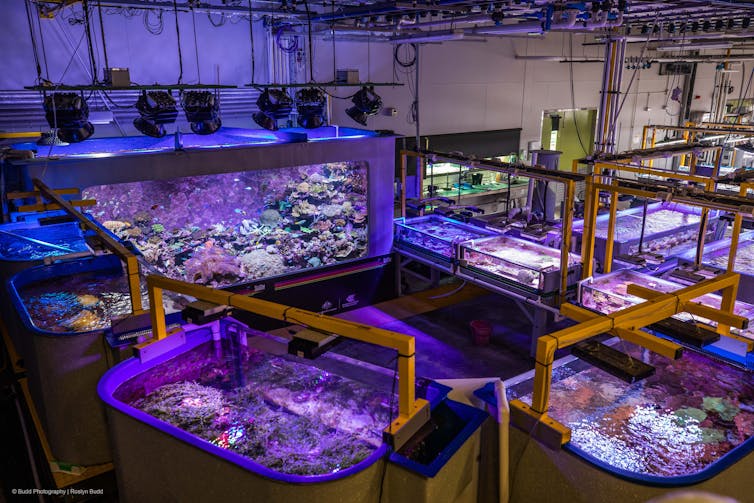
Bleaching On The Reef
Aerial surveys of the entire reef are currently underway to determine the extent and severity of current bleaching. These should be complete before the end of March.
Meanwhile, United Nations’ reef monitoring delegates are visiting the Great Barrier Reef this week to determine whether its World Heritage status should be downgraded.
Early indications suggest bleaching is most severe in areas of greatest accumulated heat stress, particularly in the area around Townsville. In some places, water temperatures have reached 3℃ higher than normal.
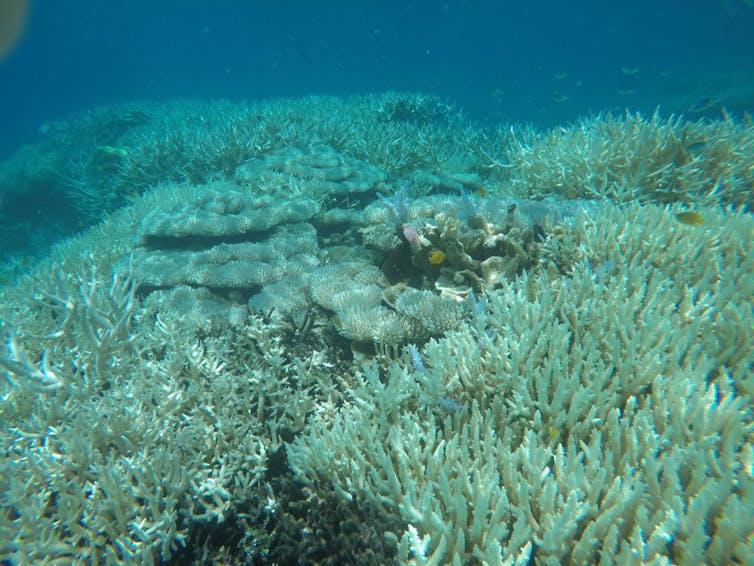
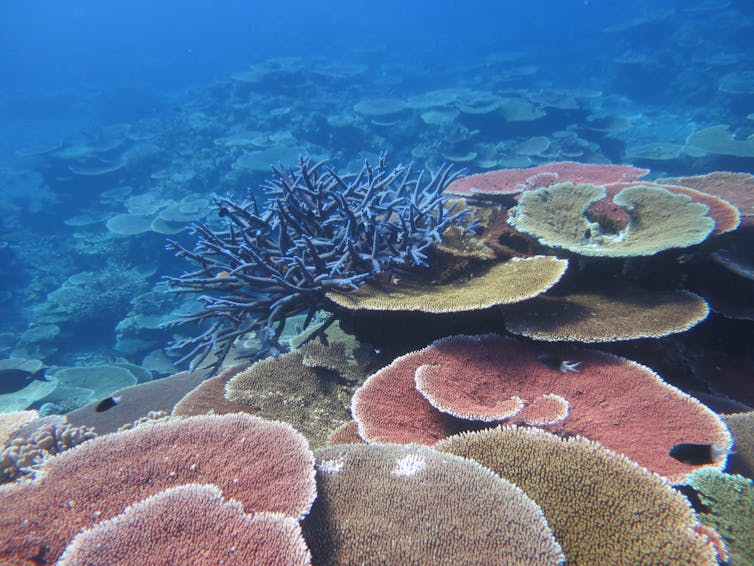
Researchers involved in the Reef Restoration and Adaptation Program are examining a wide range of interventions to repair coral reefs. Unlike current reef restoration efforts, which are done by hand on a few square metres of reef, these interventions are designed to be applied at tremendous scales – across thousands of square kilometres.
Major scientific, technological, process, communication and management breakthroughs are required to see this become successful. We’re pleased to report that we’re already seeing the first successes, with others becoming more likely as research and development continues.
Early Success Stories
One key family of possible interventions involves culturing and deploying millions of heat-tolerant corals onto selected reefs.
Over the last two years, the research team has accelerated the natural adaptation of several coral species to warmer temperatures, allowing them to survive up to an additional four weeks of 1℃ excess heat stress. We believe a total of eight weeks of 1℃ excess heat stress can be achieved.
This level of additional heat tolerance can make a real difference for reef survival if we can limit greenhouse gas emissions driving climate change.

We’ve also developed novel seeding devices, which allow mass delivery of juvenile corals to reefs in a way that enhances their survival, paving the way for larger field trials.
Seeding heat-tolerant corals onto the reef will require significant improvements in coral aquaculture – the process of raising healthy coral in an aquarium before transporting them to the Great Barrier Reef. While current methods are limited to producing and deploying a few thousand corals per year, new advanced methods are designed to produce tens of millions per year – faster and cheaper than ever before.

Another breakthrough relates to the ongoing development of new models and the data to calibrate them.
These are set to vastly improve our ability to predict where interventions are best deployed, and how well they’ll function. Early modelling results suggest even at a modest scale, well-targeted interventions could be enough to shift the state of individual reefs from terminal decline to survival over several decades.
4 Conditions For Lasting Benefit
For these early breakthroughs to bring lasting benefit at such tremendous scales, four key conditions must be met:
interventions will have to be readily scalable and affordable. That means methods and technologies now being trialled in labs and on small patches of reef will have to be automated, mass-produced, up-sized and delivered in ways not previously considered feasible. All of this will take significant investment
interventions must be safe and acceptable to regulators and the public
a range of people, especially Traditional Owners of reef sea-country, must be involved in the effort. This includes through consultation, in decision-making and design
most importantly, global emissions must be brought rapidly under control, ideally to keep warming to under 1.5℃ this century.
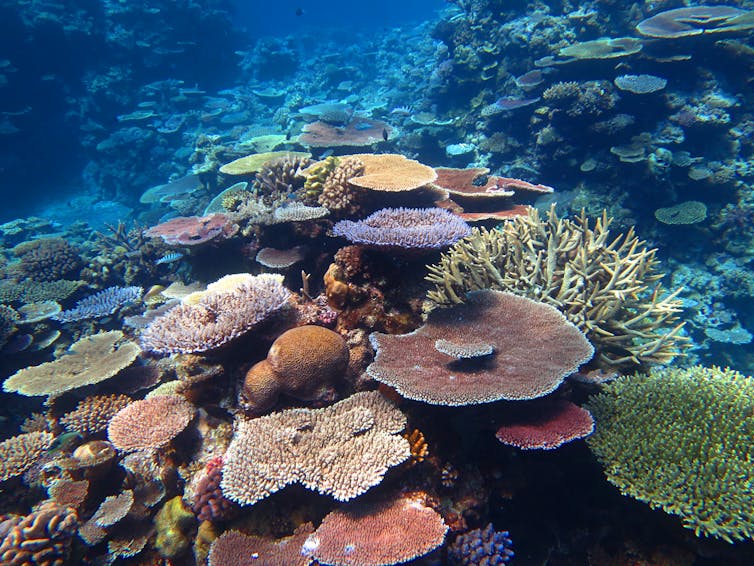
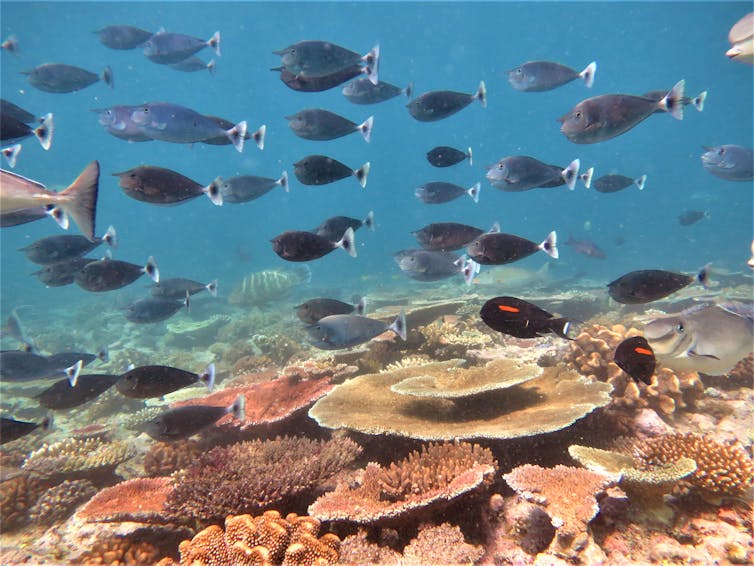
Over the coming months, the program will be conducting more trials on the reef. Alongside recent advances by other programs, such as approaches to control coral-eating crown of thorns starfish, there’s now real promise that a combined intervention at scale can be successful.
Saving The Reef
Imagine a world where coral reefs have largely disappeared from the world. The few remaining reefs are a shadow of what they once were: grey, broken, covered in weeds and devoid of colourful fish.
Millions of people who’ve depended on reefs must turn to other livelihoods, which may contribute to climate-related migration. Imagine, too, how we’d feel knowing it could have been prevented.
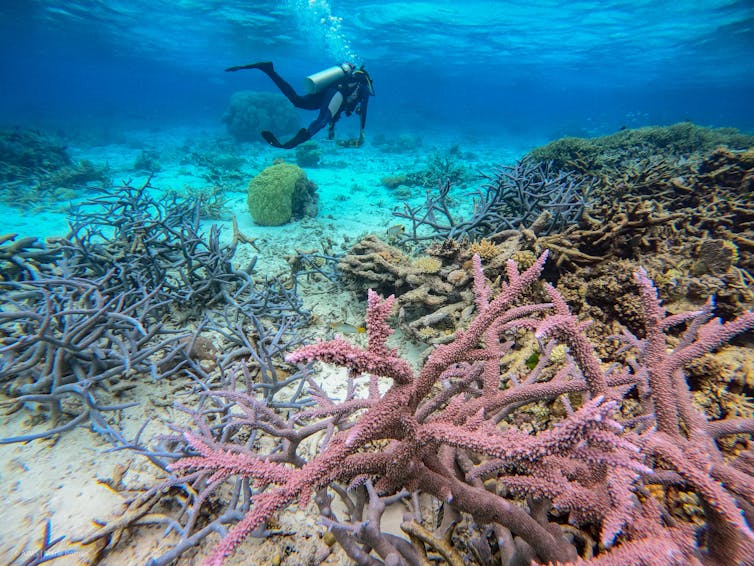
We are hopeful for an alternative vision for the future of the world’s reefs. It’s one in which the amazing beauty and diversity, and the huge global economic benefits, are intact and thriving well into the next century.
The difference between these two possible futures depends on choices we make right now. To save our reefs, we must simultaneously mitigate global warming and adapt to impacts already locked in. Neither alone will be enough. ![]()
Paul Hardisty, CEO, Australian Institute of Marine Science; David Mead, Executive Director of Strategic Development at Australian Institute of Marine Science, Australian Institute of Marine Science, and Rob Vertessy, Enterprise Professor in the School of Engineering, The University of Melbourne
This article is republished from The Conversation under a Creative Commons license. Read the original article.
Tasmania’s forests are burning more as climate change dries them out. Our old tools can’t fight these new fires
David Bowman, University of Tasmania and Jenny Styger, University of TasmaniaThe summer of 2021-22 will be remembered for the extraordinarily destructive flooding across eastern Australia. At the same time, however, western Tasmania was experiencing extreme drought, with some areas receiving their lowest rainfall on record.
This drought fits an observed drying trend across the state, which will worsen due to climate change. This is very bad news for the ancient wilderness in the state’s World Heritage Area, where the lineage of some tree species stretch back 150 million years to the supercontinent Gondwana.
The drying trend has seen a steady increase in bushfires ignited by lightning, imperilling the survival of Tasmania’s Gondwanan legacy, and raising profound fire management challenges. Indeed, climate change means we’re on a learning curve, and the usual practices of managing fire are no longer necessarily fit for purpose.
There is increasing scientific recognition of the risk of the Gondanwan ecosystem collapsing from climate change driven fires. A new draft fire management plan outlines key steps to ensure these iconic forests survive for decades to come – and it must receive dedicated funding.
Tasmania’s Drought
Western Tasmania is one of Australia’s wettest regions, where average annual rainfall can exceed 3 metres. Cool temperatures, year-round rainfall, and complex topography have created fire refugia – landscapes naturally protected from fire. This is why western Tasmania is home to a suite of so-called “living fossils”, such as Huon pines and pencil pines.
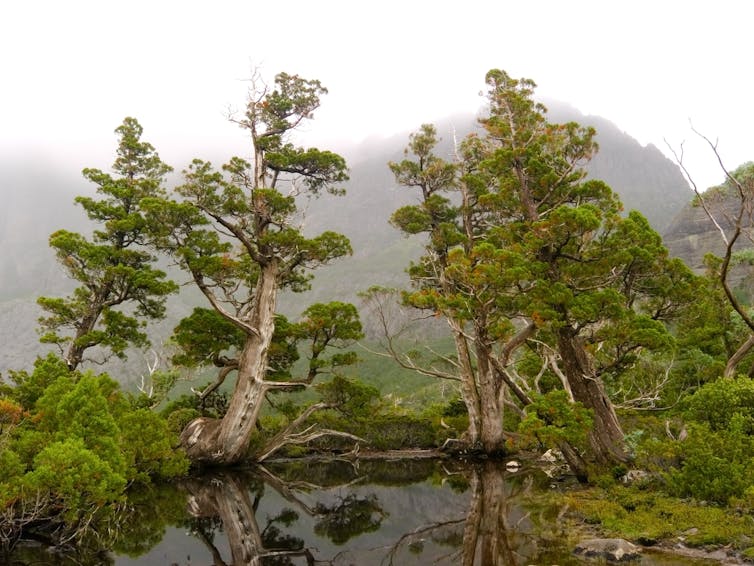
The survival of these relic species hangs in a delicate balance. They occur in small patches surrounded by large areas of highly flammable Australian vegetation, such as eucalypts, tea-tree and, within in the World Heritage site, the ubiquitous buttongrass moorland.
The cool moist climate, combined with the skilful, intentional application of fire by Aboriginal people, have conserved ancient, unique trees for millennia. However, the changes in fire patterns following colonialism have caused some Gondwanan refugia to collapse.
Western Tasmania’s current drought is its worst in 40 years, despite the presence of La Niña – a natural climate phenomenon that brings cool, wet weather to parts of Australia. It has also been one Tasmania’s hottest summers on record.
Fortunately, the past summer has seen only a few bushfires ignited by lightning. Nonetheless, one of these fires was near the last remaining stand of unlogged Huon pine forest.
To understand the level of risk to Tasmania’s World Heritage Area, we can look to bushfires in 2016 and 2019 when massive dry lightning storms ignited fires in remote wilderness areas, threatening ecologically irreplaceable areas such as the Walls of Jerusalem and Mt Anne.
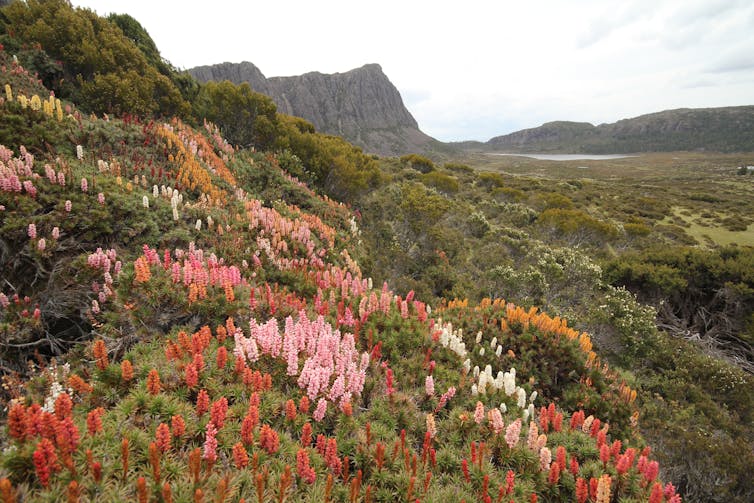
And let’s not forget, the largest fire in the 2019-20 bushfire crisis, which threatened many Blue Mountains towns, was ignited by a lightning strike in a remote and rugged area.
Likewise, the devastating 2003 Canberra bushfires was caused by lightning strikes in Kosciuszko and Namadgi National Parks.
There can be no doubt effective management of Tasmania’s wilderness will provide protection for nearby towns.
So What Does Sustainable Fire Management Look Like?
It’s widely accepted among Australian fire management agencies and conservation groups that aerial firefighting is key to controlling remote bushfires. But there are significant downsides to this approach.
The two most important are the very high costs of using aircraft, and the environmental impacts of firefighting chemicals. Some firefighting chemicals can, for instance, change soil chemistry so it favours weed invasion.
Tasmania’s Wilderness World Heritage Area needs a sustainable fire management approach which, crucially, employs and involves Aboriginal people. This would not only benefit the environment, but also enable Aboriginal people in Tasmania to reconnect with important cultural sites.
A sustainable approach is one that reduces the number of large bushfires while also intentionally applies fire to ecosystems and threatened species that require regular burning. For example, the critically endangered orange bellied parrot needs regularly burned buttongrass moorland as part of its habitat.
For this to work, we need to create carefully designed fuel breaks across the landscape – strips of land with less vegetation available to burn, which slows bushfires.
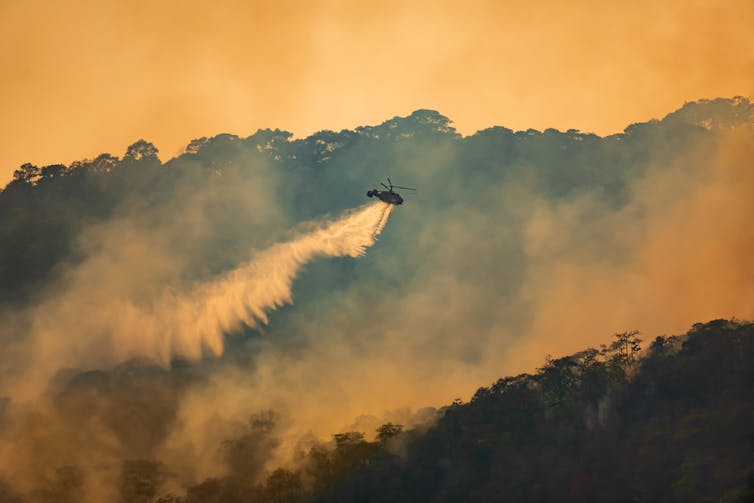
Naturally, such planned burning must consider biodiversity, ensuring fire sensitive plants that can’t bounce back – such as pencil pines and alpine vegetation – are protected. At the same time, we must continue to burn native plants that depend on fire to regenerate.
Protecting biodiversity can be achieved through carefully implementing a practice called “mosaic” burning. This is where small areas are regularly burnt to create a patchwork of habitats so wildlife has a diversity of resources and places to shelter in.
Ultimately, well-designed landscape management will give managers confidence to let some fires run free, rather than attempting costly aerial firefighting campaigns. By contrast, areas with internationally important natural and cultural values should be the focus of fire protection efforts when bushfires do occur, such as the innovative use of sprinklers to protect the shores of Lake Rhona.
More Fire In Our Future
The above fire management approaches are outlined in the current draft fire management plan for the World Heritage Area. Realising its objectives will require dedicated, recurrent funding, without which the plan’s goals will remain aspirational.
What’s more, any fire management evaluation going forward must be publicly transparent to see continual improvement. It will also ensure there’s a broader community understanding of the need to make difficult decisions to adapt to climate change-driven bushfires.
The 2019-20 bushfire crisis that shocked the world has been overwritten by many other subsequent crises, such as the pandemic, flooding, and geopolitical turmoil.
Indeed, the soggy summer in eastern Australia has no doubt engendered a widespread belief bushfires have gone away. They haven’t. The luxuriate growth from the La Niña is priming landscapes across eastern Australia to burn again.
We must keep focus on adapting to bushfires that are being turbo charged by climate change. With serious investment to protect Tasmania’s precious environment, the rest of Australia – and indeed other flammable wildernesses elsewhere in the world – can too learn how to sustainably manage increasingly devastating bushfires.![]()
David Bowman, Professor of Pyrogeography and Fire Science, University of Tasmania and Jenny Styger, Associate at The Fire Centre,, University of Tasmania
This article is republished from The Conversation under a Creative Commons license. Read the original article.
If the UN wants to slash plastic waste, it must tackle soaring plastic production - and why we use so much of it
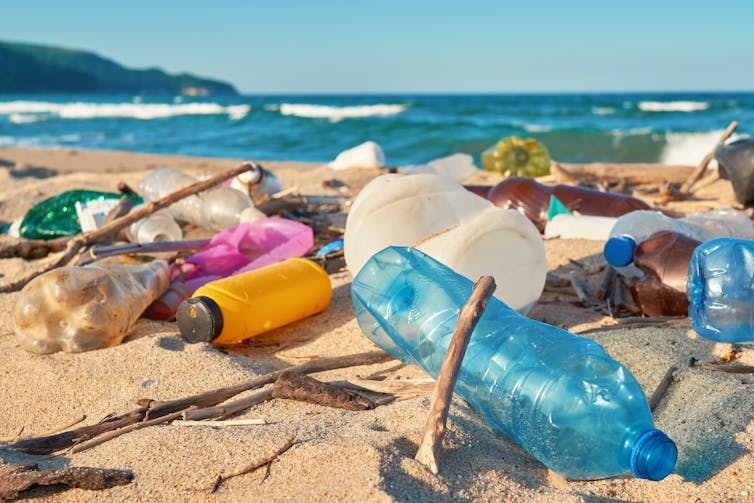
You pick up a piece of plastic litter from the beach, and get a small buzz. You’ve done something for the environment. But then you look around, and see plastic everywhere. It’s much more than you could pick up.
Earlier this month, the United Nations endorsed a new resolution on ending plastic pollution.
While that sounds positive, focusing on pollution is missing the elephant in the room: production. Why is more and more plastic being produced, with some ending up in forests, rivers and oceans near you?
Our research has shown that to actually make a difference to the ever-growing amount of plastics in our oceans, our soils and our bodies, we must focus on why our societies use and throw away ever more single use plastics.
The answer lies in our systems. If you’re a time-poor parent, stressed by juggling kids, work and the mortgage, it can be much easier and faster to reach for heavily packaged ready-made meals, or get dinner delivered in many layers of plastic.

It’s Time To Stop Focusing Just On Plastic Waste
Plastic pollution is out of control, with almost 80% of the 8.3 billion tonnes we have produced thrown away into landfill or the environment.
Why, then, is the UN focused only on the problem of waste, rather than production? We are producing more plastics than ever. Plastics are created from oil, and will account for one-fifth of all oil consumption by 2050. Not only this, but 40% of all the plastics we produce is used for packaging. Just over a third of these plastics are for food packaging.
Our research has shown mainstream approaches such as the UN resolution are ineffective and even counterproductive.
If we want to make a dent in the major problem of plastic pollution, we have to make systemic changes.
Why? Consider recycling and the notion of the circular economy, often held up as an answer to plastic waste. The issue here is that plastic degrades every time it is cycled through. Not only that, but recycling itself is often highly energy-intensive with its own set of environmental impacts.
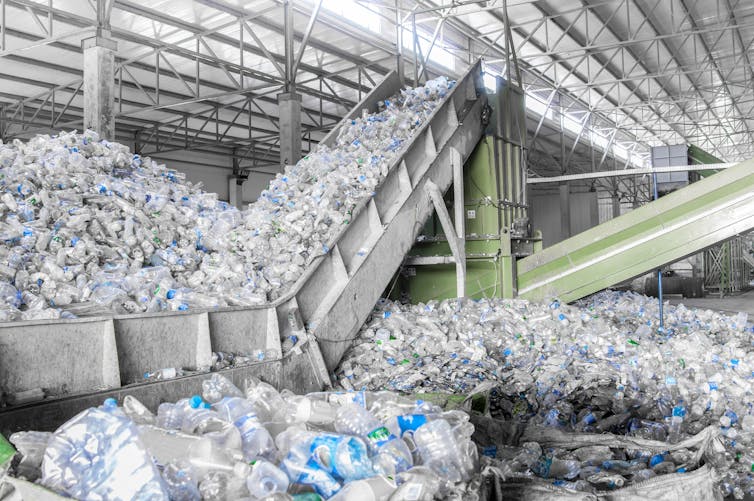
Recycling only delays the final disposal of plastics. Similarly, the concept of a circular economy is only put into practice when profitable.
Could we switch en masse to alternative disposable materials, like bio-based packaging?
Alas not. This isn’t the solution either, as these products still have significant social and environmental impacts.
Both recycling and switching to bio-based packaging are drawn from the technocratic greenwashing playbook, in which we look to technology to let us keep living in an unsustainable way.
Why Do We Use And Throw Away So Much Plastic?
What we actually need is to consider how we can reduce how much plastic we make and consume, so we have a better chance of living within the planet’s ecological boundaries.
Our current capitalist system gives producers the incentive to make as much plastic as they can sell, and to create new market niches for their products. It’s no surprise the result is an avalanche of plastic.
Take food packaging. The use of plastics to cover food has increased dramatically since the 1960s, alongside the expansion of the globalised food market.
There is a link. As food production has gone global, it has displaced some local food production, manufacturing and consumption. Major corporations have profited from this shift, which requires longer and more complex supply chains. And longer supply chains means more packaging to keep food saleable.
To us, this suggests that the problem of plastic runs much deeper than how we prevent the waste entering our rivers and oceans. We believe the central issue stems from the growth-at-all-costs capitalist system.
Consider: packaged food is sold as “convenient”. Why do we need convenient ready-to-eat meals or those with minimal preparation, like frozen dinners, instant noodles and fast food? Because we are time-poor.
Why are we time-poor? Because in our fast-paced capitalist economies, people need to fit food preparation around their inflexible paid labour, which may often require long hours or fitting into a casualised system.
As a result, many of us get to the end of the day with little time and energy to shop in local stores, cook our meals from scratch using fresh ingredients, or grow our food.
It’s well established that time deprivation has increased how much processed packaged food we eat.

Waste Is Just A Symptom
We do not hold out great hopes for the new UN agreement on plastics, based not only on the failure to address the root causes but also the poor implementation of previous climate commitments and other international environmental agreements such as e-waste management.
Proposals to reduce plastic pollution which skim over the root causes will do very little to reduce our overall use of plastics and alleviate the significant damage they do to our societies and the environment.
If we are serious about reducing the damage, we must look at deeper solutions, One might be transitioning towards a degrowth society, which would help us re-localise food systems.
In a degrowth society, we would gradually shift back to local food production, which would reduce the globalisation of food and shorten supply chains. That, in turn, would slash the need for packaging.
Degrowth would also help us address time poverty by, for example, reducing working hours or introducing a work-sharing mechanism.
There would be more free time in a degrowth society, and local food systems would provide healthy, fresh, seasonal produce requiring minimum packaging.
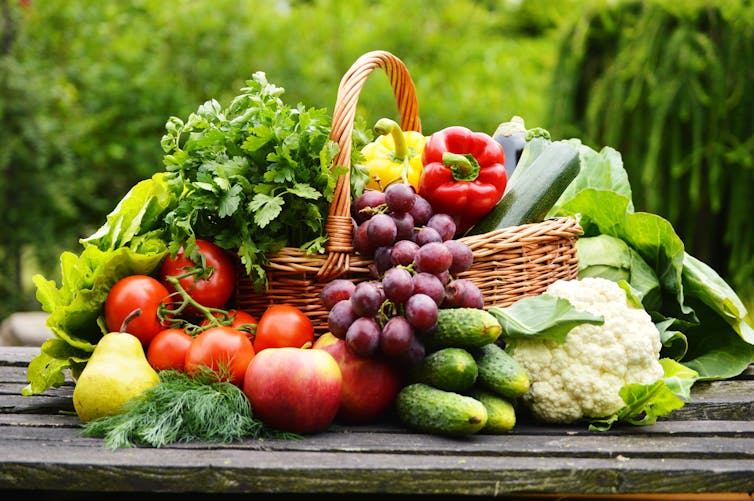
Supporting local farmers or pursuing more free time for all might well be a more effective solution to the issue of plastic pollution rather than simply pushing for improved recycling schemes.
Is this just blue sky thinking? No. Consider how our society was able to react to the COVID pandemic and get organised differently.
The pandemic showed us we are capable of large-scale change if a problem is taken seriously. If we begin to prioritise our social and ecological well-being over company profits, we will see change.![]()
Sabrina Chakori, PhD Candidate, The University of Queensland; Ammar Abdul Aziz, Lecturer, The University of Queensland; Martin Calisto Friant, PhD Researcher, Utrecht University, and Russell Richards, Lecturer, The University of Queensland
This article is republished from The Conversation under a Creative Commons license. Read the original article.
The legacy of Lake Pedder: how the world’s first Green Party was born in Tasmania 50 years ago
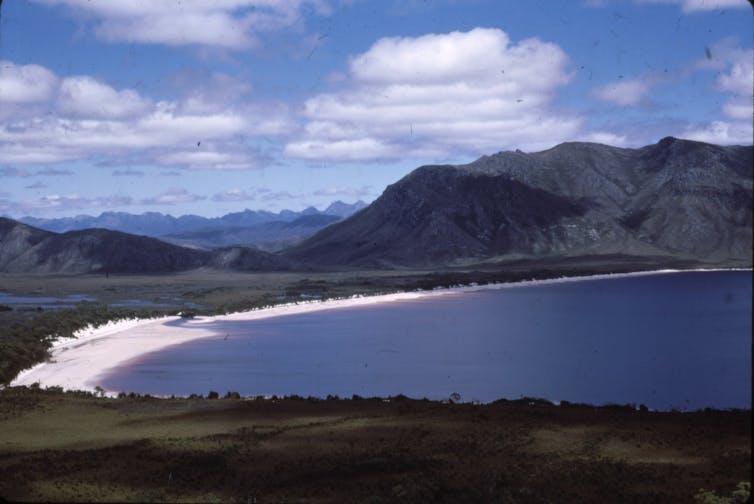
Fifty years ago this week, the world’s first “green” political party was born in Tasmania after the state government purposefully flooded the magnificent Lake Pedder.
The flooding made way for a hydro-electricity scheme, transforming the nearly 10-square-kilometre lake into a reservoir spanning almost 250 square kilometres today. This damaged the surrounding wilderness – now recognised as part of Tasmania’s World Heritage Area – and greatly tarnished its natural beauty.
The controversial move sparked nationwide outcry. In an effort to save the lake, the United Tasmania Group was formed on March 23, 1972 by fielding candidates in the state election that year. The party was the forerunner to the Australian Greens and saw other green-oriented political parties soon follow worldwide, including New Zealand’s Values Party and Switzerland’s Popular Movement for the Environment.
Now, half a century later, environmentalists are upping their campaign to restore the lake to its former glory. It symbolises the broader contest between unsustainable industrialisation and a greener economy that addresses challenges such as climate change.
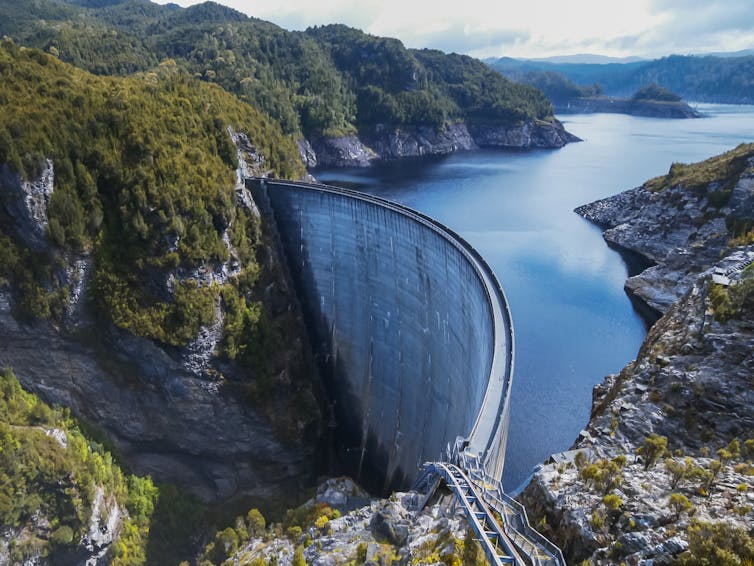
The Lake Was Once Beautiful
Before 1972, Pedder was a remnant glacial lake flanked by a spectacular, pink-quartzite beach and mossy rivulets.
Nestled amid a primeval mountain range 300 metres above sea level, the alpine lake had geomorphological significance as it was formed in the outwash of a glacier an estimated 1 million years ago, when ice sheets covered much of the planet.
And it was spectacularly wild. Prior to the flooding, Lake Pedder was difficult to access, known best to serious bushwalkers and tourists chartering light aircraft. These tourists and hikers brought the lake’s beauty and geological significance to a broader public when threats of flooding began to materialise.
The flooding saw heavy ecological losses. The massive hydropower dam drowned about 250 square kilometres of surrounding wilderness. This included a mosaic of diverse ecosystems including wetlands, temperate rainforest and buttongrass moorlands, along with several rare plant species.
The Lake Pedder galaxias (Galaxias pedderensis), a fish once endemic to the lake, is now considered extinct in its natural habitat after 350,000 trout, a predator, were put in.
Four other species of invertebrate fauna, also endemic to the original Lake Pedder, have disappeared or dramatically declined due to the altered habitat.
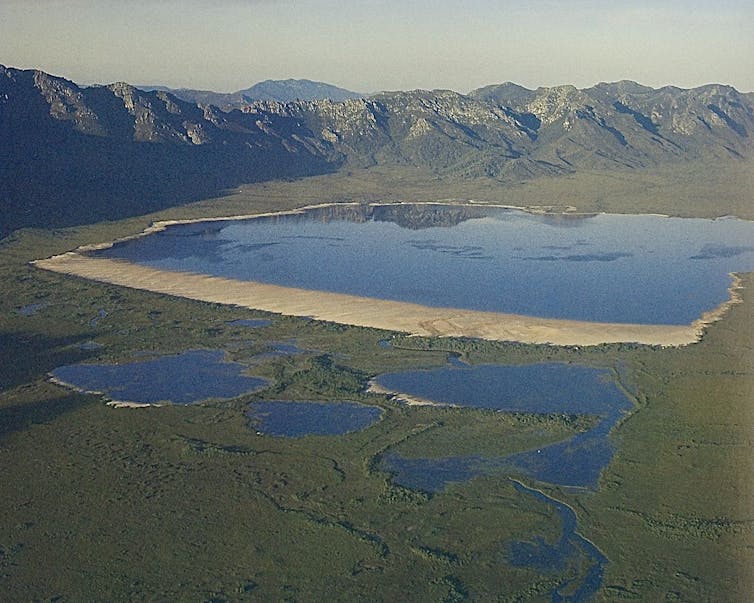
The Birth Of Green Politics
The loss of Pedder helped trigger the formation of the United Tasmania Group (UTG), which is generally credited as the world’s first political party with a foundation in environmental values.
While the UTG didn’t win seats in that or subsequent elections it contested during the 1970s, it was the forerunner to the Tasmanian Greens and, nationally, the Australian Greens.
But the UTG didn’t spring purely from the Lake Pedder controversy. As historian and journalist Paddy Manning identifies in his book on the history of the Greens, the UTG was part of broader global shift to greater environmental awareness in the 1970s. For example, the first Earth Day was held in 1970, and saw 20 million people in the United States demonstrate against the impacts of industrial development.
The name “Green” for environmentally minded political parties, however, came later. Indeed, it was derived from another Australian-first: the “Green Ban” movement in Sydney in the 1970s that united building workers and community groups to save cultural and natural heritage from destruction.
Restoring The Lake Today
The former Australian Greens leader Christine Milne is presently leading the campaign to restore Lake Pedder. This campaign actually began in the immediate aftermath of the damming for the hydropower scheme, when the Whitlam government appointed an inquiry in 1973 to advise on the area’s future, including possible restoration.
In 1994, the Pedder 2000 initiative was launched, which sought federal assistance to reinstate the lake by the start of the new century. A year later, a federal parliamentary inquiry confirmed the scientific feasibility of restoring the lake.
However, the inquiry concluded that the most compelling reasons to restore the lake were aesthetic rather than for nature conservation. It said the economic costs and opposition by Tasmania’s major political parties meant restoration had “no real prospect of proceeding in the foreseeable future”.
Now, over two decades later, the campaign is once again gaining traction. The United Nations declared 2021-2030 the Decade on Ecosystem Restoration, calling for projects to replant forests, remove dams, rehabilitate wetlands and more. The 2021 Glasgow Climate Conference reinforced this message by affirming the importance of ecological restoration in mitigating and adapting to climate change.
Restoring Lake Pedder would entail more than pulling the plug on the dams, and it would likely take several decades for the original ecosystems to flourish again. Yet, the major geomorphological features such as the lake’s iconic beach would quickly return as the waters retreated.
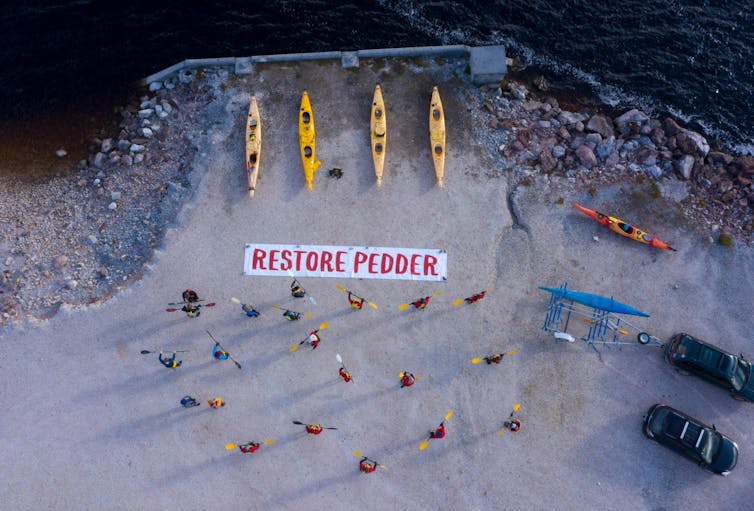
The arguments against Pedder’s restoration today primarily rest on its contribution to Tasmania’s electricity generation and its desire to be Australia’s “battery of the nation”.
But the economic advantages from Lake Pedder’s restoration may outweigh its value for electricity production, as new renewable energy projects step in to meet demand, coupled with the benefit of foregoing the growing cost of maintaining the ageing dams.
What’s more, once it is restored, the lake could become a major international tourist attraction. It truly was a scenic wonder on par with Uluru and the Great Barrier Reef, one we should fight to bring back.![]()
Benjamin J. Richardson, Professor of Environmental Law, University of Tasmania
This article is republished from The Conversation under a Creative Commons license. Read the original article.
Record-smashing heatwaves are hitting Antarctica and the Arctic simultaneously. Here’s what’s driving them, and how they’ll impact wildlife
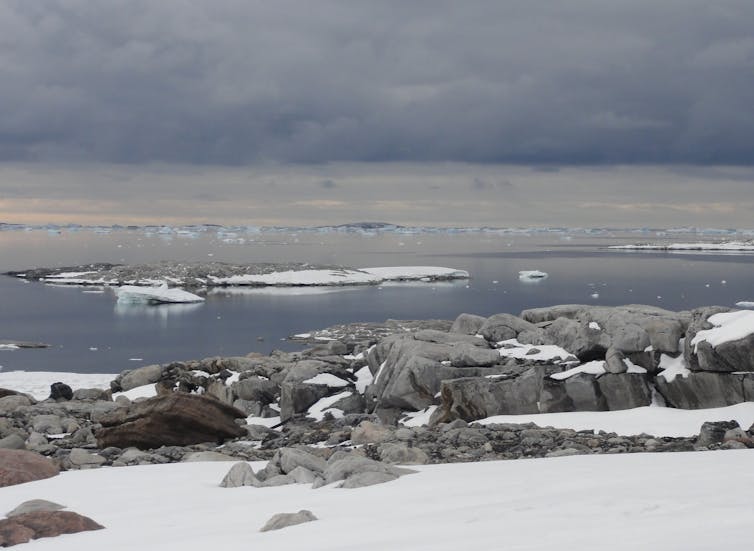
Record-breaking heatwaves hit both Antarctica and the Arctic simultaneously this week, with temperatures reaching 47℃ and 30℃ higher than normal.
Heatwaves are bizarre at any time in Antarctica, but particularly now at the equinox as Antarctica is about to descend into winter darkness. Likewise, up north, the Arctic is just emerging from winter.
Are these two heatwaves linked? We don’t know yet, and it’s most likely a coincidence. But we do know weather systems in Antarctica and the Arctic are connected to regions nearest to them, and these connections sometimes reach all the way to the tropics.
And is climate change the cause? It might be. While it’s too soon to say for sure, we do know climate change is making polar heatwaves more common and severe, and the poles are warming faster than the global average.
So let’s take a closer look at what’s driving the extreme anomalies for each region, and the flow-on effects for polar wildlife like penguins and polar bears.
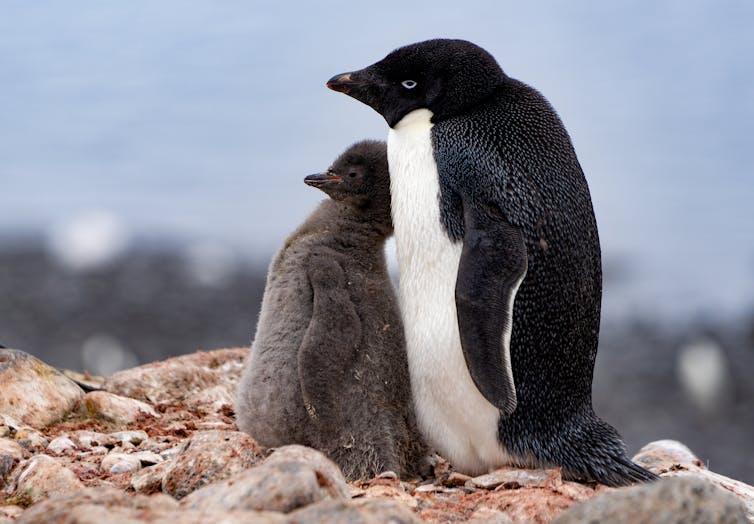
What Happened In Antarctica?
Antarctica’s heatwave was driven by a slow, intense high pressure system located southeast of Australia, which carried vast amounts of warm air and moisture deep into Antarctica’s interior. It was coupled with a very intense low pressure system over the east Antarctic interior.
To make matters worse, cloud cover over the Antarctic ice plateau trapped heat radiating from the surface.
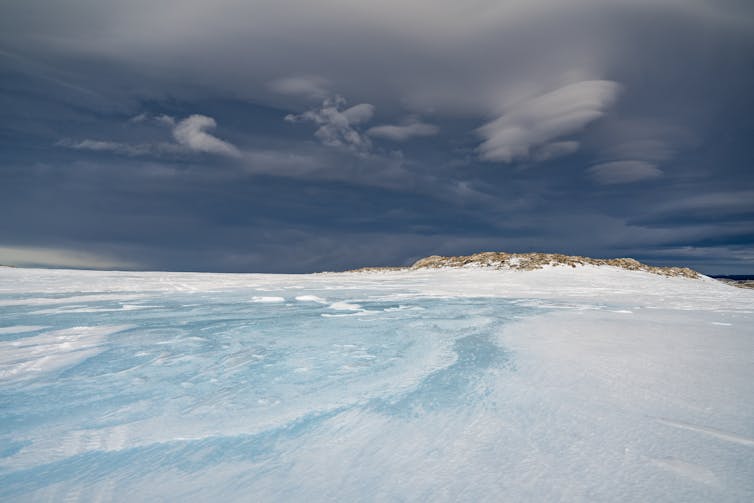
Since it’s autumn in Antarctica, temperatures in the continent’s interior weren’t high enough to melt glaciers and the ice cap. But that’s not to say large swings in temperature didn’t occur.
For example, Vostok in the middle of the ice plateau hit a provisional high of -17.7℃ (15℃ higher than previous record of -32.6℃). Concordia, the Italian-French research station also on the high plateau, experienced its highest ever temperature for any month, which was about 40℃ above the March average.
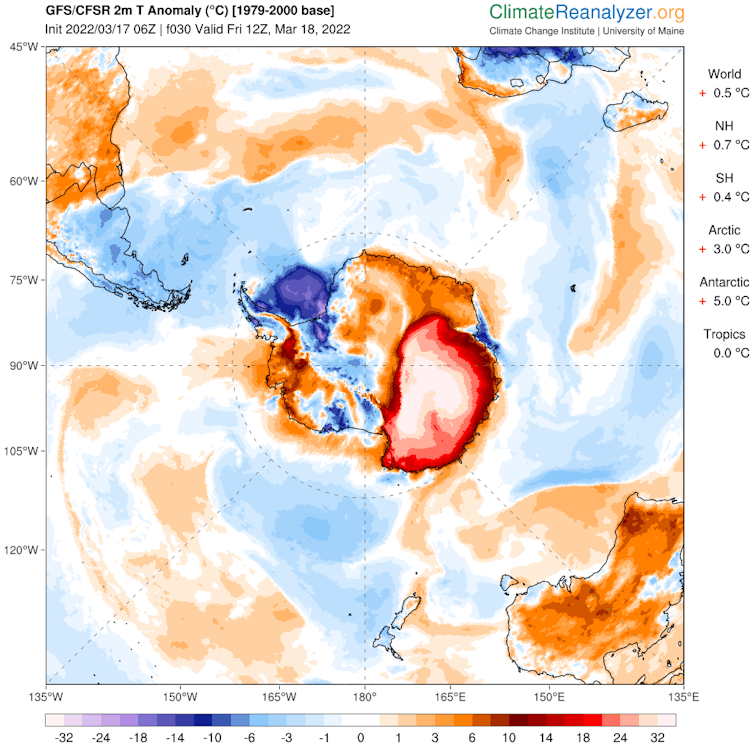
The story is very different on the coast as rain fell, which isn’t really common for the continent.
The rain was driven primarily by an atmospheric river – a narrow band of moisture collected from warm oceans. Atmospheric rivers are found on the edge of low pressure systems and can move large amounts of water across vast distances, at scales greater than continents.
Despite their rarity, atmospheric rivers make an important contribution to the continent’s ice sheets, as they dump relatively large amounts of snow. When surface temperatures rise above freezing, rain rather than snow falls over Antarctica.
Last Monday (March 14) air temperatures at the Australian Casey Station reached a maximum of -1.9℃. Two days later, they were more like mid-summer temperatures, reaching a new March maximum of 5.6℃, which will melt ice.
This is the second heatwave at Casey Station in two years. In February 2020, Casey hit 9.2℃, followed by a shocking high of 18.3℃ on the Antarctic Peninsula.
So what might this mean for wildlife?
Adélie penguins, which live across the entire Antarctic coastline, have recently finished their summer breeding. But thankfully, the Adélie penguin chicks had already left for sea to start hunting for food on their own, so the heatwave did not impact them.
The rain may have affected the local plant life, such as mosses, especially as they were in their annual phase of drying out for the winter. But we won’t know if there’s any damage to the plants until next summer when we can visit the moss beds again.
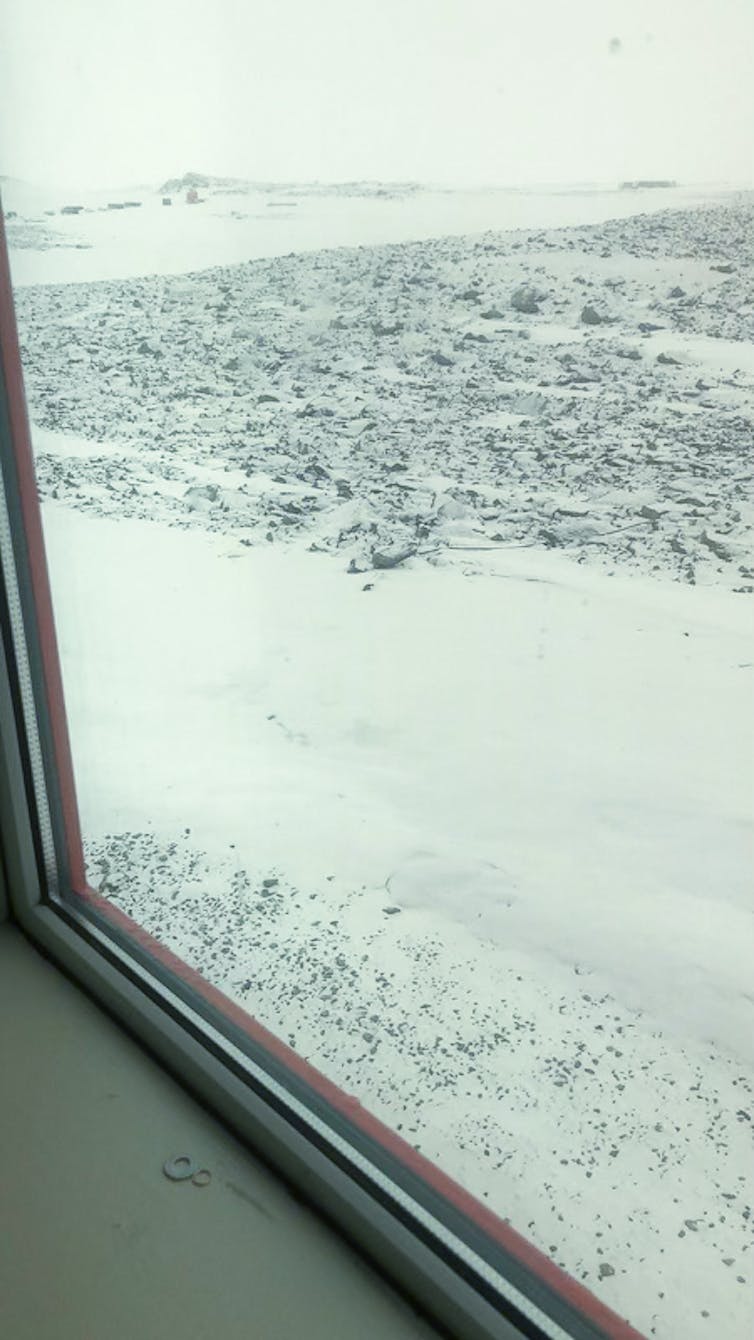
What About The Arctic?
A similar weather pattern occurred last week in the Arctic. An intense low pressure system began forming off the north-east coast of the United States. An atmospheric river formed at its junction with an adjacent high pressure system.
This weather pattern funnelled warm air into the Arctic circle. Svalbald, in Norway, recorded a new maximum temperature of 3.9℃.
US researchers called the low pressure system a “bomb cyclone” because it formed so rapidly, undergoing the delightfully termed “bombogenesis”.
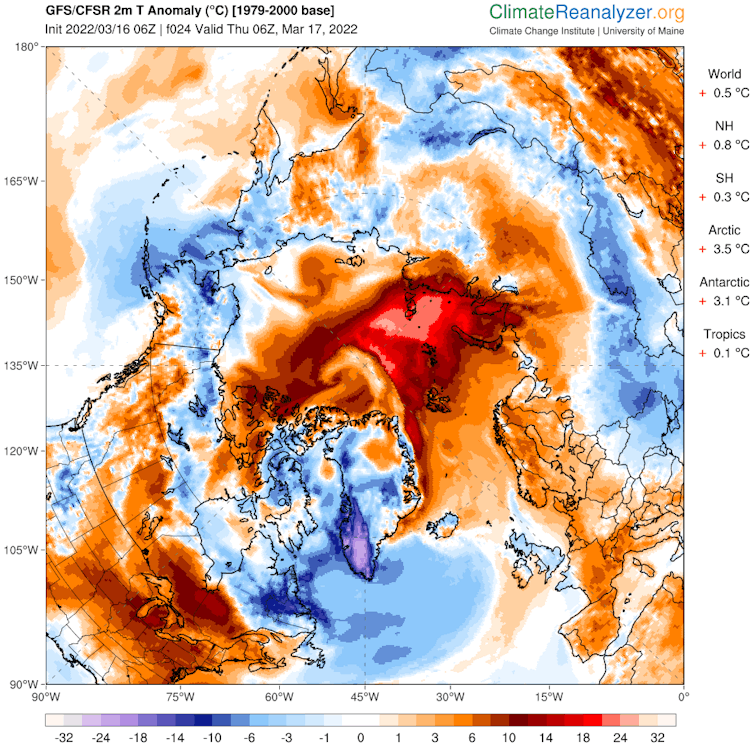
Winter sea ice conditions this year were already very low, and on land there was recent record-breaking rain across Greenland.
If the warm conditions cause sea ice to break up earlier than normal, it could have dire impacts for many animals. For example, sea ice is a crucial habitat for polar bears, enabling them to hunt seals and travel long distances.
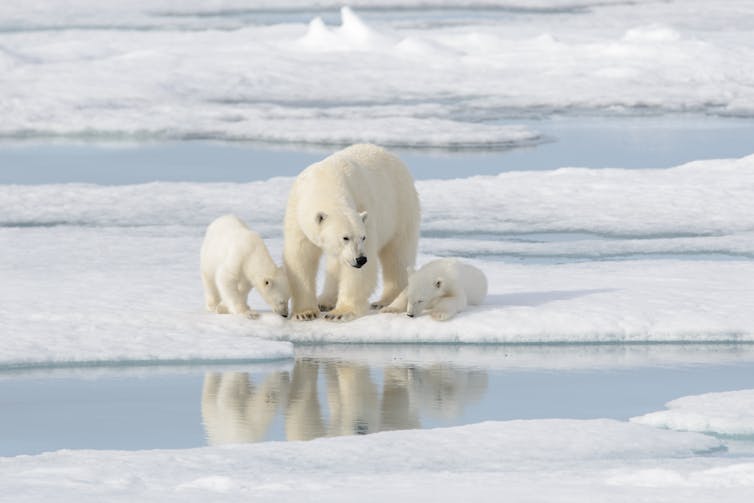
Many people live in the Arctic, including Arctic Indigenous people, and we know losing sea ice disrupts subsistence hunting and cultural practices.
What’s more, the bomb cyclone weather system brought chaotic weather to many populated areas of the Northern Hemisphere. In northern Norway, for instance, flowers have began blooming early due to three weeks of abnormally warm weather.
A Harbinger For The Future
Modelling suggests large-scale climate patterns are become more variable. This means this seemingly one-off heatwave may be a harbinger for the future under climate change.
In particular, the Arctic has been warming twice as fast as the rest of the world. This is because the melting sea ice reveals more ocean beneath, and the ocean absorbs more heat as it’s darker.
In fact, the Intergovernmental Panel on Climate Change (IPCC) projects Arctic sea ice to continue its current retreat, with ice-free summers possible by the 2050s.
Antarctica’s future looks similarly concerning. The IPCC finds global warming between 2℃ and 3℃ this century would see the West Antarctic Ice Sheet almost completely lost. Bringing global emissions down to net zero as fast as possible will help avoid the worst impacts of climate change.![]()
Dana M Bergstrom, Principal Research Scientist, University of Wollongong; Sharon Robinson, Professor, University of Wollongong, and Simon Alexander, Atmospheric scientist, University of Tasmania
This article is republished from The Conversation under a Creative Commons license. Read the original article.
Adapt, move, or die: repeated coral bleaching leaves wildlife on the Great Barrier Reef with few options
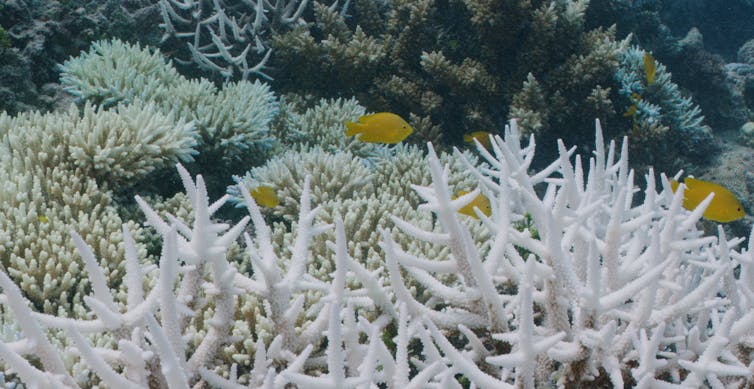
To our horror, another mass coral bleaching event may be striking the Great Barrier Reef, with water temperatures reaching up to 3℃ higher than average in some places. This would be the sixth such event since the late 1990s, and the fourth since 2016.
It comes as a monitoring mission from the United Nations arrives in Queensland today to inspect the reef and consider listing the World Heritage site as “in danger”.
As coral reef scientists, we’ve seen firsthand how the Great Barrier Reef is nearing its tipping point, beyond which the reef will lose its function as a viable ecosystem. This is not only due to climate change exacerbating marine heatwaves, but also higher ocean acidity, loss of oxygen, pollution, and more.
Scientists are at our own tipping points, too. The reef is suffering environmental conditions so extreme, we’re struggling to simulate these scenarios in our laboratories. Even though Australia has world-class facilities, we are proverbially beating our heads against the wall each year as conditions worsen.
It’s getting harder for scientists to predict how these conditions will affect individual species, let alone the health and biodiversity of reef ecosystems. But let’s explore what we do know.
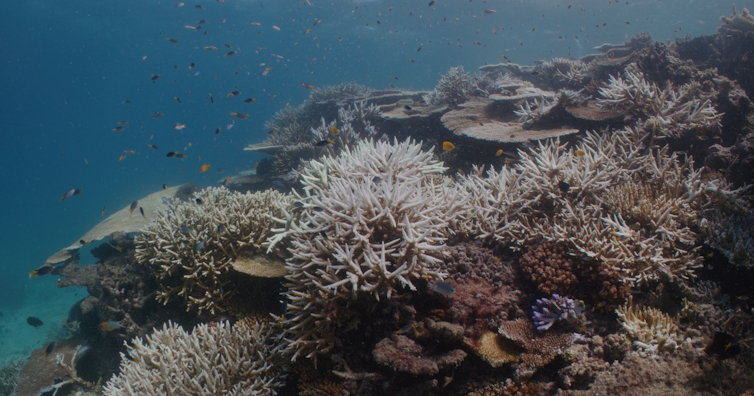
What Is Coral Bleaching And Why Does It Happen?
Corals are animals that live in a mutually beneficial partnership with tiny single-celled algae called “zooxanthellae” (but scientists call them zooks).
Zooks benefit corals by giving them energy and colour, and in return the coral gives them a home in the coral tissue. Under stress, such as in too-hot water, the algae produce toxins instead of nutrition, and the coral ejects them.
Without the algae, the corals begin to starve. They lose their vibrant colours, revealing the bright white limestone skeleton through the coral tissue.
If stress conditions abate, the algae can return and coral can recover over months. But if stress persists, the corals can die – the skeletons begin to crumble, removing vital habitat for other species.
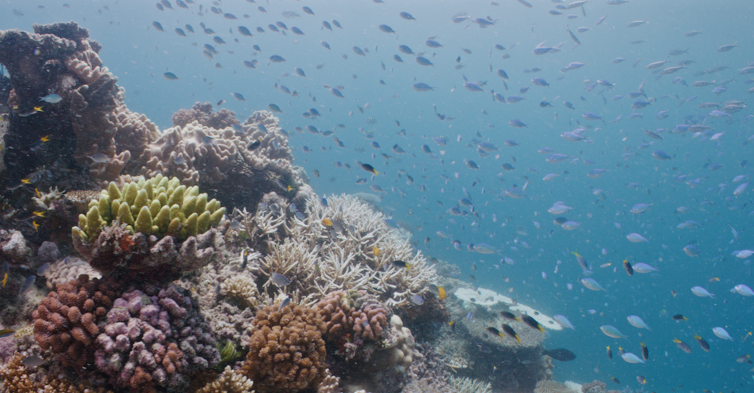
We Had Hoped For A Reprieve
Scientists and managers had hoped for a reprieve this year. Much of the Great Barrier Reef was in the early stages of recovery following the 2016, 2017, and 2020 bleaching events.
In the tropical paradise of northern Queensland, we’ve been wishing for cloudy days and cooler temperatures, hoping for rain and even storms (but not big ones). These conditions typically come with La Niña – a natural climate phenomenon associated with cooler, wetter weather, which has now happened two years in a row.
But despite these effects of La Niña, climate change meant 2021 was one of the hottest years on record. Now, at the tail end of Australia’s summer, the reef is experiencing another marine heatwave and is tipping over the bleaching threshold.
There’s not enough time for coral to recover between events. Even the most robust corals require nearly a decade to recover. There is also no clear evidence corals are adapting to the new conditions.
To make matters worse, climate change is supercharging the atmosphere and making even the natural variations of La Niña and its counterpart El Niño more variable and less predictable. This means Australia will not only endure more intense heatwaves, but also flooding, droughts and storms.
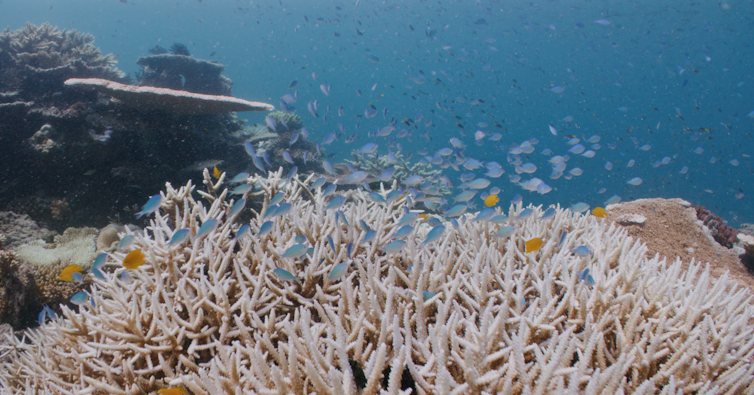
How Will This Hurt Marine Life?
A healthy Great Barrier Reef is home to at least 1,625 species of fishes, 3,000 species of molluscs, 630 species of echinoderms (such as sea stars and urchins), and the list goes on.
Marine life in coral reefs have three options in warming waters: adapt, move, or die.
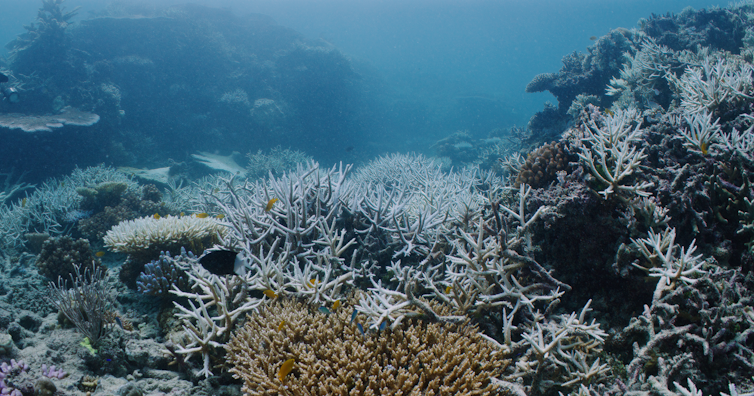
1. Can they adapt?
Over generations, species can make changes at the molecular level – their DNA – so they’re more suited to or can adapt to new environmental conditions. This evolution may be possible for species with fast generation times, such as damselfishes.
But reef species with slower generation times can’t keep pace with the rate we’re changing their habitat conditions. This includes the iconic potato cod and most sharks, which take a around a decade or longer to reach sexual maturity.
2. Can they move?
Some species of reef fishes may start moving to cooler waters before the harmful effects of warming take hold.
But this option isn’t available to all species, such as those that depend on a particular habitat, certain resources, or protection. This includes coral, as well as coral-dwelling gobies and several damselfishes.
A citizen science project called Project RedMap, has been documenting the poleward migration of reef fish species due to climate change. Studies have found that larger, tropical fishes with a high swimming ability are more likely to survive in temperate waters, such as some butterflyfishes.
3. They can die
The third option is one we don’t like to talk about, but is becoming more of a threat.
If marine life can’t adapt or move , we’ll see extinctions at a local scale, total extinction of some species, and dramatic declines in fish populations.
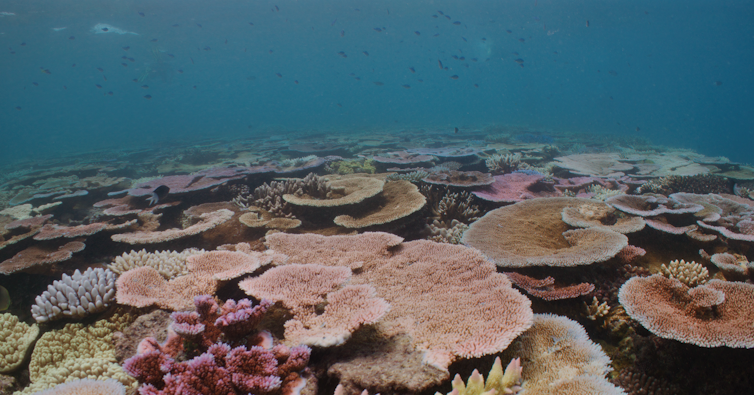
Listing The Reef As ‘In Danger’
While the reef is bleaching, UNESCO delegates have arrived in Queensland to monitor its health, as the World Heritage site is once again being considered for an “in danger” listing.
The visit will likely include seeing the bleaching currently occurring, the damage to the reef still apparent from past events, and they’ll hear firsthand from scientists and managers who’ve witnessed these impacts.
Listing the Great Barrier Reef as “in danger” would raise the alert level for the international community and hopefully inspire climate action.
Reducing the major source of stress the reef faces – climate change – will require ongoing collaborations between Australian and international governments, with work on local management issues also involving business owners, reef managers, Traditional Owners, scientists, civil society groups, and other stakeholders.
We’ve known for a long time the most important step to save the reef: cutting emissions to stop global warming. Indeed, future projections of coral bleaching from the 1990s suggested that frequent and severe events would begin from the late-2010s – and they’ve been alarmingly prescient.
The Great Barrier Reef’s continuing demise is one of the most visible examples of how our inaction as humans has profound and perhaps irreversible consequences. We are rapidly accelerating toward the tipping point.![]()
Jodie L. Rummer, Associate Professor & Principal Research Fellow, James Cook University and Scott F. Heron, Associate Professor in Physics, James Cook University
This article is republished from The Conversation under a Creative Commons license. Read the original article.
‘I simply haven’t got it in me to do it again’: imagining a new heart for flood-stricken Lismore

The flood crisis in northern New South Wales has left lives shattered. Those worst affected are dazed and struggling to comprehend the loss of life, homes, livelihoods and possessions.
We are both residents of the hard-hit Lismore region, as well as researchers with skills in geography, community development and resilience. One of us, Jean Renouf, also works for Fire and Rescue NSW. We are both helping people devastated by the recent floods and its aftermath.
We’ve seen the heartbreak in Lismore first-hand. Shock and pain is evident in people’s eyes. The reality has hit that there’s no longer a coffee shop in the town centre, no pub, restaurant, hairdresser, clothing store, pharmacy or newsagent. Horror at the annihilation of the town they love is palpable.
There is also a strange feeling of déjà vu. The town struggled back to life after the flood of 2017. Now, people talk of leaving Lismore. As one business owner said:
I survived ten years here. I picked myself up and started again after the last flood. I simply haven’t got it in me to do it again.
So what will it take to rebuild Lismore? And how might the new town be more resilient?
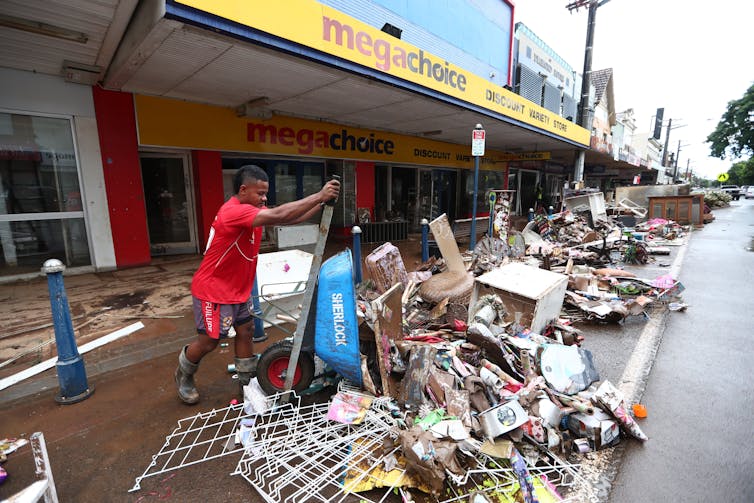
A Flood-Weary Town
Lismore sits on a vast flood plain beside the Wilsons River.
In the town’s early days, the river provided water and a transport route. Its fertile flood plains were ideal for food production and the river provided a major trade route for Lismore’s timber and farming industries.
Over the years, improvements in road transport and other services mean Lismore’s riverside CBD location has become less necessary.
Lismore is a town accustomed to floods, but the most recent flood was at least two metres higher than those previously recorded. Aboriginal elders, however, report “big floods” in the past topped Lismore’s cathedral hill, as this one did.
Climate change is expected to result in more frequent and intense rainfall, increasing the flood risk further.
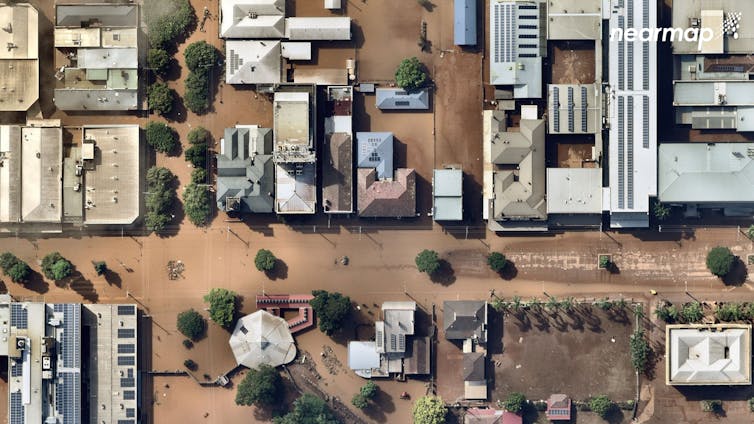
A Techno-Fix Won’t Work
Historically, engineered solutions have been introduced to reduce Lismore’s flood risk.
A one-in-ten year flood levee was built in 2005 to protect the CBD. However in 2017, water spilled over the levee and caused one of the most damaging floods this century.
When levees are topped, flood waters can rise rapidly and become trapped rather than draining away. Levees also give a false sense of safety to Lismore businesses.
Constructing buildings using specific materials and design can make them flood-resilient. But the contents cannot be flood-proofed or affordably insured.
Other engineering solutions have been proposed, including excavating river bends to speed up the exit of floodwater. But such measures can worsen flooding downstream and are unlikely to help during major floods.
Lismore residents are unlikely to support proposals for a new dam upstream, which would create environmental and social damage.

Lismore Re-Imagined
Clearly, Lismore urgently needs radical change – and that requires bold and creative land-use planning.
Key to a re-imagined Lismore would be a staged move of the CBD to higher ground.
One strategy would be to encourage land swaps, with Lismore City Council exchanging commercial land in the CBD for land on high ground (either land it currently owns or land it purchases). A well considered “structure plan” – used to manage growth and change – with careful rezoning could encourage changed land use and attract new commercial development.
Financial incentives could encourage owners of commercial premises to rebuild in safer locations. This could create new, smaller hubs for professional offices, a retail precinct or cultural activities.
Consideration should be given to locating multiple services on flood-free land owned by state or federal authorities. This might, for example, bring together emergency services, health services and government support offices.
Houses deemed unsafe should not be rebuilt in the same place. Housing blocks may need to be bought back by authorities. Where houses can be repaired, some may be relocated to higher ground.

Before this year’s floods, housing in Lismore was already in short supply. Creative planning could address this – perhaps allowing landholders to build tiny houses or granny flats on high ground.
During the recent floods, we saw police, SES and fire stations engulfed by floodwaters, rendering them inoperable. Emergency service bases located below maximum flood heights must urgently be relocated or adapted.
And what to do with the riverside land where the CBD sits now?
The riverine environment could be restored. Impervious surfaces such as asphalt and concrete could be replaced with regenerated bushland to slow water runoff.
Expansive parklands could replace commercial premises beside the river. This “green heart” could incorporate new facilities such as an ampitheatre and sports fields in areas less likely to flood, retaining some heritage buildings for public use.
If these sites did flood, they would be more easily restored afterwards than is the case for current commercial premises.

A New Town Heart
This new Lismore will not be easily achieved. Significant public and private funds will be needed. It will take political will and, above all, community support.
This might all seem very hard, but towns have been fully or partially relocated for similar reasons in the past – most recently, at the Queensland town of Grantham.
Many Lismore people would love to live in a safer and more prosperous town with a new CBD and verdant riverside community precinct.
Such changes will encounter justifiable resistance, however, including from business and property owners in the CBD. Earlier this month, Lismore mayor Steve Krieg summed up the sentiment of some, telling the media:
Forty years ago people tried to [move Lismore] but what you have to understand is that Lismore people love Lismore. They don’t want it to move or be taken away from them.
However, the economic, social and emotional cost of this flood is incomprehensible. Residents and businesses are considering leaving Lismore for good.
This town with heart now needs a new heart.![]()
Barbara Rugendyke, Adjunct Professor in Geography, Southern Cross University and Jean S. Renouf, Lecturer in Politics and International Relations, Southern Cross University
This article is republished from The Conversation under a Creative Commons license. Read the original article.
Energy bills are spiking after the Russian invasion. We should have doubled-down on renewables years ago

Russia’s invasion of Ukraine is happening half a planet away from Australia.
But the ripple effects are plain to see at every petrol station and, potentially soon, your electricity bill.
As a result of the invasion and Western sanctions on Russian exports, energy prices have skyrocketed.
If that makes you think nations should have taken steps to secure alternatives to fossil fuels years ago, you’re not alone. As it is, the much higher energy prices are likely to accelerate the exit of coal – and gas – from our energy grids.
This should be a wake-up call. It doesn’t matter that Australia is far from the battlefield. Everyone in the world will be affected in some way.
What’s The Link Between The Invasion And Australian Energy Prices?
You might think Australia’s domestic supply of coal and gas means we’d be immune to price rises. Not so.
Due to formal sanctions and informal shunning of Russian exports, oil, coal and gas are now extremely expensive on a global scale. Thermal coal prices have increased five-fold to an unprecedented ~$A500 per tonne. Oil is ~$140 a barrel and up 60% year on year. Natural gas in Europe is around 50% higher than last October, but since the invasion, prices have spiked as high as ~200% higher than 2021 levels.
Coal buyers are locking in supply, concerned that Russian sanctions will continue. Russia is the third largest exporter of coal and its existing customers are now under pressure to find alternative supplies.
Russia’s aggression is not just resulting in a major humanitarian and political crisis. It is also causing pain at the bowser for Australian consumers due to the surge in oil pricing and may soon result in higher electricity bills.
Australia’s east-coast electricity market is still heavily reliant upon coal. While many coal-fired power stations have existing supply contracts, the much higher global coal price may increase the cost of any extra coal purchases by existing power stations.
Not only that, but our gas-fired power stations are facing potential increases in operating costs due to much higher global gas prices.
Unfortunately, we may see the result in rising power bills. The price of future contracts for wholesale electricity next year in NSW are now twice what they were a year ago. Assuming this flows through to end-users, prices for residential customers could increase by as much as 10–15%.
So What Should Australia Do?
While it’s too late to dodge this bullet, we can prepare for future shocks by doubling down on firmed renewables. The faster we move, the less we’ll be hit by the price and reliability risks of coal.
Already under pressure from cheaper renewable technologies, coal power station operators now find themselves potentially facing much higher costs in the short-term. There’s no relief for coal in the long term either, with the rapid rise of renewables and other zero-carbon technologies.
Not only that, but most of our coal power stations are near the end of their lives, and industry doesn’t want to build new ones. That means coal will become more and more expensive, as the plants become increasingly unreliable.
Wind and solar technologies are now much cheaper per unit of energy generated and can be integrated with energy storage to provide dispatchable “firmed” energy. The faster we transition to renewables firmed by storage, the better.
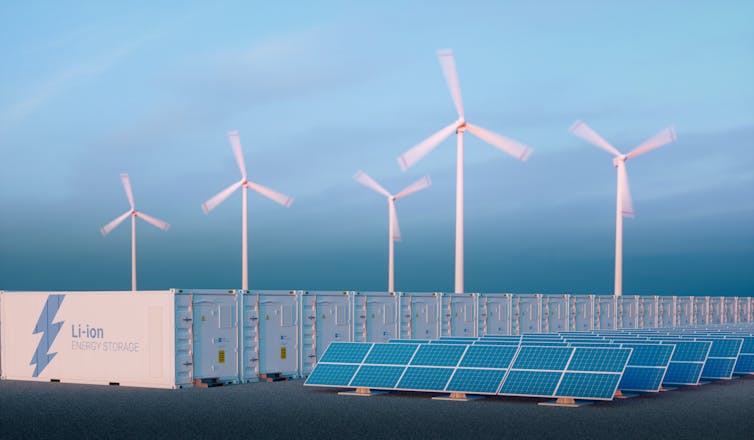
If we do this, our new grid will also be more reliable. Continuing to rely upon coal is like relying upon a 1970s car to travel from Sydney to Melbourne on the hottest day of the year.
State governments around the nation are already embracing this approach, with the New South Wales government moving ahead with plans for 12 gigawatts (GW) of new renewables and storage and the Victorian government announcing plans for 9GW of offshore windfarms.
Governments must carefully design policies to avoid guaranteeing profits for private sector players while socialising any losses across taxpayers and energy consumers. In NSW, alternatives are being considered.
As European and many other nations scramble to reduce their dependency on Russian coal, oil and gas, Australia now has a once in a generation opportunity to become a leading exporter of new clean energy.
We have truly enormous clean energy resources in the form of free sunlight and wind. To export it, we can either run underseas cables to neighbouring countries, or convert cheap renewable power into green hydrogen and ship this to the world just as we currently do with LNG.
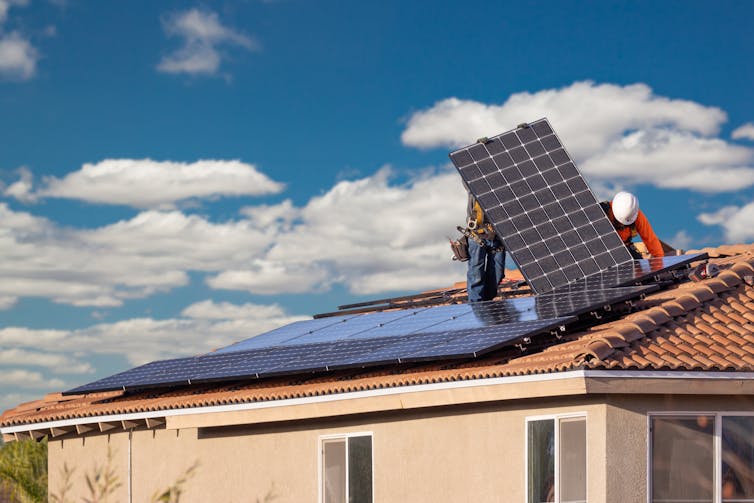
What Else Can We Expect To See?
Surging fossil fuel prices has supercharged the existing disruption to an already rapidly changing domestic energy industry. In the past month, Origin announced it would abandon coal more rapidly, with the closure of its NSW coal-fired power station, Eraring, in 2025.
Meanwhile, AGL has been pursuing a “demerger” with a view to splitting off its coal assets and pursuing new energy technologies. This comes as Australian tech billionaire Mike Cannon-Brookes and Canadian asset fund Brookfield offered to buy AGL for $8.25 a share, though they were not successful. Their plan was to accelerate the closure of AGL’s coal assets, which would move AGL from the highest carbon emitter in Australia to a clean energy company. The age of coal power is ending, and much faster than most of us realise.
This crisis should spur us to build a future-proofed fleet of “firmed” and well-distributed renewables with a known cost structure.
By doing this, we will protect ourselves from the pain of geopolitically driven fossil fuel prices. And we will have a platform ready if we want to provide clean energy to the world in the form of green hydrogen.
We have had decades to make full use of our wealth of renewable energy resources. We haven’t embraced this as fully as we should have.
It turns out localised clean energy production is not just necessary to tackle climate change. It will prove a vital resource as we navigate the highly turbulent decade we have found ourselves in.![]()
Tim Nelson, Associate Professor of Economics, Griffith University and Joel Gilmore, Associate Professor, Griffith University
This article is republished from The Conversation under a Creative Commons license. Read the original article.
Is News Corp following through on its climate change backflip? My analysis of its flood coverage suggests not
Victoria FieldingSeveral months ago, Australia’s Murdoch media news outlets launched a new climate change campaign advocating a path toward net-zero emissions by 2050. The launch included a 16-page wraparound supplement in all of its tabloids supporting the need for climate action.
We do not usually expect news media to campaign for political and social causes. Yet, here was one of the most powerful media organisations in the country not only implying it has held an editorial stance against climate action in the past, but also declaring a plan to reverse this position.
In announcing the launch, News Corp said a major reason climate action has stalled in Australia is “the debate has fallen victim to a culture of constant complaint”.
[…] so here you will see only positive stories: real, practical and pragmatic solutions that will help the planet and also help Australia’s interests as well.
Can a leopard change its spots? My analysis of the Murdoch outlets’ recent flood coverage suggests not.
Climate Change Downplayed In Flood Coverage
Climate change is reported in a range of ways in news media to help audiences understand its causes and consequences, as well as the policy responses.
Extreme weather events such as bushfires and floods allow journalists to show how climate change is contributing to the severity of natural disasters in an urgent and visual way.
However, my analysis of recent flood coverage in the Murdoch news outlets shows that although the terms “climate change” and “floods” were placed together in a range of articles, these outlets are still well behind others when it comes to emphasising the connection between extreme weather events and our warming planet.
I looked at 171 articles (both news and opinion) in major Australian print and online news media from March 1–13 that mentioned climate change and floods together – and those that downplayed the link between the two.
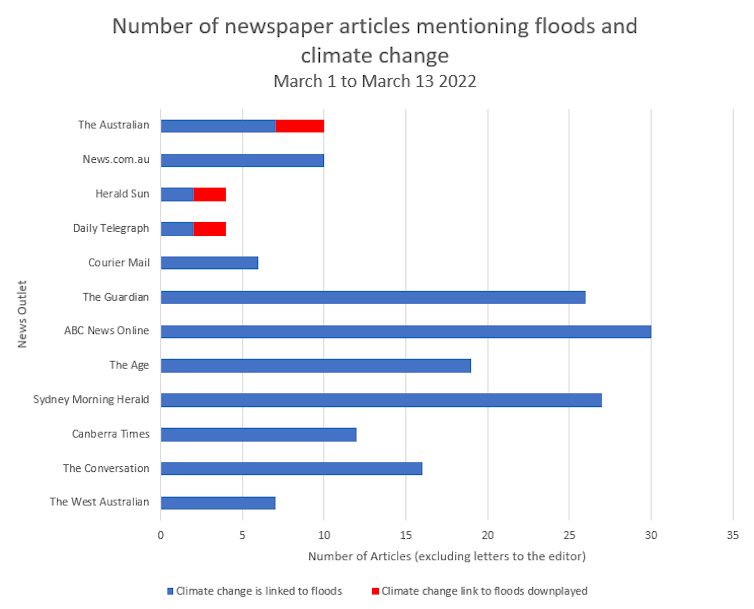
There was some standout coverage making the link in at least one Murdoch outlet, news.com.au. This included a report about the Climate Council’s warnings of the impact of climate change on flooding, and another about the impact of climate change on food prices.
Yet the total number of articles linking climate change to floods in the Murdoch outlets (which also include The Australian, Herald Sun, Daily Telegraph and Courier Mail) lagged behind ABC News, the Nine newspapers, The Guardian and The Conversation.
The analysis also shows the Murdoch outlets were the only news organisations where voices argued the floods were not exacerbated by climate change.
As reported by Crikey, The Guardian and ABC’s Media Watch, conservative commentators such as Andrew Bolt and Chris Kenny continue to muddy the water when it comes to the impact of climate on extreme weather.
For example, Kenny wrote in The Australian on March 4:
The pretence that climate policies can relieve us of these natural traumas is a ridiculously emotive and deceptive ploy.
The Australian’s Chris Mitchell even complained that other media outlets such as the ABC put too much emphasis on the link between climate change and flooding.
How The Media Advocate On Issues
This analysis suggests the Murdoch outlets are not overtly advocating for climate action, nor linking catastrophic flooding with the need for political action aimed at achieving net zero by 2050.
Indeed, editorial hostility toward climate change is alive and well among the most powerful voices at the Murdoch outlets, with coverage that is seemingly more interested in advocating against climate action than for it.
This provides insight into different styles of news coverage and their influence on democratic debate.
Although Australian audiences expect media outlets to produce news that is objective, ideologically neutral and independent of politics, journalists and commentators sometimes play the role of “advocates” for particular issues and causes.
This style of journalism is not widely understood because it clashes with the idealised expectation that journalists shrug off their own perspectives to report without fear or favour.
In a recent study I conducted, I propose there are three styles of advocacy journalism – radical, collaborator and conservative. And each one either enhances or degrades democratic debate.
What I call “radical advocacy” is when journalists deliberately campaign to increase the diversity of voices in news media, particularly when those voices are marginalised from mainstream debate.
An example is The Guardian’s “Keep it in the ground” campaign, which is transparently aimed at improving the public’s understanding of climate change. This style of journalism – although subjective and biased – arguably has a positive influence on democracy since its mission is to increase understanding of a crucial global issue and rally the public to join the cause.
“Collaborator advocacy” journalism is when media organisations cooperate with government, such as when they broadcast flood warnings, advise the public what to do in an emergency or agree not to publish the locations of troops at war.
This style of advocacy can be good for democracy when it is deemed in the public interest. It can, however, be detrimental if the government controls media coverage to the point at which opposition voices are deliberately excluded.
The third style of advocacy – “conservative advocacy” – is one I’ve coined to describe journalism and commentary that promotes the agenda of powerful players in a political or social debate.
An obvious example is the Murdoch media traditionally siding with big fossil fuel and oil interests through their longstanding editorial hostility to policies designed to address climate change.
Conservative advocacy degrades democracy by locking less powerful voices out of the debate, spreading what some would deem misinformation and deliberately downplaying or countering scientific research and evidence-based policy.
If the Murdoch media follow through with their promise to advocate for net zero by 2050, their campaign would fit within the radical definition. But since these outlets are historically entrenched in a conservative tradition, this shift to a more radical position on climate might prove difficult to achieve.![]()
Victoria Fielding, Lecturer
This article is republished from The Conversation under a Creative Commons license. Read the original article.
Avalon Golf Course Bushcare Needs You
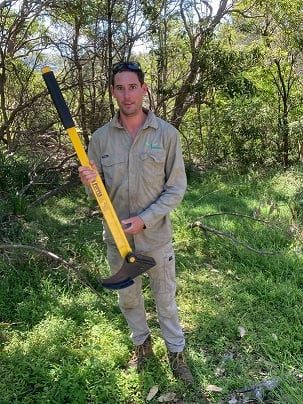
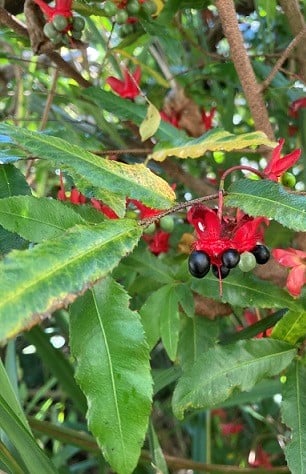
Pittwater Reserves: Histories + Notes + Others
A History Of The Campaign For Preservation Of The Warriewood Escarpment by David Palmer OAM and Angus Gordon OAM
Angophora Reserve - Angophora Reserve Flowers
Annie Wyatt Reserve - A Pictorial
Avalon's Village Green: Avalon Park Becomes Dunbar Park - Some History + Toongari Reserve and Catalpa Reserve
Bairne Walking Track Ku-Ring-Gai Chase NP by Kevin Murray
Bangalley Headland Bangalley Mid Winter
Banksias of Pittwater
Barrenjoey Boathouse In Governor Phillip Park Part Of Our Community For 75 Years: Photos From The Collection Of Russell Walton, Son Of Victor Walton
Barrenjoey Headland: Spring flowers
Barrenjoey Headland after fire
Bayview Baths
Bayview Wetlands
Beeby Park
Bilgola Beach
Botham's Beach
Bungan Beach Bush Care
Careel Bay Saltmarsh plants
Careel Bay Birds
Careel Bay Clean Up day
Careel Bay Playing Fields History and Current
Careel Creek
Careel Creek - If you rebuild it they will come
Centre trail in Ku-ring-gai Chase National Park
Chiltern Track- Ingleside by Marita Macrae
Clareville Beach
Clareville/Long Beach Reserve + some History
Coastal Stability Series: Cabbage Tree Bay To Barrenjoey To Observation Point by John Illingsworth, Pittwater Pathways, and Dr. Peter Mitchell OAM
Cowan Track by Kevin Murray
Curl Curl To Freshwater Walk: October 2021 by Kevin Murray and Joe Mills
Currawong and Palm Beach Views - Winter 2018
Currawong-Mackerel-The Basin A Stroll In Early November 2021 - photos by Selena Griffith
Currawong State Park Currawong Beach + Currawong Creek
Deep Creek To Warriewood Walk photos by Joe Mills
Drone Gives A New View On Coastal Stability; Bungan: Bungan Headland To Newport Beach + Bilgola: North Newport Beach To Avalon + Bangalley: Avalon Headland To Palm Beach
Dunbar Park - Some History + Toongari Reserve and Catalpa Reserve
Dundundra Falls Reserve: August 2020 photos by Selena Griffith - Listed in 1935
Elsie Track, Scotland Island
Elvina Track in Late Winter 2019 by Penny Gleen
Elvina Bay Walking Track: Spring 2020 photos by Joe Mills
Elvina Bay-Lovett Bay Loop Spring 2020 by Kevin Murray and Joe Mills
Fern Creek - Ingleside Escarpment To Warriewood Walk + Some History photos by Joe Mills
Iluka Park, Woorak Park, Pittwater Park, Sand Point Reserve, Snapperman Beach Reserve - Palm Beach: Some History
Ingleside
Ingleside Wildflowers August 2013
Irrawong - Ingleside Escarpment Trail Walk Spring 2020 photos by Joe Mills
Irrawong - Mullet Creek Restoration
Katandra Bushland Sanctuary - Ingleside
Lucinda Park, Palm Beach: Some History + 2022 Pictures
McCarrs Creek
McCarr's Creek to Church Point to Bayview Waterfront Path
McKay Reserve
Mona Vale Beach - A Stroll Along, Spring 2021 by Kevin Murray
Mona Vale Headland, Basin and Beach Restoration
Mount Murray Anderson Walking Track by Kevin Murray and Joe Mills
Mullet Creek
Narrabeen Creek
Narrabeen Lagoon Catchment: Past Notes Present Photos by Margaret Woods
Narrabeen Lagoon State Park
Narrabeen Lagoon State Park Expansion
Narrabeen Rockshelf Aquatic Reserve
Nerang Track, Terrey Hills by Bea Pierce
Newport Bushlink - the Crown of the Hill Linked Reserves
Newport Community Garden - Woolcott Reserve
Newport to Bilgola Bushlink 'From The Crown To The Sea' Paths: Founded In 1956 - A Tip and Quarry Becomes Green Space For People and Wildlife
Pittwater spring: waterbirds return to Wetlands
Pittwater's Lone Rangers - 120 Years of Ku-Ring-Gai Chase and the Men of Flowers Inspired by Eccleston Du Faur
Pittwater's Parallel Estuary - The Cowan 'Creek
Riddle Reserve, Bayview
Salvation Loop Trail, Ku-Ring-Gai Chase National Park- Spring 2020 - by Selena Griffith
Stapleton Reserve
Stapleton Park Reserve In Spring 2020: An Urban Ark Of Plants Found Nowhere Else
The Chiltern Track
The Resolute Beach Loop Track At West Head In Ku-Ring-Gai Chase National Park by Kevin Murray
Towlers Bay Walking Track by Joe Mills
Trafalgar Square, Newport: A 'Commons' Park Dedicated By Private Landholders - The Green Heart Of This Community
Turimetta Beach Reserve by Joe Mills, Bea Pierce and Lesley
Turimetta Beach Reserve: Old & New Images (by Kevin Murray) + Some History
Turimetta Headland
Warriewood Wetlands and Irrawong Reserve
Whale Beach Ocean Reserve: 'The Strand' - Some History On Another Great Protected Pittwater Reserve
Winji Jimmi - Water Maze

New Shorebirds WingThing For Youngsters Available To Download
A Shorebirds WingThing educational brochure for kids (A5) helps children learn about shorebirds, their life and journey. The 2021 revised brochure version was published in February 2021 and is available now. You can download a file copy here.
If you would like a free print copy of this brochure, please send a self-addressed envelope with A$1.10 postage (or larger if you would like it unfolded) affixed to: BirdLife Australia, Shorebird WingThing Request, 2-05Shorebird WingThing/60 Leicester St, Carlton VIC 3053.

 Shorebird Identification Booklet
Shorebird Identification Booklet
The Migratory Shorebird Program has just released the third edition of its hugely popular Shorebird Identification Booklet. The team has thoroughly revised and updated this pocket-sized companion for all shorebird counters and interested birders, with lots of useful information on our most common shorebirds, key identification features, sighting distribution maps and short articles on some of BirdLife’s shorebird activities.
The booklet can be downloaded here in PDF file format: http://www.birdlife.org.au/documents/Shorebird_ID_Booklet_V3.pdf
Paper copies can be ordered as well, see http://www.birdlife.org.au/projects/shorebirds-2020/counter-resources for details.
Download BirdLife Australia's children’s education kit to help them learn more about our wading birdlife
Shorebirds are a group of wading birds that can be found feeding on swamps, tidal mudflats, estuaries, beaches and open country. For many people, shorebirds are just those brown birds feeding a long way out on the mud but they are actually a remarkably diverse collection of birds including stilts, sandpipers, snipe, curlews, godwits, plovers and oystercatchers. Each species is superbly adapted to suit its preferred habitat. The Red-necked Stint is as small as a sparrow, with relatively short legs and bill that it pecks food from the surface of the mud with, whereas the Eastern Curlew is over two feet long with a exceptionally long legs and a massively curved beak that it thrusts deep down into the mud to pull out crabs, worms and other creatures hidden below the surface.
Some shorebirds are fairly drab in plumage, especially when they are visiting Australia in their non-breeding season, but when they migrate to their Arctic nesting grounds, they develop a vibrant flush of bright colours to attract a mate. We have 37 types of shorebirds that annually migrate to Australia on some of the most lengthy and arduous journeys in the animal kingdom, but there are also 18 shorebirds that call Australia home all year round.
What all our shorebirds have in common—be they large or small, seasoned traveller or homebody, brightly coloured or in muted tones—is that each species needs adequate safe areas where they can successfully feed and breed.
The National Shorebird Monitoring Program is managed and supported by BirdLife Australia.
This project is supported by Glenelg Hopkins Catchment Management Authority and Hunter Local Land Services through funding from the Australian Government’s National Landcare Program. Funding from Helen Macpherson Smith Trust and Port Phillip Bay Fund is acknowledged.
The National Shorebird Monitoring Program is made possible with the help of over 1,600 volunteers working in coastal and inland habitats all over Australia.
The National Shorebird Monitoring program (started as the Shorebirds 2020 project initiated to re-invigorate monitoring around Australia) is raising awareness of how incredible shorebirds are, and actively engaging the community to participate in gathering information needed to conserve shorebirds.
In the short term, the destruction of tidal ecosystems will need to be stopped, and our program is designed to strengthen the case for protecting these important habitats.
In the long term, there will be a need to mitigate against the likely effects of climate change on a species that travels across the entire range of latitudes where impacts are likely.
The identification and protection of critical areas for shorebirds will need to continue in order to guard against the potential threats associated with habitats in close proximity to nearly half the human population.
Here in Australia, the place where these birds grow up and spend most of their lives, continued monitoring is necessary to inform the best management practice to maintain shorebird populations.
BirdLife Australia believe that we can help secure a brighter future for these remarkable birds by educating stakeholders, gathering information on how and why shorebird populations are changing, and working to grow the community of people who care about shorebirds.
To find out more visit: http://www.birdlife.org.au/projects/shorebirds-2020/shorebirds-2020-program
Aussie Bread Tags Collection Points

Sydney FC: Remy Siemsen Opens Up About The Loss Driving Her
First Standard Gauge Passenger Line: April 1962
- Albury to Melbourne (priority 1)
- Broken Hill to Adelaide via Port Pirie (priority 2, built 3rd)
- Kalgoorlie to Perth and Fremantle (priority 3, built 2nd)
Word Of The Week: Enthusiasm
- United Cinemas Avalon - Wednesday 30th March, 8 pm
- Collaroy United Cinemas -Thursday 7th April, 7 pm
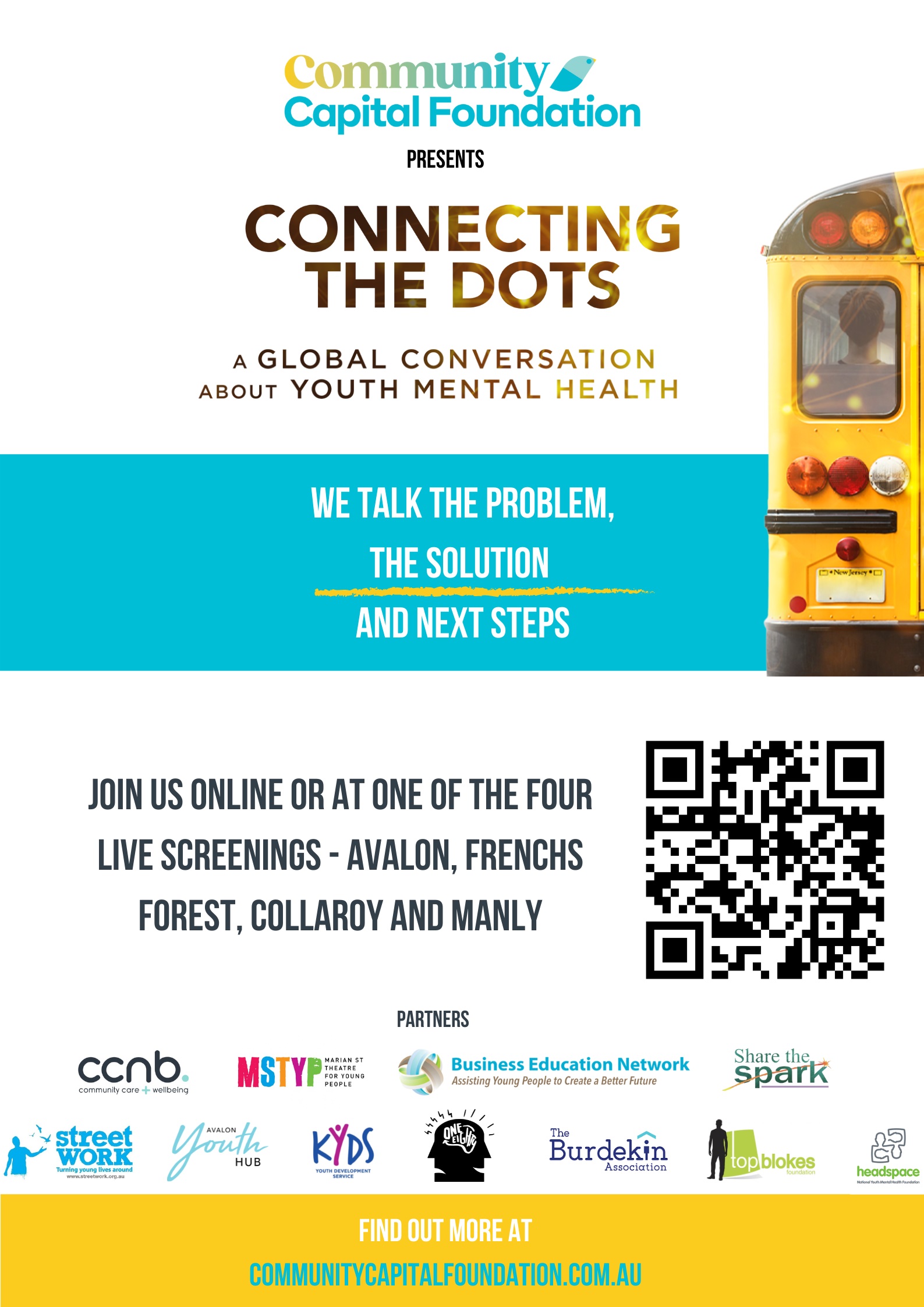

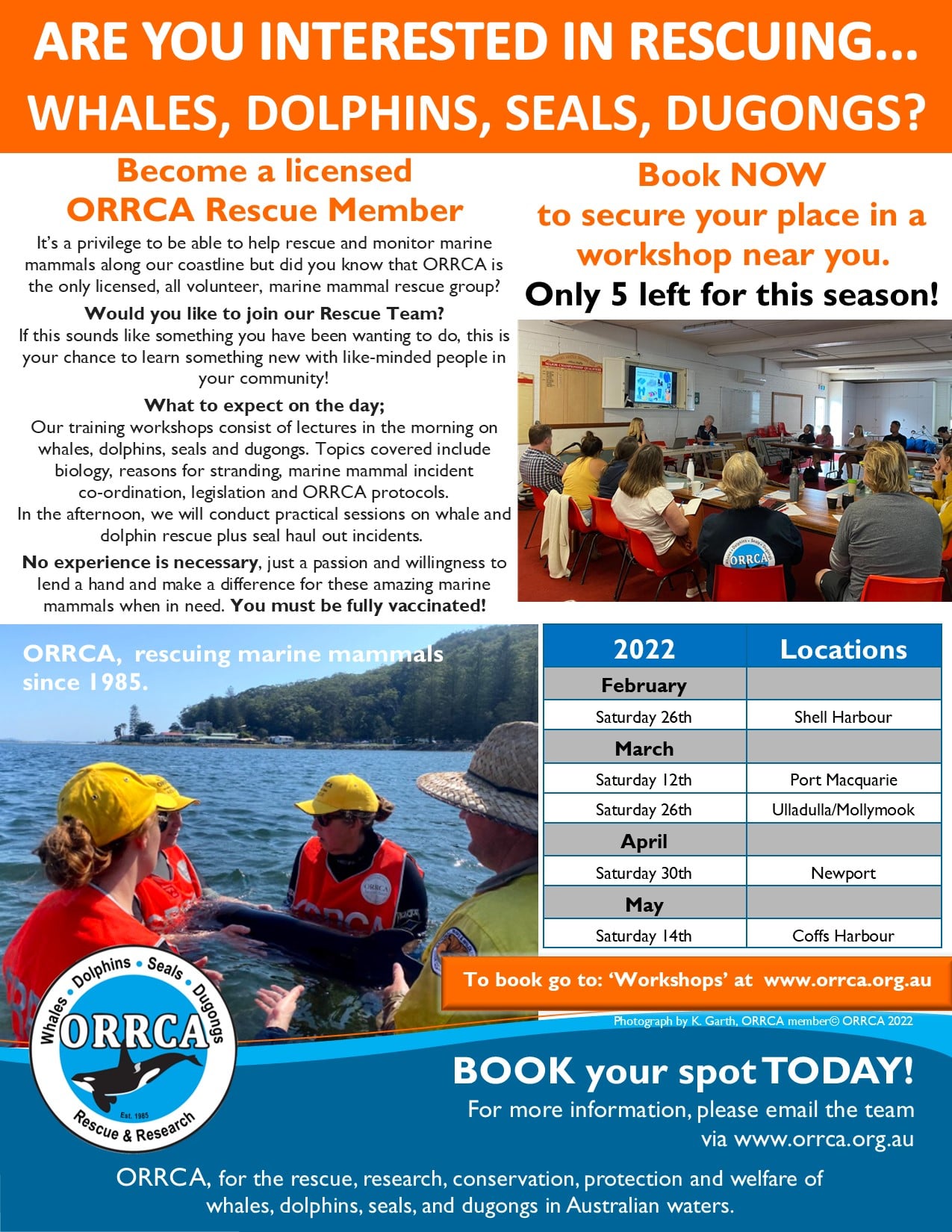

M People - A Sight For Sore Eyes - 1994
Director's Cut: What Happens On Nuyina
What will Australia’s new Defence Space Command do?
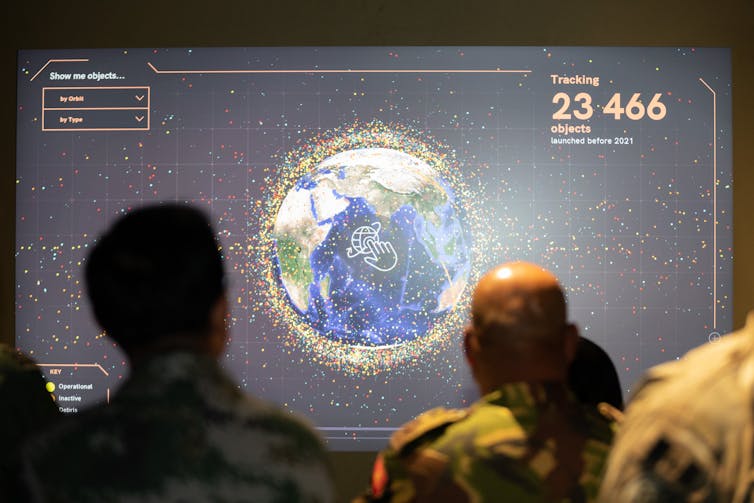
Australia established a Defence Space Command in January this year, “to achieve our strategic space ambitions and lead the effort to assure Australia’s access to space”. The government also plans to spend around A$7 billion on space defence over the next decade.
Many areas within defence are already engaged in space activities, but Defence Space Command will bring them together. It will aim to build space capability not only in defence but also the rest of government, industry, and the research and education sectors.
I’m director of UNSW Canberra Space – the space mission, research and education program at the Australian Defence Force Academy, which develops and flies satellite missions for Defence Space Command. I have seen first-hand how defence, universities and industry can work together to develop Australian space technology and skills.
Preparing For (And Preventing) Conflict
Why do we need to put so much effort into space and space defence? One reason is Australia (like the rest of the world) depends on space-based technologies to provide communications, navigation and timing, and Earth-observing services.
However, space is increasingly “congested, contested and competitive”, according to the United Nations committee responsible for disarmament and international security in space.
Space services such as Planet’s remote sensing network (every part of the planet imaged from space, every day) and Starlink’s broadband internet constellation are growing rapidly. There are now almost 5,000 operational satellites orbiting Earth.
The risk of collisions is increasing, as is the potential for conflict. Many nations now regard space as a “warfighting domain”, and the challenges are not just technological but political and ethical.
Defence Space Command will prepare for such space conflict, and deter it as much as possible.
A Commercial Environment
Another reason for Australia to step more boldly into space is increasing commercialisation. Space is no longer solely the domain of government space agencies. A rapidly growing array of private companies are now leading the way.
The Australian Space Agency, established in 2018, is tasked with growing the country’s space industry to take a share of the global space economy. Along the way, this industry will support Defence Space Command and defence more broadly.
Australian players are new to the game, and the history of competitive markets shows disruptive innovation – the kind that creates new markets or sources of value – is the only way new entrants can compete and win against incumbents. Australia must be prepared to take risks in space, flying often, learning from failure, and commercialising innovative technologies from research-driven space missions.
Australia (defence included) must embrace disruptive innovation in the space domain, or we will become technically capable but not necessarily commercially or militarily competitive.
Skills For Space
To rise to these challenges, Defence Space Command will need a highly skilled space workforce.
There are currently few personnel in defence who understand the complexities and harsh realities of operating in space through hands-on experience. Knowing which missions to do and how to do them right can’t be learnt from textbooks.
Analysis from various quarters also emphasises the workforce of the future will have a growing need for technological skills, particularly in the areas of automation and artificial intelligence; social and emotional skills, for leadership and teamwork in complex situations; and higher cognitive skills, including critical thinking and complex information processing.
All these are crucial for defence. The complexities of the space domain, the cross-disciplinary skills required, and the relevance of space to all aspects of society, mean training a future space workforce can inspire and educate, not just technologists and war fighters, but the critical thinkers and leaders of the future.
How Universities Fit In
This is where universities come in. Many of Australia’s universities are rapidly building space expertise, including Curtin University and the University of Melbourne. Take, for example, our work.
We help meet three critical needs: attracting and training a highly skilled workforce; pursuing and commercialising disruptive innovation; and performing early analysis and feasibility studies of potential space missions.
Defence and UNSW Canberra have jointly invested more than A$30 million since 2015 in this program. In that time, we have has developed four missions with five satellites. We have also performed extensive research and development for artificial intelligence-enabled space systems. We have also tracked and predicted the behaviour of satellites and their interactions with the space environment (known as “space domain awareness”).
Our most recent mission, M2, was launched in March 2021. It consists of two advanced satellites demonstrating technologies for Earth observation, satellite monitoring, communications and in-orbit artificial intelligence.

Our missions have grown defence’s capacity and capability for developing and operating space technologies to meet national needs. The technical and operational lessons we learn feed directly into our space education program and also our plans for the future.
Just as importantly, the team has spawned three Canberra-based spin-off companies (Skykraft, Infinity Avionics and Nominal Systems) and established a domestic supply chain of approximately 30 organisations to support the missions. We have also contributed more than 20 highly skilled space professionals to other parts of the Australian space sector.
UNSW Canberra Space, along with our colleagues across the university sector, agencies such as Defence Science and Technology Group, the Australian Space Agency, CSIRO and Geoscience Australia, and in industry, has ambitious plans for new Australian space missions in the coming years.
The innovations that flow will be many, and the growth in skills across the country will be extensive. With coordination, these outcomes will make an important and enduring contribution to the success of Defence Space Command. ![]()
Russell Boyce, Chair for Intelligent Space Systems and Director, UNSW Canberra Space, UNSW Sydney
This article is republished from The Conversation under a Creative Commons license. Read the original article.
Whoever wins this year’s music Oscar, Hans Zimmer remains the most influential composer working in Hollywood today

As important to films as acting, writing, and design, music can instantly create a realistic or fantastic world, guide emotions and enhance storytelling. Yet the annual Academy Award nominations for best original score are one of the few times film music gets a look in with the general public.
And because they are chosen by Academy members who work professionally in the world of film music, the nominations also serve as a bellwether for current trends in film scoring. The five nominated scores are the ones film musicians themselves have found the most compelling, and are therefore worth the attention of moviegoers.
The 94th Academy Awards will be held in Hollywood on March 27. And so, the nominees for best original score are…
Dune – Hans Zimmer
Hans Zimmer is the most influential composer working in Hollywood today, having scored more than 200 films over his 30-plus years in the industry, including Gladiator, Thelma and Louise, Blade Runner 2049 and the Dark Knight trilogy.
As well as his own nominated score for Dune, his influence can be heard in most of this year’s other nominated work.
Where John Williams, the most influential film composer in the 1980s and 1990s, used thematic melodies and rapidly shifting harmonies to “musicalise” the events and emotions on screen, Zimmer uses varied instrumental or electronic textures and slowly shifting chords to sit beneath action and dialogue.
Dune is a textbook example of his style. Music is as prominent in the mix as the sound effects, and pervades the film in long, slow-burning passages (which film composers call “cues”).
Oscillating semitones and meandering scale figures, often made with an Armenian instrument called the duduk (popularised in film scoring by Zimmer himself in his score for Gladiator in 2000), are played over chugga-chugga rhythms provided by acoustic and electronic drums.
This can all be heard in the cue “Ripples in the Sand”. There is little subtlety in the music, but director Denis Villeneuve and his collaborators compensate with nuanced production design and acting. The film’s best moments produce an interesting contrast with the bluntly expressive music.
Don’t Look Up – Nicholas Britell
What we might call the softer side of Zimmer’s influence is evident in Nicholas Britell’s score for Don’t Look Up, the climate change satire that has divided viewers and critics.
Britell’s cues use the repeating harmonic modules of Zimmer, adding a jazz influence in the timbre (a large brass section and prominent mallet percussion) to cannily suit the satirical tone of the film.
The music cues are mostly short, punctuating major events in the story and covering transitions. Britell is skilful in his ability to convey a scene’s meaning in musical microcosm. For example, the cue “My Boyfriend Broke Up With Me” takes only 30 seconds to set the film’s mood.
Encanto – Germaine Franco
The Zimmer style is also heard in Germaine Franco’s score for Encanto. Franco takes Zimmer’s typical aesthetic markers and adapts them to the animated family film genre.
In fact, the music often sounds a lot like Zimmer’s Lion King score, albeit with South American musical features rather than African ones.
Listen to “Antonio’s Voice”, for instance, which incorporates Colombian chanting in its textured motives. It is an effective score for a charming film, but very much a long shot to win the Oscar, which nearly always goes to dramas or epics.
Parallel Mothers – Alberto Iglesias
Alberto Iglesias is not as well known in the English-speaking world as some of the other nominated composers, and most of his work has been in his native Spain.
That may change, with his nomination being the first in many years for a non-English language film. Scored for his frequent collaborator, director Pedro Almodóvar, Iglesias’s music helps make Parallel Mothers a must-see melodrama about motherhood and Spanish national trauma.
Like Zimmer, Iglesias is largely influenced by Alfred Hitchcock’s favourite composer, Bernard Herrmann. And like Herrmann, he uses repeating but subtly shifting musical modules, usually favouring strings.
The film’s trailer (which uses the actual music from the film, surprisingly unusual in trailers) demonstrates how well the score fits the mood Almodóvar creates with his images.
The Power Of The Dog – Jonny Greenwood
The one major exception to the Zimmer influence among this year’s nominees is Jonny Greenwood’s score for The Power of the Dog. And for me, it’s the standout because of its different approach to matching music with onscreen action.
Greenwood makes careful use of melody, harmony and texture, not just to serve as wall-to-wall aural carpeting, but rather to actually interpret the dramatic setting and what is happening between the characters.
His music doesn’t merely reinforce what we can already see, but adds a layer of meaning, effectively amplifying Jane Campion’s languid yet intense storytelling.
Greenwood’s favourite composer, Olivier Messiaen, is very much in evidence, but he finds his own version of Messiaen’s innovations in melody and harmony. Greenwood also incorporates certain stylistic features from maverick 20th century American composers Charles Ives and Conlon Nancarrow, matching the film’s 1920s western setting. The cue “Best Friends” illustrates this well.
The Envelope Please…
The front runners seem to be Dune and The Power of the Dog, both of which have done well in other awards this year. But with the final decision voted on by the full Academy membership, rather than just the music branch, the Oscar is somewhat more of a popularity contest.
Setting my own tastes aside, however, all five are worthy nominees and undoubtedly represent the foremost current trends in film composing.![]()
Gregory Camp, Senior Lecturer, University of Auckland
This article is republished from The Conversation under a Creative Commons license. Read the original article.
Thinking of swerving high fuel prices with an e-scooter or e-bike? 5 crucial questions answered

Petrol prices are hitting eye-watering highs. As global affairs put pressure on the availability of commodities, we’re likely to continue seeing volatile petrol prices in the future.
So there’s never been a better time to embrace alternative modes of transport such as e-bikes and e-scooters (also called “micromobility” devices).
In Australia’s major cities, the average car trip is around 10km (a distance many people would consider to be within cycling range).
As both researchers and users of micromobility vehicles, we’re here to help answer some common questions that arise when people consider becoming an e-bike or e-scooter rider.
1. What Are The Benefits Of E-Scooters And E-Bikes?
E-bikes have been around for some time. Most are “pedal-assisted”, which means the electric motor kicks in when the rider starts pedalling. They’re a good option for longer trips (5-15km), covering hilly terrain, or riding in warm weather.
They can also carry loads on attached baskets or pannier bags. Some cargo e-bikes can be used for shopping runs, or even for operating small mobile businesses.
More recently, e-scooters have grown in popularity. They’re usually ridden standing (although seats can be added as an accessory).
E-scooters are easier to park and take up less space. They can also replace those short car trips that are just too far to walk. As of recently, passengers have been allowed to take e-scooters and bikes on South East Queensland trains, allowing for first- and last-mile connections.
If you’re unsure whether either vehicle is right for you, most major cities offer hire schemes (such as Beam, Lime or Neuron) that let you try before you buy.
These are generally dockless sharing schemes that allow users to park anywhere near their destination, as long as they park responsibly on a footpath and avoid cluttering.
Our past research has shown students are receptive to having shared e-bikes offered at university campuses, and that tourists find shared e-scooters handy when visiting new places.
2. What Are The Rules In My State Or Territory?
In Australia, e-bikes that comply to certain European standards (regarding what actually constitutes an electric bike) are allowed on public roads and governed in a similar way to bicycles.
However, the legality of riding e-scooters (or similar devices) in public differs by state and territory.
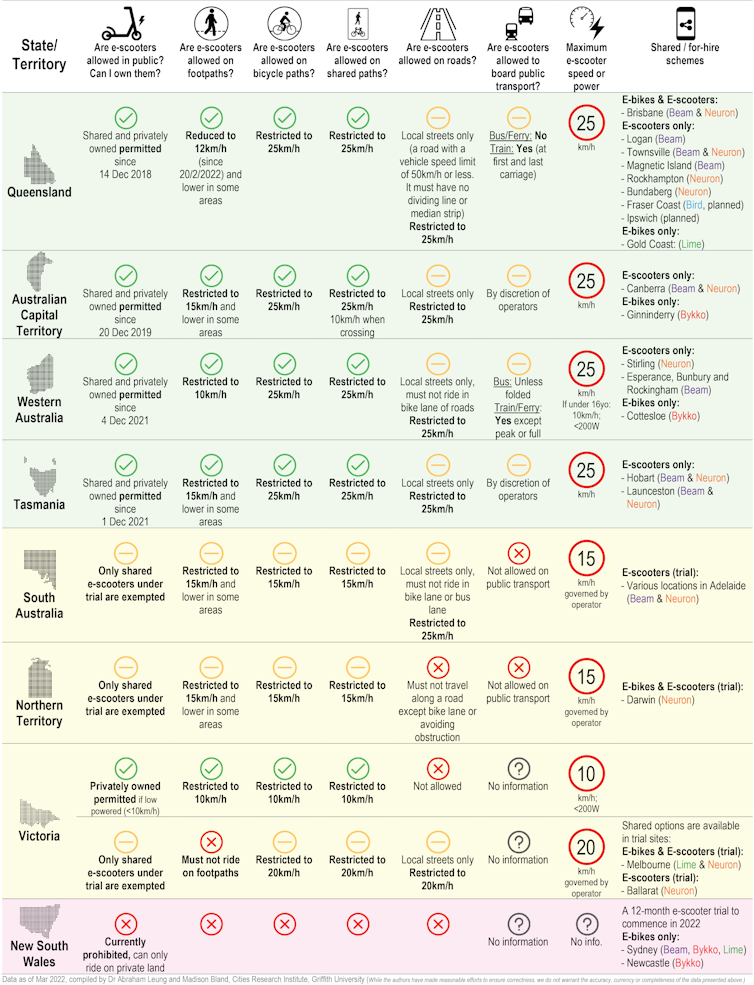
As per current regulations, the more “scooter-friendly” states are Queensland, the Australian Capital Territory, Western Australia and Tasmania. These states have both share schemes and also allow privately owned e-scooters to be ridden in public.
Victoria, South Australia and the Northern Territory only allow shared e-scooters at selected trial sites, but in general don’t allow privately owned e-scooters to be ridden in public.
Public areas in New South Wales remain a no-go for e-scooters (although trials have been announced to start this year).
Users should check their own state or territory’s road rules and regulations before using or purchasing an e-bike or e-scooter.
3. How Much Fuel And Money Can I Save?
The cost of buying a micromobility vehicle will vary greatly depending on the vehicle type, battery and add-ons (such as a rack, lights or remote tracking).
We recently surveyed privately owned e-scooter users in South East Queensland, and found most popular models are priced between A$500 and A$1,500. Higher-end models can cost more than A$2,000 (which is still much less than a car, and especially an electric car).
E-bikes are slightly pricier, with most models costing between A$1,000 and A$3,000, and only a few options under A$800.
The operating costs for micromobility vehicles are mostly for electricity and maintenance. The good news is these costs are also low, as the vehicles are much lighter than cars and use efficient electric motors. It’s estimated that with one kilowatt hour of energy an e-scooter can travel 100 times the distance a petrol car can, and 17 times the distance of an electric car.
In Australia, the average passenger vehicle travels 11,100km per year and requires 1,232 litres of fuel. At current prices, this equates to more than A$2,700 spent on just fuel, let alone other costs such as lease or loan payments, insurance, registration and repairs.
And if the upfront costs of purchasing an e-bike or e-scooter seem too high, some companies are starting to offer these vehicles for rent by means of a monthly subscription fee.
4. Is It Safe?
Safety is a key concern for all road users. As micromobility remains a novelty, the safety record for these vehicles is just being established. That said, a 2020 International Transport Forum report suggests the risk of e-scooters is comparable to cycling.
The available figures for shared e-scooter risk range between 78 and 100 fatalities per billion trips, whereas cycling risk across cities ranges between 21 and 257 fatalities per billion trips. In comparison, motorcycles or mopeds have a risk range between 132 and 1,164 fatalities per billion trips.
While there’s little data on e-scooter safety, cycling statistics suggest there is a “safety in numbers” effect. This means there are less fatalities in countries where cycling is more common.
Current e-bike standards are more mature compared to e-scooters. E-scooters available on the private market are not as well regulated, and may exceed local speed or power restrictions (which are usually 25km/h).
Pedestrian and disability interest groups have expressed concerns dockless shared e-devices can create trip hazards or block footpaths. Such concerns are valid, and addressing them will require careful management by scheme operators and local authorities.
5. Will Australia Make It Easier To Ride Them?
Australia is well placed to take advantage of the burgeoning micromobility market and reduce the impacts of higher petrol costs.
We believe there is too much attention placed on creating incentives for the electrification of full-sized electric vehicles. For instance, the Queensland government’s recently announced electric vehicle subsidy doesn’t include e-bikes or e-scooters.
Research shows three in four people are interested in cycling, yet the lack of safe routes raises concern for bicycle, e-bike and e-scooter users. Appropriate cycling infrastructure, including protected bike lanes and off-road paths, are essential to encourage the uptake of both cycling and personal mobility devices.
Advances in micromobility vehicle design and technology may also help improve users’ safety and experience. Built-in sensors could help detect hazards and alert users and pedestrians, as well as enable effective parking management.
It’s likely such advanced micromobility vehicles will first appear in shared schemes, but government-issued mandates may eventually require all micromobility vehicles to have these features.
This article was coauthored by Timo Eccarius, Assistant Professor of Sustainability Science and Engineering at Tunghai University, Taiwan.![]()
Abraham Leung, Postdoctoral Research Fellow, Cities Research Institute, Griffith University and Madison Bland, PhD Candidate, Cities Research Institute, Griffith University
This article is republished from The Conversation under a Creative Commons license. Read the original article.
Friday essay: ‘this is our library’ – how to read the amazing archive of First Nations stories written on rock

Aboriginal and Torres Strait Islander readers are advised this article contains images and names of deceased people.
First Nations peoples have lived in north Australia some 65,000 years at least, according to the archaeological evidence. Their history is among the oldest of any in the world. Until recently, though, academics deemed the pasts of Australian Indigenous people did not really count as history. These pasts were of some other quality, they were not the kind that determined world events and shaped the future.
It might seem strange today for some peoples’ pasts to consist only of “myth” or “memory” but others to have the dignity of “history”.’ But when the academic disciplines we know today were taking shape, writing became the dividing line between whose pasts were studied by which academic experts. The historians took writing. Archaeologists took the rest.
In a way, this division made sense, at least from the perspective of European scholars. The study of written records held in an archive requires one kind of expertise, the study of material culture requires another.
The written record was the domain of historians, and whatever came before writing fell to archaeologists. Historians called their times “history”, and archaeologists (except for “historical archaeologists”) studied the newly-coined “prehistory”.
“Prehistory” covered the entire human past up until Mesopotamians started writing things down, about 5,200 years ago. After that, it gets complicated, as different peoples in different parts of the world adopted written literacies, or not, at various times. “History” had different start dates, depending on the particularities of whether and why people wrote, or encountered others who wrote about them.
Of course, this implicitly meant, for many peoples, that “history” began when European colonisers arrived, bringing their writing with them. And so cultures that used literacies other than written script to know their pasts – oral traditions, art and song – were mistakenly deemed not to have history at all.
Archives On Stone
Australia’s First Nations people have been saying, quite clearly, repeatedly and for some time, that they do have archives. For many reasons, colonial archives have not been welcoming or accessible to many Indigenous people (although they are now being reclaimed and repatriated by Indigenous communities).
But First Nations people have their own vast repositories of knowledge of the past, if only more historians cared to listen and understand them as such. One such record is rock art.
As Carol Chong (Wakaman), once declared:
Rock art is our record and our keeping place of our knowledge, lore and culture. Rock art is a powerful link between our country, our past and our people.
Patrick Lamilami (Maung) has similarly reported:
Our rock art sites are like history books to us that have stories to pass on to future generations.
Rock art comes in many forms. Some was left by Creative Beings, like the Wandjina in the Kimberley. Most was created by the Old People, the Ancestors. As documents created by observers of happenings, rock art provides evidence about the past. The stunning galleries of art, curated and preserved in rock shelters or across plateaus are therefore also archives. They are collections of records, selectively produced, preserved and maintained.
This archive has its own creators, curators and interpreters, playing a role in the keeping of memory for the community. It can be “read” by those who understand such a text. Like a written archive, it reflects the interests and concerns of that community.

History On The Rock – Quilp’s Horse
Of course, rock art is not the only archive holding records of long Aboriginal pasts. It is only a surface manifestation of the richer archive that is Country itself. The landscape holds the song-lines and stories of the continent. Rock art simply makes this deeper record visible. Indeed, some rock art is itself a manifestation of the Ancestors.
Our forthcoming book is about understanding rock art as an archive, a source of historical knowledge. So, for example, we take this painting near to the Gunbalanya community as a source.

The artist depicted a delicate, light riding horse rather than a heavy working horse. You can see the convex bridge of the horse’s nose and the long head. The carefully outlined eyes and ears give an intimate feeling. This is not a generic horse, but a known horse. The position of the ears may indicate that it is listening backwards, maybe paying attention to her rider.

The western Arnhem Land community knows and remembers the artist who painted this work: Quilp. He was a Wardaman man, kidnapped by buffalo-shooter Paddy Cahill as a boy after his family was massacred, and taken to west Arnhem. He survived and persisted through the violent colonial period because he was good with horses.
When the rock art is read alongside the colonial archive, with an attentiveness to the presence of horses in the artists’ life, we see a story emerge of Aboriginal people using the colonisers’ animals to carve out opportunities for themselves. We see an affinity, even an intimacy with the strange new beasts, together navigating relationships with the “white boss”, as a form of resilience and, in Quilp’s case, survival.
Reading rock art is not without challenges. Like other complex and sophisticated sources, it requires cultural expertise. Rock art, ultimately, can never fully be “read” and understood without the guidance and permission of its owners, and outsiders could never presume to be the experts. Consider this buffalo painted at Djarrng in west Arnhem Land, for instance.
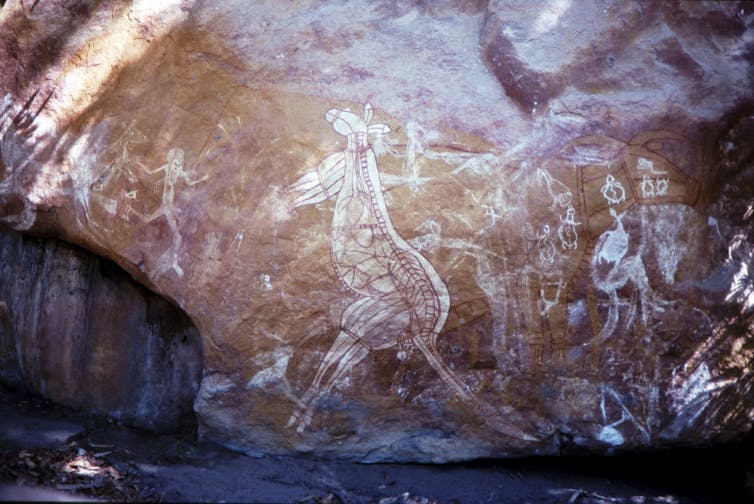
Timorese water buffalo arrived in Arnhem Land in the mid 19th century after the British brought them to their settlements on the Cobourg Peninsula and Melville Island. When their poorly planned settlements collapsed, they left, releasing buffalo, which quickly multiplied.
For the historian interested in Aboriginal records of the past, it is tempting to read the paintings of the buffalo as a depiction of what was supposedly a disruptive and singular event: the release of the buffalo and their expansion through Aboriginal lands. Could we not assume that an encounter with these beasts provoked Aboriginal artists to record what must have been a bewildering experience?
But those who can read the paintings will tell you something else. Traditional owners see the yellow colour and understand that the artist was expressing belonging in their kinship system; the yellow meant the Yirridjdja moiety.
Yellow ochre itself is the transformed bodily fat of Yirridjdja Ancestral Beings, imbuing the painting with power. So the buffalos are not presented as intruding newcomers to Country. Rather, they are revealed as already embedded in Indigenous ways of relating to Country. The rock art is evidence of a history, but it is not the story one might expect.
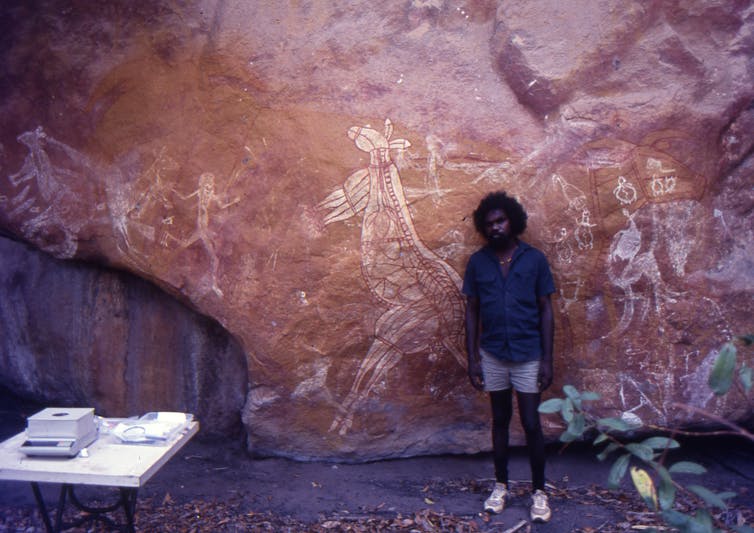
Some art is even invisible. Two Leg Rock in Kakadu National Park is shaped like a pair of human legs. At its pelvis, over the right hip, there is a painting of an important Ancestral Being in the form of a kangaroo. The painting is depicted in bright, stark white pigment – delek. But visitors to Two Leg Rock today will not see it.
Exposed as it was to the elements – with monsoonal rain passing every year – the painting has faded altogether. But the painting is not gone. Those who can “read” and understand the archive that is the rock art of western Arnhem Land assure us that it remains as present as it was the day Billy Miargu traced its outline in 1972.
This hidden painting exists in a different kind of time to that of the researchers who charted its linear lifespan of creation and subsequent fading away. Many First Nations people experience and relate to time in different and more complex ways than the linear time assumed by academic disciplines. Rock art exists in times that are unchanging, permanent and always alive and active in the present. This is not the chronology of western archives.
Transcending Academic Concepts Of Time
The western process of archiving presumes a linear notion of time in its record-keeping practices. Documents are said to progress through a “lifecycle”. The metaphor is cyclical but the concept assumes linearity; there is no rebirth in this cycle.
The documents move from their initial use for which they were created and either transform into “records” as they enter the archive or are destroyed. The creation of the document is disconnected from its use as a record. The researcher is always temporally disconnected from that which they seek to know.
The disciplines of history and archaeology, likewise, presume this kind of time. Archaeology is interested in origins and history, of charting “developments” and “innovation”, “cultural evolution” along a linear timescale.
Academic history, likewise, presumes the times of historicism, where historical “developments” – with cause leading to effect – occur over a linear timeline that is both uniform and universal. Any event in the world can, supposedly, be plotted onto this timeline, like pearls on a string.
Settler observations of the unique Indigenous articulations and ways-of-being in time has led some to conclude that Australia’s First Nations cultures are “timeless”. That is, Indigenous relationships with time supposedly exclude the possibility of a cultural self-awareness that might be called an “historical consciousness”. Such ideas have been grounds on which Indigenous knowledges of the past were excised from “history” and labelled “myth”.
But this is not how Traditional Owners describe and experience time, nor the relationship of rock art to time. The rock art is not timeless but rather connects time, drawing the generations and Ancestors together. They insist that this is history on the rocks, not simply “tradition” or “myth”.
As Wergaia Traditional Owner Ron Marks explains:
Here, this is our library – this is our art gallery. It warms the heart to know that for thousands of years – stories have been written on rock.
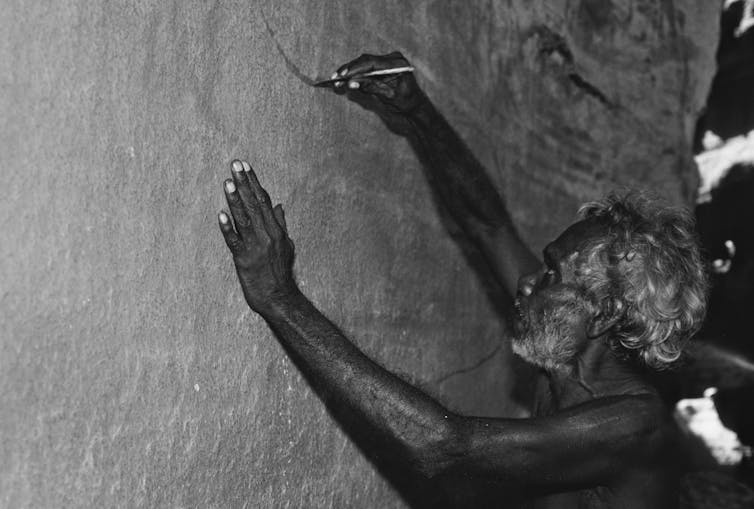
Sharing Knowledge Across Generations
Josie Maralngurra, (see lead photo), is not a rock art artist herself. Nonetheless, her life story reveals the multilayered ways in which rock art is a “vehicle of memory” and touchstone of her community’s profound historical consciousness.
Josie was born in 1952 in the “bush” (that is, not at a mission or settlement). Her father, Old Nym Djimongurr, was working for buffalo shooters in what today is Kakadu National Park. In the 1950s, when Maralngurra was little, the family worked at Russ Jones’ Arnhem Timber Camp. Maralngurra was also close to the famous rock art artist Nayombolmi, and called him grandfather.
Maralngurra and her family, along with Nayombolmi and his wife, walked Country throughout her childhood. When not staying in stringy-bark huts, they took shelter in the rocks. Maralngurra described her father and grandfather’s habitual painting in rock shelters where the family stayed.
The men “wanted to sit and do paintings all the time,” she said. Painting was part of daily life in the wet season when the family camped in rock shelters. As a child, she witnessed the creation of rock art across numerous sites.
Today, Maralngurra still remembers these journeys and the painting. She tells of when her family visited these sites, how old she was and where she slept. She can remember who came with them, how long they stayed, what they ate. She remembers the details and stories associated with the rock art.
Children like Maralngurra were often present at the creation of rock art. Sometimes they worked to prepare the pigments themselves. Sometimes the process of painting was their entertainment. Maralngurra tells of her work grinding pigment and gathering food and water.
As she helped the old men, she asked them to tell her the stories of their artworks. So she learned the stories of Country, the Ancestors and their exploits, as well as the protocols of how she and her kin must live today. The process of creation of the artwork was her education.
According to traditional western understandings of archives, they should ideally be “by-products” of human activity. That is, they should not be created with their future as a record in mind. It is this unselfconsciousness that enables them to provide rich evidence for past human activity – they are documents created without thought to influencing future historians.
Although it might be assumed that Aboriginal rock art is often created to record events for posterity, that is not often its main function.
Much of the rock art at Kakadu is the residue of education and knowledge sharing. It is also evidence of how Josie’s ancestors passed the time, telling stories as they painted. Some paintings were originally ways for artists to develop their technical skills. Some were painted simply for fun. Other art was created in a ritual context and may be the remains of ceremonial secret knowledge. Either way, the art at Kakadu was created primarily for its immediate uses.
Yet some of the art is future-oriented, created with the express purpose of embedding memory. Sometimes, for instance, the very bodies of children like Maralngurra were represented on the rocks. In some places, Maralngurra’s own hands joined the painting on the rocks. The outline of her child-sized hands are there, along with those of others. They were created by her father Djimongurr by blowing delek – white pigment – onto her hand and rock, leaving a negative shadow print of her hand on the panel.
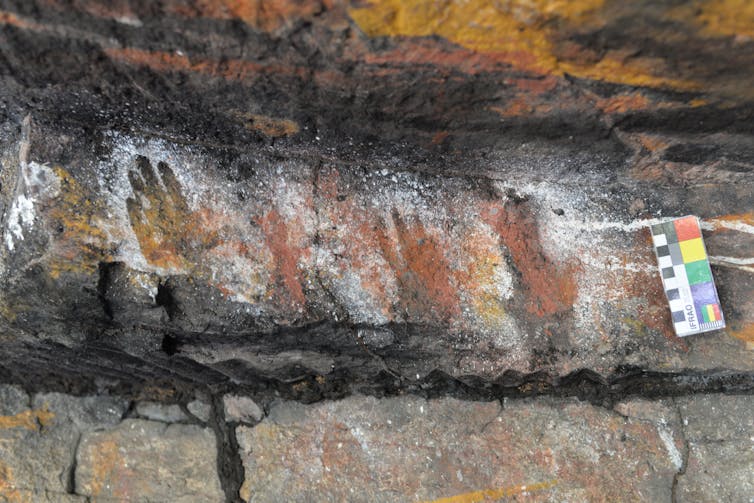
Hand stencils are present in rock art around the world. Sometimes they were made to record one’s connection to the place, sometimes they are like a signature, “signing the land”. Sometimes they have been altered to form memorials for people who have died. Sometimes they are located in hard to reach places; surely evidence of the agility and daring of the artist. Whatever their intent, they declare to generations thereafter, “we were here”.
Literally embodying the rocks drew connections between people and landscape, emphasising belonging, and preparing children for their future responsibilities. One generation’s hand-stencils are later witnessed by those to come.
Maralngurra’s life history and experience – the memory of placing her hands on the rockface as a little girl – was inscribed into the landscape, becoming a touchstone for memory.
Rock art is invaluable as an archive for a First Nations history that stretches back millennia. Until now, however, it has not been recognised as such, at least, by non-Indigenous scholars. That is because this Aboriginal archive is a different kind of repository, for a different kind of history, grounded in a different kind of time than the limited pasts many Australians (and academics) are used to knowing.
By their very nature, and by design, these repositories can only be read by and with Traditional Owners to guide. So much the better. We hope that by seeing history on the rocks, history itself might become ever richer.![]()
Laura Rademaker, ARC DECRA Research Fellow, Australian National University; Joakim Goldhahn, Rock Art Australia Ian Potter Kimberley Chair, The University of Western Australia; Mr Gabriel Maralngurra, Co-manager, Injalak Arts, Indigenous Knowledge; Mr Kenneth Mangiru, Danek Senior Traditional Owner, Indigenous Knowledge; Paul S.C.Taçon, Chair in Rock Art Research and Director of the Place, Evolution and Rock Art Heritage Unit (PERAHU), Griffith University, and Sally K. May, Associate Professor
This article is republished from The Conversation under a Creative Commons license. Read the original article.
Distance, dispassion and the remaking of Australian History

Anna Clark could have titled her book “Remaking Australian History”, for that is its narrative arc.
She celebrates a change in the stories Australians can tell of their nation: from a heroic tale of white male achievements (populating and fructifying an empty land, establishing a variant of western civilisation) to stories that acknowledge the continent’s ancient human past, the brutalities of colonisation, and the diversity and increasing self-doubts of the usurping newcomers.
Review: Making Australian History - Anna Clark (Vintage Books)
Clark grew into her profession (teaching and writing history in universities) as scholarship was establishing this new narrative, and her book names and honours many of those now responsible for sustaining and propagating it.
She has much to say about History – the uppercase “H” signifying “the subject that’s taught in schools and universities, has established professional associations and qualifications”. What makes it important to her is that History is a major source of historical consciousness – a “sense of the past”. How well or how badly has History shaped Australians’ historical consciousness? Could History do this culture-forming job better?
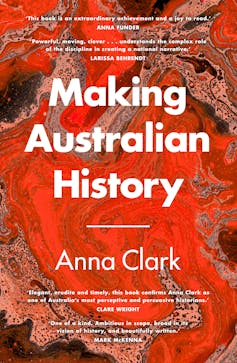
Clark intends her history of making Australian History to be an “analysis of the structure, function and ethics of the discipline itself”. She has much to say about History’s aspiration to “objectivity”, pointing out its inescapable complicity with emotions, its duty of ethical formation, its permeability to nation-making, and its changing claims to cognitive authority.
Her grounds for evaluating History are primarily civic or ethical. Twice she decries its “hypocrisy”. Each time it is for archiving the Indigenous presence, but leaving Indigenous people out of the national narrative. She faults History for its long silence (c.1890s to 1970s) about Australia as a violent settler-colonial project and its partiality to the colonists’ most self-admiring accounts.
As Clark observes, one of the abiding problems of History as a discipline all over the world is that, for all its scholarly objectivity, it is porous to the ambient, strident noise of nation-building. She acknowledges that her own critique and celebration of Australian History is no less a product of a prominent concern of our times: how to find a just relationship with Indigenous Australians.
The Rise Of Federation Historiography
Clark begins her book by assuring us that when colonists arrived and began to narrate themselves as actors in history, Aboriginal people already had “forms of history-making”. She infers this from their rock art, which soon began to include depictions of the newcomers.

She proceeds to read excerpts from colonists’ writings that gave early 19th century settlers a positive sense of themselves as founders whose colonising deeds were not only constructive but “inevitable”. Clark sees deep complicity between the colonists’ introduction of History, taken to be revelatory of the true past, and their innovation of a social order that marginalised and managed surviving Indigenous Australians, who were thought to have neither past nor future.
Her chapter on histories of the convicts illustrates a major theme: how the treatment of an enduring topic can change over time:
While certain official narratives and histories did their best to position ‘The Convicts’ in the distant past, or to avoid them altogether, a new school of politically radical, working-class histories did the opposite.
Further revisions (Marxist, feminist) of these revisions have followed since 1970.
Clark then points to a moment – the turn of the 20th century – when there were rival perspectives on Australia’s history: “Unifying secular national sentiment rubbed uneasily against regional, radical republican and sectarian religious identities.”
Sectarian religious identities did not go away. In 1946, John Murtagh’s book Australia: The Catholic Chapter depicted our history as an instance of “the crisis of liberalism”, as seen from the perspective of the Catholic Social Movement.

Now, multiculturalism is probably encouraging Islamic and other perspectives on Australian history. Clark is open to the effects on historical scholarship of Australia remaining a diversely religious nation; she hails Samia Khatun’s groundbreaking history of South Asian migration Australianama (2018).
Rather than explore these possibilities, however, Clark keeps her history of Australian History focused on the “secular national sentiment” that flourished with the formation of free, compulsory and secular education systems and became dominant in the Humanities disciplines, including History.
Clark established her academic reputation with studies of contemporary practices of school history teaching. History, she argues, became central to the moral education of Australians the more moral education came to be mediated by the state, rather than by the church. Nationhood needs a past, and Clark gives the label “Federation historiography” to the morally fortifying past that historians began to supply in the 1890s.
In Federation historiography, Aboriginal people and the colonial violence of their subjugation were mentioned either briefly or not at all. Progress was one theme, soon joined by valour. Gallipoli was interpreted as a nation’s coming of age; the Digger became “the secular everyman”.
Clark is careful not to disdain the popular emotional need that Anzac has continued to address. Anzac would not be a legend if it were not a “vernacular achievement”. It remains labile, its moral implications variously renewed by social movements and political leaders.
Clark is not against History being “sentimental”. Indeed, she distrusts History when it seeks to rise above emotion and judgement. In a chapter centred on Myra Willard’s book History of the White Australia Policy to 1920 (1923), Clark highlights that Federation historiography presented Australia as “white”. By telling her story “diligently and dispassionately”, Willard presented White Australia “as an unproblematic aspiration and ideology”.
This rhetorical effect could not last forever. New readers came to Willard, bringing new questions and anxieties. After Nazism, Clark asks, “was it even possible to regard ‘whiteness’ dispassionately anymore?”
Should History Be Dispassionate?
What most interests me about Making Australian History is Clark’s presentation of “dispassion” as a problem, for I am more aware of it as a virtue.
While reading her book, I was drafting the following “learning outcome” for a unit I am teaching: “You will be able to speak and write thoughtfully and dispassionately about troubling aspects of Australia’s history.”
My tutor – recently graduated and 49 years my junior – advised me to delete “dispassionately”.
Continuing to read Clark, I soon came across her book’s second example of a “dispassionate” historian: Keith Windschuttle replying to critics of his book The Fabrication of Aboriginal History (2002) that the responsibility of the historian was to be dispassionate, not compassionate.
While I disagree with Windschuttle’s approach to the history of Tasmania, I sympathise with his aspiration to dispassion. Clark does not question his contrasting of dispassionate and compassionate, but I would.
This raises the question of what we mean by historians’ “distance” from those whom they study. Windschuttle’s narrative standpoint was “distant” from both the British and the Aboriginal people – but in different ways. He chose to empathise with the official British view that Aboriginal people were lawless and he trusted the British body count. His critics empathised with Aboriginal people’s defence of their way of life and gave plausible reasons for thinking that much killing was undocumented.
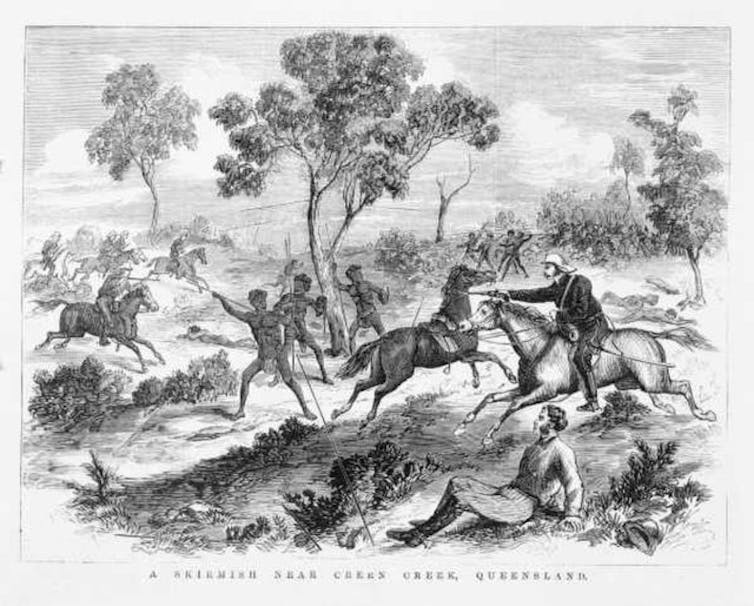
How to empathise with people of the past and see their world through their eyes, insofar as we have evidence of their thoughts, is one of History’s defining challenges. Who to empathise with is also the historian’s methodological decision; it is affected by the historian’s moral and political outlook.
Our empathy for past actors could even be called our “compassion” for them. However, our empathy/compassion is necessarily constrained by the limits of our evidence and by our moral inclinations. Because “we” are not “them”, empathy requires an imaginative leap over a temporal and perhaps cultural distance. Such “distance” includes our retained capacity to dislike or not approve of them.
We can be glad for the gap over which we are leaping when we empathise, because the distance enables us both to understand an action and find it morally disgusting.
The historian then faces a choice whether to state their moral judgement explicitly, to imply their moral judgement by choosing certain words, or to seek scrupulously neutral language so that the reader is not aware whether the historian even feels a moral evaluation.
The Problem Of Distance
If distance affords the historian such choices, then it may be a more useful and necessary quality than Clark implies. If distance is a problem, a necessity and an asset, then it requires a more careful discussion that Clark provides in her chapter on “Distance”.
This is her book’s absent philosophical centre. It is widely agreed that, as a concept within the theory of History, “distance” is a metaphor, not to be pinned down to a single meaning. Clark takes this as permission to deal with “distance” in a way that is so metaphorical as to be unhelpful.
She begins her chapter by admiring Geoffrey Blainey’s insight that great “distance” (between Britain and Australia, within Australia) has profoundly affected every aspect of Australian history since colonisation. She then charts the emergence after World War II of historians’ claims that Australian history is so different from other nations’ that it should not be treated simply as a florescence of British civilisation.
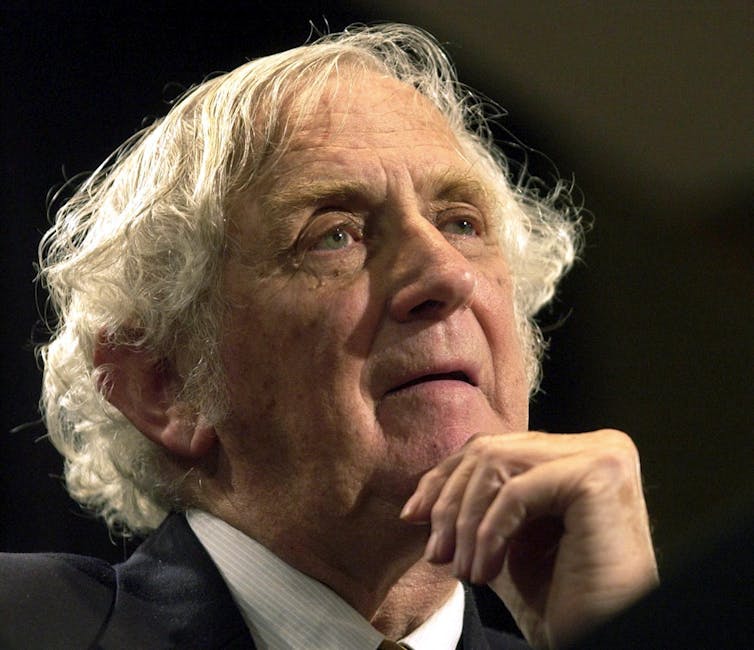
Emboldened by this conviction, white male historians of various political affiliations became a “school” united by two commitments: to an object (Australia), whose characteristic feature was the colonists’ successful struggle with uniquely forbidding “distances”, and to the assumption that their History of Australia “was objective and verifiable”.
In Clark’s usage “distance” becomes the word that staples these two ideas together, so that distance as a fact of geography and historians’ “distance” from their object of study become allegories of each other.
To make her critique of Blainey and his generation, Clark proceeds to load “distance” with negative connotations. She seeks to show that aspiring to be “objective and verifiable” made these historians “distant” from features of the past to which they should have attended, such as “interior lives or emotional subjectivities” and Indigenous people’s experiences of colonisation.
She then suggests that pursuit of the theme of Australians’ distinctive “distance” obscured the many connections between people in Australia and people elsewhere. She points out, for example, that maintaining “whiteness” and institutionalising History as a discipline were not distinctive projects of Australians. These two corrective examples are the fruit of what she calls “transnational history”.
Clark contrasts the “transnational history” practised by her generation with the nation-centred history practised by Blainey’s generation. Her method of argument is to suggest associations between the negative senses of the word “distance” that she compiles.
I admit to finding it difficult to summarise this chapter as an argument, and I hope I have not been unfair, but I found this chapter not so much an argument about historians’ “objectivity” than an extended pun on the word “distance”.
Implying that “distance” was a problem of a particular “school” of Australian History, rather than an inescapable feature of History as a discipline, Clark leaves the reader with no way to decide whether the faults that she finds in Australian History are essential to History or contingent features of the ways some historians have written at certain times.
The following sentence, in the final paragraph of the “Distance” chapter, leaves that question open:
Empirical History had silenced Indigenous archives and muted Indigenous historians in the name of “objectivity”.
I want to know how Clark thinks we can do better. Must “Empirical History” forswear the ideal of objectivity if it wishes to pay full, respectful attention to Indigenous archives and Indigenous historians?
My own view is no. History is not ethically obliged to abandon “objectivity” and we can value dispassion as a way of speaking and writing without forswearing “compassion”, in the sense of empathy for past actors.
Insofar as Clark has written a progressive narrative of Australian History remaking itself, I think that she too leans towards this answer. She sees good possibilities in both “nation-building” and the Enlightenment. Yes, History is porous to nation-building, but this is not necessarily an ethical failure, depending on what kind of nation the historian has in mind.
Indeed, I see Clark as a patriot insofar as she commits History to the project of bettering the ways that Australians live together. Better nationhood, I understand her to say, requires that History help renovate our historical consciousness.
An Enlightenment Project
History has been and continues to be a project of the Enlightenment, with its ideas of “truth”, “objectivity” and “progress” – progress not only of knowledge but of civilisations.
The central puzzle of Clark’s book, then, is whether History – a discipline that conquering white men brought from self-universalising Europe – can nurture a sense of the national past that respectfully represents Indigenous Australians as they were then and as they are now. In two of her book’s stories, Clark encourages hope that History can do this.
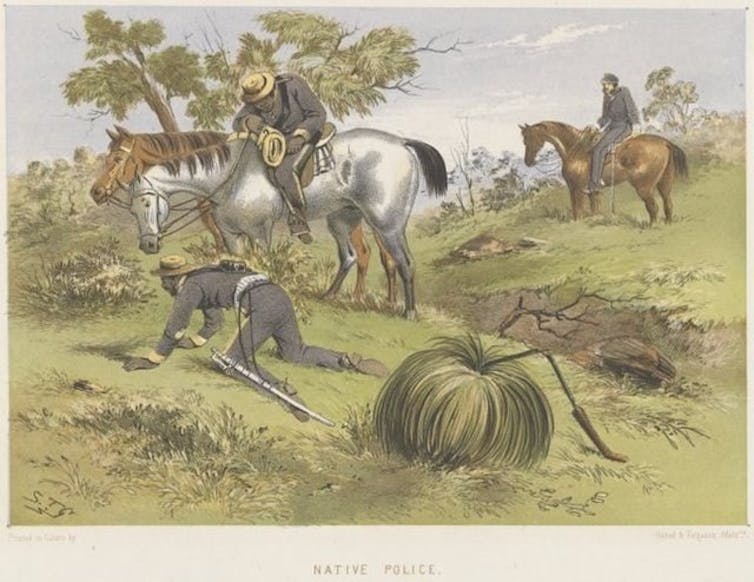
One is a story that she tells about History: that it is indeed a “discipline”, in the sense that it rewards critical reflection on its modes of rationality. Our ability to historicise the Enlightenment is, in this way, an assurance that we have been formed by it.
Historians feel obliged neither to reiterate the themes of their teachers nor to confine themselves to their methods and sources. The impulse to revisionism is in our disciplinary bones. By celebrating recent revisions in Australian History’s themes Clark embodies this ethos.
The other implicit expression of Clark’s hope in History is that she shows it to have been porous, not only to the noise of nation-building, but also to the susurration of social movements. The most important is feminism, whose transformation of Australian humanities began roughly a decade before the provocation to see Australian history from “the other side of the frontier”.
Feminism demanded the inclusion of previously ignored actors. It showed that “family” was an object of equal importance to “state”. It elevated the significance of certain kinds of evidence, such as oral history, and thus helped to give emotions a reality hitherto reserved to other more “material” factors.
Feminism forcefully raised the question of “standpoint”, an idea for whose sympathetic reception many historians had been primed by reading the English philosopher R.G. Collingwood.
Clark’s 35 references to feminism attest to its reformative influence on her discipline and on her. History would not be as receptive to the remaking that Clark has plotted had it not begun to take up what feminism offered.![]()
Timothy Michael Rowse, Emeritus Professor, Western Sydney University
This article is republished from The Conversation under a Creative Commons license. Read the original article.
‘Odd radio circles’ that baffled astronomers are likely explosions from distant galaxies
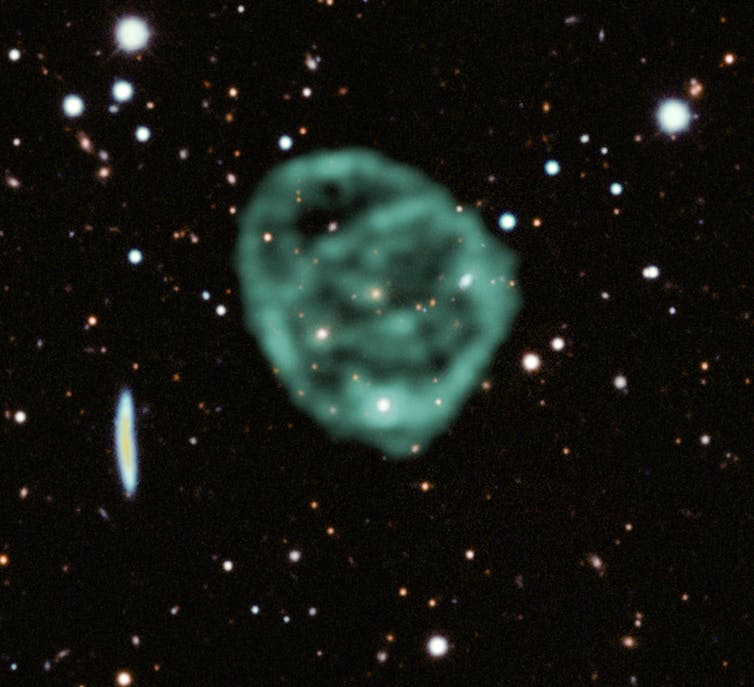
In 2019, my colleagues and I discovered spooky glowing rings in the sky using CSIRO’s ASKAP radio telescope in Western Australia. The rings were unlike anything seen before, and we had no idea what they were.
We dubbed them odd radio circles, or ORCs. They continue to puzzle us, but new data from South Africa’s MeerKAT telescope are helping us solve the mystery.
We can now see each ORC is centred on a galaxy too faint to be detected earlier. The circles are most likely enormous explosions of hot gas, about a million light years across, emanating from the central galaxy.
Our paper showing these results has been peer-reviewed and accepted for publication by Monthly Notices of the Royal Astronomical Society.
A Closer Look
We now have beautiful images of one of these rings taken with South Africa’s MeerKAT radio telescope, which shows the ORC in stunning detail.
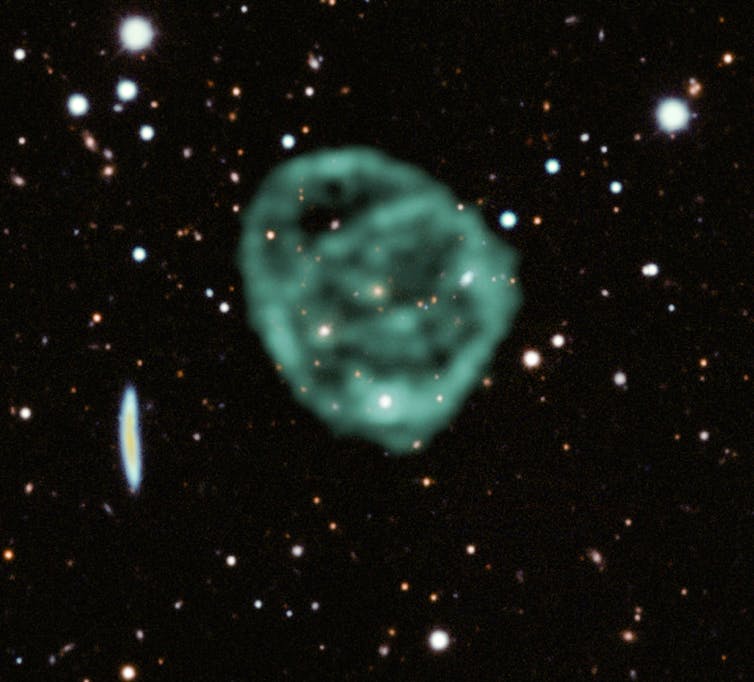
For example, MeerKAT sees a small blob of radio emission in the centre of the ring, which is coincident with a distant galaxy. We are now fairly certain this galaxy generated the ORC.
We see these central galaxies in other ORCs too, all at vast distances from Earth. We now think that these rings surround distant galaxies about a billion light years away, which means the rings are enormous – around a million light years across.
From modelling the faint cloudy radio emission that MeerKAT detects within the rings, it seems the rings are the edges of a spherical shell surrounding the galaxy, like a blast wave from a giant explosion in the galaxy. They look like rings instead of orbs only because the sphere appears brighter at the edges where there is more material along the line of sight, much like a soap bubble.
Energetic Electrons
MeerKAT has also mapped the polarisation of the radio waves, which tells us about the magnetic field in the ring. Our polarisation image shows a magnetic field running along the edge of the sphere.
This suggests that an explosion in the central galaxy caused a hot blast to collide with the tenuous gas outside the galaxy. The resulting shock wave then energised electrons in the gas, making them spiral around the magnetic field, generating radio waves.
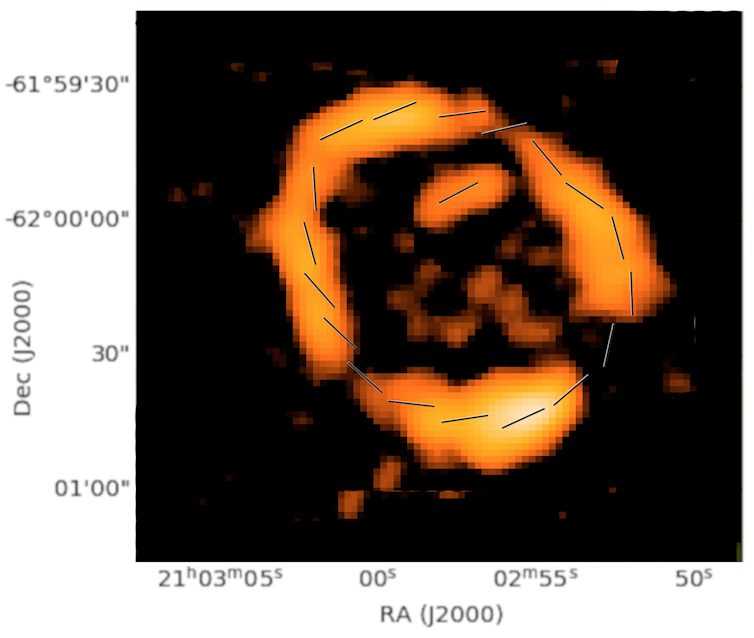
One big surprise from the MeerKAT result is that within the ring we see several curved filaments of radio emission. We still don’t know what these are.
But we do know that the sphere is so huge that it has swallowed up other galaxies as it blasted out from the central galaxy. Perhaps the filaments are trails of gas ripped off the galaxies by the passing shock wave?
Colliding Black Holes Or The Birth Of Millions Of Stars?
The big question, of course, is what caused the explosion. We are exploring two possibilities.
One is that they were caused by the merging of two supermassive black holes. Such a “merger event” releases an enormous amount of energy, enough to generate the ORC.
Another possibility is that the central galaxy went through a “starburst” event, in which millions of stars were suddenly born from the gas in the galaxy. Such a starburst causes hot gas to blast out from the galaxy, causing a spherical shock wave.
Both black hole mergers and starburst events are rare, which accounts for why ORCs are so rare (only five have so far been reported).
The puzzle of ORCs is not solved yet, and we still have much to learn about these mysterious rings in the sky. So far, we have only detected them with radio telescopes – we see nothing from the rings at optical, infrared, or X-ray wavelengths.
Getting A Better View
To find out more, we need a tool even more sensitive than MeerKAT and ASKAP. Fortunately, the global astronomical community is building just such an observatory – the Square Kilometre Array (SKA), an international effort with telescopes in South Africa and Australia.
ASKAP and MeerKAT were built to test the sites and technology for the SKA. Quite apart from their role as precursors for the SKA, both telescopes have been hugely successful in their own right, making major discoveries in their first years of operation.
Their success in discovering and studying ORCs therefore bodes well for the SKA.
The two telescopes are also beautifully complementary – ASKAP is superb at surveying large areas of sky and finding new objects, while MeerKAT is unrivalled for zooming in on those objects and studying them with higher sensitivity and resolution.
The SKA promises to surpass both. No doubt the SKA will find many more ORCs, and will also be able to probe them to find out what they are telling us about the lifecycle of galaxies.![]()
Ray Norris, Professor, School of Science, Western Sydney University
This article is republished from The Conversation under a Creative Commons license. Read the original article.
The inspiring architect from Burkina Faso who lifted world’s biggest prize
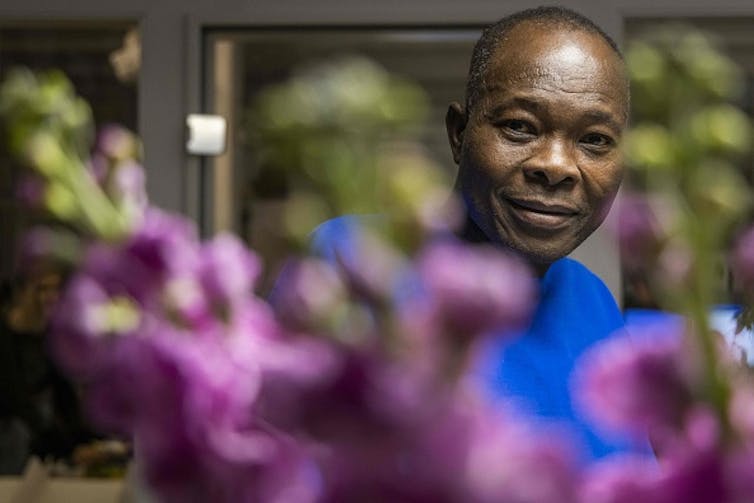
Diébédo Francis Kéré has become the first African and the first black person to be awarded architecture’s highest international honour, the 2022 Pritzker Architecture Prize. Kéré was born in Burkina Faso, West Africa, and built his architectural practice designing schools and medical facilities that were most often built by local communities with minimal resources and a very careful selection of affordable and sustainable materials. It was this approach that led to his architecture firm receiving global recognition. We asked architect and African architecture researcher Paulo Moreia to tell us more about Kéré and his win.
An Introduction To Francis Kéré
Francis Kéré is a 56-year-old internationally renowned architect. He was born in Gando, a small village in Burkina Faso. He turned his destiny around through education, becoming one of the most representative figures in the African diaspora.
As a child, Francis had to leave his family to attend school in the nearest town. Driven by his own optimism, and by the awareness that in his home country only education could make a difference, Kéré moved to Berlin on a carpentry scholarship and to study architecture. Even before he finished his studies, he designed a primary school in Gando.
In Germany he founded an association to raise funds to build the school, translated as ‘Bricks for Gando’, it was later renamed the Kéré Foundation.
What Kind Of Architecture Is He Known For?
The Gando school is a model of sustainable building. Its features include allowing cooling air to pass through and around the building. Another is its innovative use of widely available local resources – both materials and unskilled labour.
It has become an example of the power of architecture to uplift and inspire.
The first school built using this model – in Gando in 2001 – encouraged the implementation of further projects: another school, then a library. These buildings, in turn, have attracted other buildings around them – and even the neighbouring villages have built their own schools following Gando’s cooperative approach.
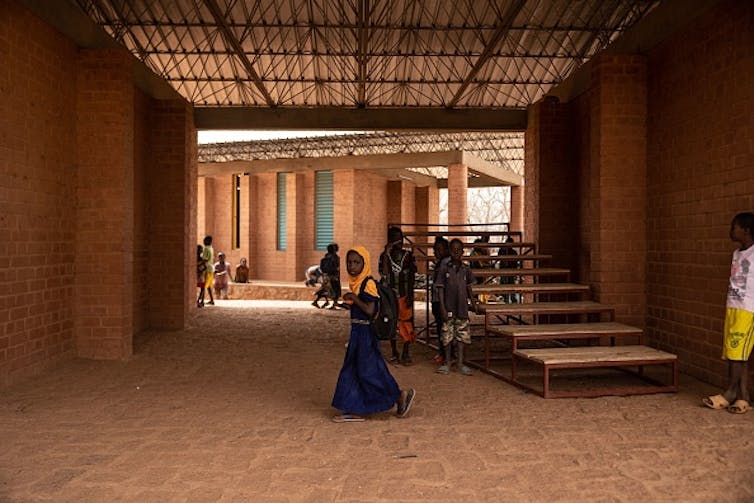
When architecture has such an impact in the context where it operates, it can only be described as a powerful type of architecture. The impact extended to the whole nation. Less than 15 years after building his first school, Kéré was invited to design Burkina Faso’s national parliament. It also extended beyond the country’s borders – across the continent and then further afield. In Africa there have been projects in Benin, Kenya, Mali and Mozambique. Worldwide there have been projects in Europe, America and Asia. Kéré’s school inspired my own work as an architect in Angola.
What Is The Pritzker Prize?
It is architecture’s highest honour. It’s granted each year to architects whose work has achieved excellence. This year it is in its 45th edition.
Historically, the prize honoured the designers of iconic buildings, but in the last few years this seems to have changed. In 2021 a French duo Lacaton & Vassal were recognised for their advocacy of social justice and sustainability. In 2016 the Chilean Alejandro Aravena won the award for his design of several social housing projects and in 2014 it was awarded to Japanese architect Shigeu Ban. Besides creating architecture, Shigeu Ban also volunteers for disaster relief.
Why Does Kéré’s Win Matter?
In these convoluted times, Kéré’s work is a magnificent example of the potential of architecture to provide a better future and to catalyse progress on a local scale. His projects show how the architect’s role is not just to design walls, doors, windows and roofs – although he does all of those too, with great quality, elegance, rigour and beauty. His work shows strong climate and budget concerns, along with the will to engage local communities in the design and construction of the buildings themselves.
Kéré’s work suggests that only once buildings are inhabited can we know if their architecture truly suits them. For instance, an oversailing metal roof which provides shade from the brutal sun and protects the walls from the rain might become an unintended playground for children, who like to climb roofs as if they were trees.

His sensibility for using local resources and adapting buildings to their surroundings has become an inspiration for many other architects.
How Could Kéré’s Work Make The World A Better Place?
Kéré’s work resonates on a global scale. His buildings are acts of social transformation. Above and beyond any architectural discourse, they create the conditions for cultivating civic responsibility and promoting self-empowerment.
Once again, looking back to the beginning of his career, which set the basis for his approach to architecture, Kéré’s decision to compensate the support for his childhood studies with a school building was not coincidental. He knew that as a first public institution, the school would enable the population to begin to acquire a proper civic voice – eventually becoming participants in the destiny of their village and country, instead of merely being affected by it.
If this vision was applied elsewhere, the world would definitely be a better place.![]()
Paulo Moreira, Researcher, Universidade de Lisboa
This article is republished from The Conversation under a Creative Commons license. Read the original article.
ATAGI Statement On Recommendations On A Winter Booster Dose Of COVID-19 Vaccine
- Adults aged 65 years and older
- Residents of aged care or disability care facilities
- People aged 16 years and older with severe immunocompromise (as defined in the ATAGI statement on the use of a 3rd primary dose of COVID-19 vaccine in individuals who are severely immunocompromised)
- Aboriginal and Torres Strait Islander people aged 50 years and older.
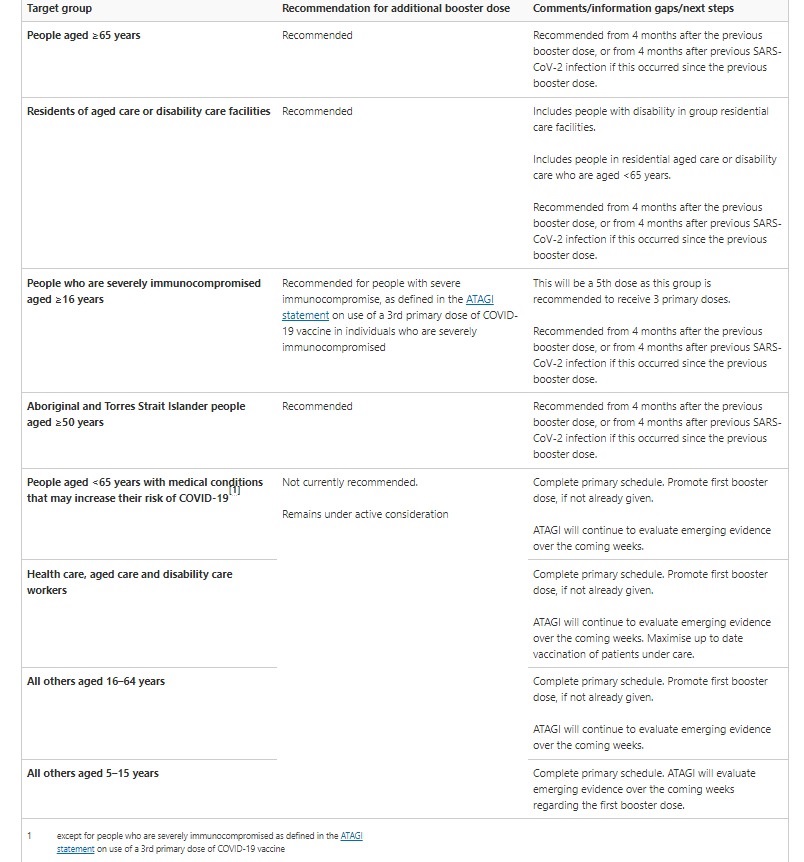
Free Public Transport For Seniors A Proven Election Winner
Heart Ultrasound Measures Can Be Used To Predict Risk Of Developing Dementia
A Gene Could Prevent Parkinson's Disease
Vitamin B3, niacinamide and reducing skin cancer risk: what does the research say?
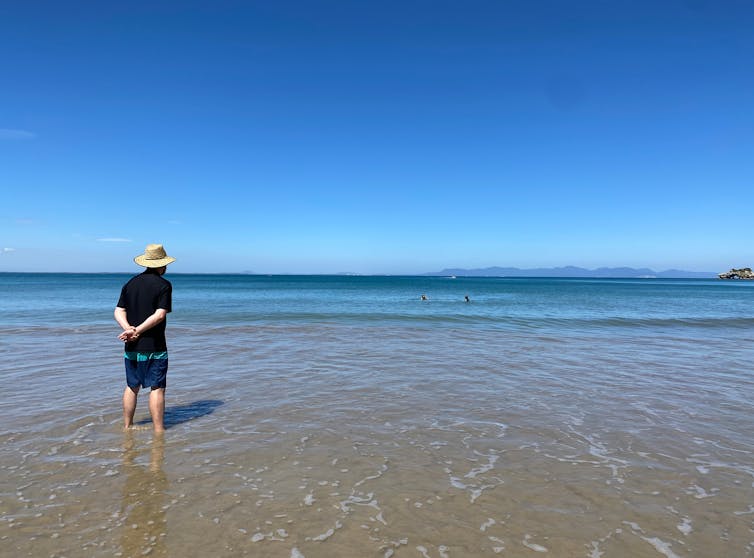
If you’ve had a skin cancer check lately, you might have been told to consider adding a daily vitamin B3 pill to your skin safety regime (hopefully, you already use sunscreen, wear sun-smart clothes and avoid sun exposure in the middle of the day).
So, what is this vitamin and why is it sometimes recommended as a way reduce skin cancer risk?
Australia is the skin cancer capital of the world, where two-thirds of people can expect to develop some form of skin cancer by retirement age. It is the most common type of cancer and also exerts the costliest burden on the health-care system. Anything that can help minimise the burden of skin cancer is worth considering.

Supplementing Your Diet With With Vitamin B3 May Benefit The Skin
The key chemical you need to know about is called nicotinamide (also known as niacinamide).
Nicotinamide or niacinamide is a variant of vitamin B3. It’s found in dietary sources such as meat, fish, nuts, grains and mushrooms. It is the precursor of nicotinamide adenine dinucleotide (NAD+), essential for many physiological reactions that help cells obtain energy.
If you don’t get enough vitamin B3, you can get the disease pellagra. Pellagra affects organs with high cellular energy requirements such as the brain, skin and gut, manifesting with what medical professionals sometimes call the “4 Ds” – dermatitis, diarrhoea, dementia and death.
Recently, emerging evidence suggests supplementing your diet with with vitamin B3 may have a range of benefits, particularly for the skin.
Nicotinamide has been shown to replenish cellular energy, enhance DNA repair, act as an anti-inflammatory and modulate some of the local immunosuppression caused by ultraviolet radiation.
Much of the work in this field has been led by Professor Diona Damian, Head of Dermatology at Royal Prince Alfred Hospital, Sydney. Building on from her pioneering laboratory work in the field, she went on to lead the landmark ONTRAC trial published in the New England Journal of Medicine in 2015.
In this phase 3, double-blind, randomised controlled study, 386 patients at high risk of skin cancer took either nicotinamide 500mg twice daily or a placebo for 12 months. The results were striking: the rate of new non-melanoma skin cancer was 23% lower in the nicotinamide group than in the placebo group.
Similar improvements have been observed in a small studies of renal transplant patients – a group well known to be at increased risk of developing skin cancer.
Nicotinamide is also becoming increasingly employed in cosmetics and skincare products. Several small clinical studies have demonstrated niacinamide may help improve wrinkles, excess pigmentation, redness, sallowness and elasticity of the skin.
Aged skin has less nicotinamide adenine dinucleotide in it. The theory is supplementing with nicotinamide may help replenish these levels, which then helps repair cellular dysfunction.
Taking Niacinamide Supplements
Nicotinamide is a well-tolerated supplement. It is easily available from most pharmacies or supermarkets, costing less than 10c per capsule.
You should be aware different formulations of vitamin B3 exist over the counter, such as niacin (which can cause profound flushing upon consumption). It is better to seek out the niacinamide formulation.
The optimum long-term niacinamide dose is not known, but given the ONTRAC study used a regime of 500mg twice daily, this is generally what is recommended.
Its role in children is less clear. It appears to be safe, but the therapeutic benefit offered by niacinamide in paediatric patients is yet to be determined.
Based on the scientific literature to date, it is reasonable to recommend niacinamide for people at high risk of skin cancer.
It is, however, is only one of the pillars of sun safety. Using sunscreen and sun-smart clothing, avoiding sun exposure during the middle of the day and being aware of new or changing spots on the skin all remain crucial.![]()
Deshan Sebaratnam, Conjoint Senior Lecturer, Medicine, UNSW Sydney
This article is republished from The Conversation under a Creative Commons license. Read the original article.
Study Shows That Intranasal Rx Halts Memory Decay In Experimental Alzheimer’s Model
Quality costs more. Very few aged care facilities deliver high quality care while also making a profit

You don’t have to look to far to find examples of poor quality residential aged care. Most recently, residents have too often been un-vaccinated, frightened, isolated, and have died alone in aged care facilities during the pandemic.
It’s tempting to see poor quality as simply the result of extreme circumstances or bad actors behaving incompetently or unscrupulously.
But these problems existed well before COVID. As the Royal Commission into Aged Care Quality and Safety found, they’re built into the system.
Unlike other sectors, such as disability and mental health, Australia doesn’t have a clearly defined, rights-based framework of outcomes for older people when they need care.
Instead, the emphasis has been on managing costs. This has been a particular problem for residential aged care. As a result, Australian residential care has become more privatised and marketised over the past 25 years.
So how has that affected the quality of care? And what can governments do to address this issue?
Snapshot Of Residential Aged Care In Australia
The Australian residential aged care system includes around 2,700 services. These are made up of:
- private for-profit organisations, which operate 34% of services
- not-for-profit providers, 57% of services
- government providers, 9% of services.
Around 200,000 Australians live in residential care, at an average cost of around A$90,000 per year. Tax payers contributed around A$13.6 billion in 2019–20.
How Do These Facilities Compare?
Governments want the aged care sector to provide high quality care as efficiently as possible.
In theory, the introduction of private operators promotes market competition. Competition should improve efficiency while maintaining quality.
In practice, there is little evidence this is true – quality costs more.
State government services, which tend to be smaller, charge residents less and provide better quality care than for-profit and not-for-profit providers. This includes nursing hours worked per resident, the rate of assaults per resident, complaints per resident, the use of antipsychotic drugs, and avoidable early deaths.
In research classifying different types of aged care into three tiers of quality (best, middle or worst), just 4% of for-profit providers were in the highest quality tier.
Profits increase when costs are kept down. For-profit providers have to deliver returns for their share holders, which leaves less money to reinvest in services compared with not-for-profit and government services.
Pressure to increase efficiency reduces quality through cost-cutting. This includes reduced staffing levels, lower wages and reduced spending on food and other living items for residents. These pressures are there for all aged care providers, but they are greater when profits have to be maintained.
Cutting Staffing Costs
Staffing costs make up 70% of residential care operating expenses.
Providers reduce staffing costs through the management of staffing ratios and the use of less costly (unskilled) labour. This includes spreading activities such as showering and meals over longer periods, limiting the time scheduled for individual support, and increasing the size of resident groups supported by individual staff members.
The result has been residential care staff are poorly paid and it’s hard to attract and retain them. By international standards, more than half of aged care residents live in facilities with unacceptable levels of staffing. These pressures are greater among for-profit providers.
Staff ratios and staff skills and capabilities directly affect the quality of care. Yet one-third of the personal care staff in residential care facilities lack formal qualifications in aged care.
Under-staffing and inadequate training increases the risk of inappropriate and unsafe care and reduces the chance of residents receiving timely care and support. This results in neglect, loneliness and poor health outcomes.
Economies Of Scale
Private providers optimise profits by building larger institutions where they can more easily manage costs.
Large scale services with more than a hundred beds made up nearly half of the 220,000 residential places available in 2020. And they have increased rapidly, particularly in the private sector. Between 2010 and 2020, private for-profit places increased by one-third and the number of large-scale private places more than doubled.
This trend is mirrored by the increasing market share of the top ten provider groups.

But Size Affects Quality
Smaller aged care facilities tend to deliver higher quality care.
Large scale institutions, meanwhile, lead to routinised and impersonal environments for both staff and residents. The larger the residential facility, the more likely you are to eat, sleep, shower and move about “on the clock” according to institutional routines.
As a result, residents are often lonely, isolated, unhappy and powerless.
Facilities like these were abandoned a generation ago for people with disabilities and mental illness. Not surprisingly, older Australians overwhelming prefer home and community care, even when they have complex health needs.
What Can The Government Do?
There has been too much emphasis on cost and profit for providers and not enough on quality and outcomes for residents.
The federal government needs to restructure residential aged care to get a better balance between quality and cost. This will require an overhaul of regulation, funding and system management, to put much more emphasis on the quality of resident outcomes and experience.
In particular, residential care should be required to provide:
- small scale, home-like environments
- better integration with community services and facilities for residents
- improved staffing ratios and staff qualifications.
This will cost more.
The outcomes residents experience in residential services should be monitored much more regularly. And providers must be held accountable for the quality and performance of their services, with funding tied to quality and outcomes – with real consequences for providers who fail to meet these outcomes.
Aged care reform may become a key election issue in the coming months, so we’ll be watching next week’s federal budget closely for new announcements.![]()
Hal Swerissen, Emeritus Professor, La Trobe University
This article is republished from The Conversation under a Creative Commons license. Read the original article.
Booster For Immune Protection After Coronavirus Infection
COVID-19 Pandemic Fuelled Massive Growth In Green Industry
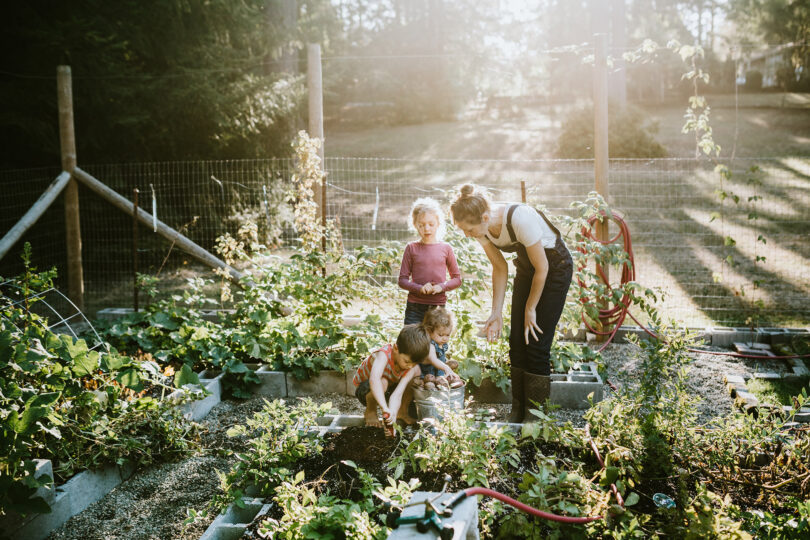 Most people would say the COVID-19 pandemic hasn't been a great couple of years. But for the green industry, like plant nurseries and greenhouses, it's been a boon.
Most people would say the COVID-19 pandemic hasn't been a great couple of years. But for the green industry, like plant nurseries and greenhouses, it's been a boon.Bacteria-Shredding Cicada-Dragonfly Wings Inspire New Antibacterial Packaging
Vegetable Oil Emissions Study Reveals Urgent Need For Greener Growing Solutions
Endometriosis And Ovarian Cancer Genetically Tied
Classifying Weather To Tease Out How Aerosols Influence Storms

Wind And Solar Could Replace Coal Power In Texas
With Land Grabs Comes Competition For Water: Local Farmers Are Likely To Lose
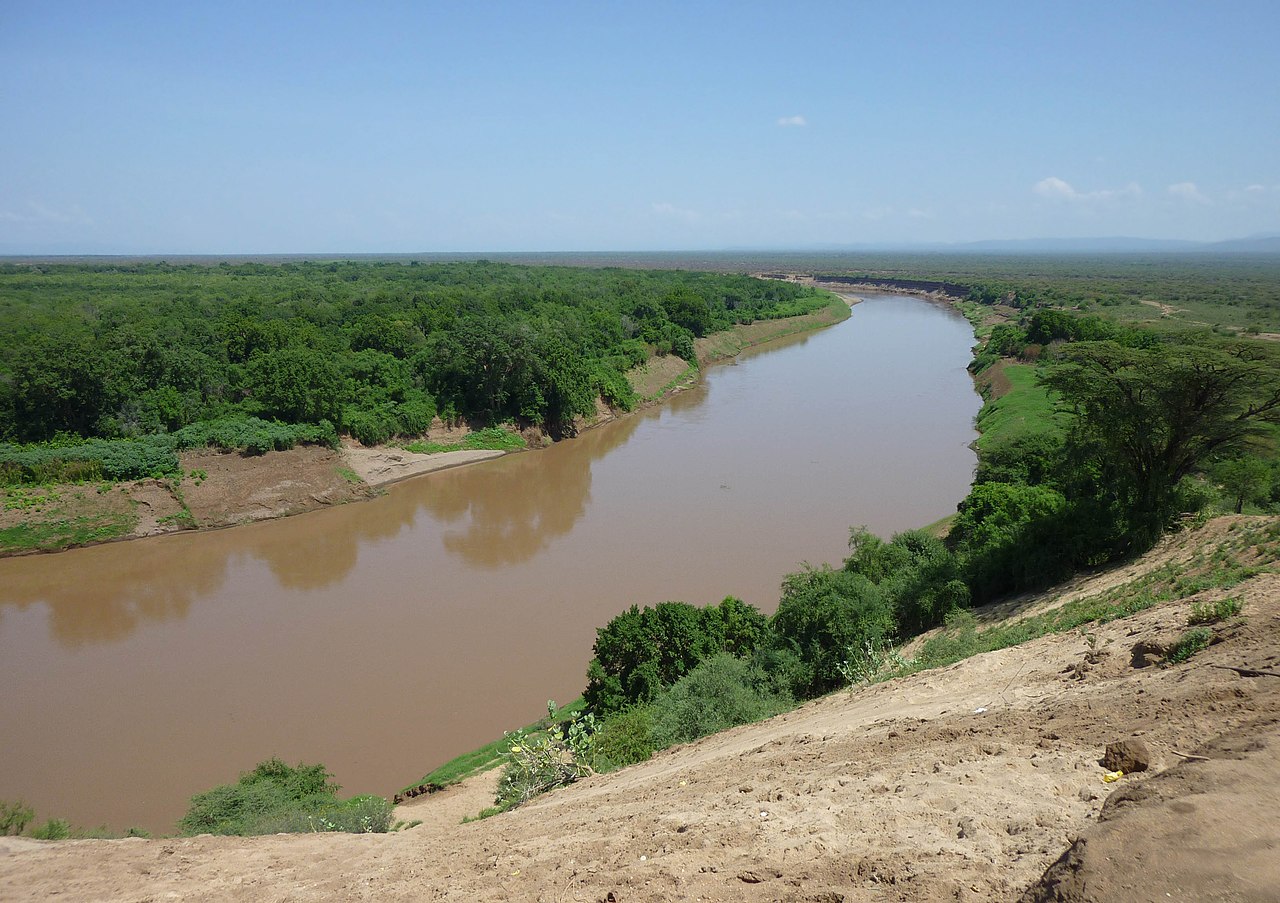
Researchers Discover That Anti-Malaria Drugs Can Fight Pulmonary Disease
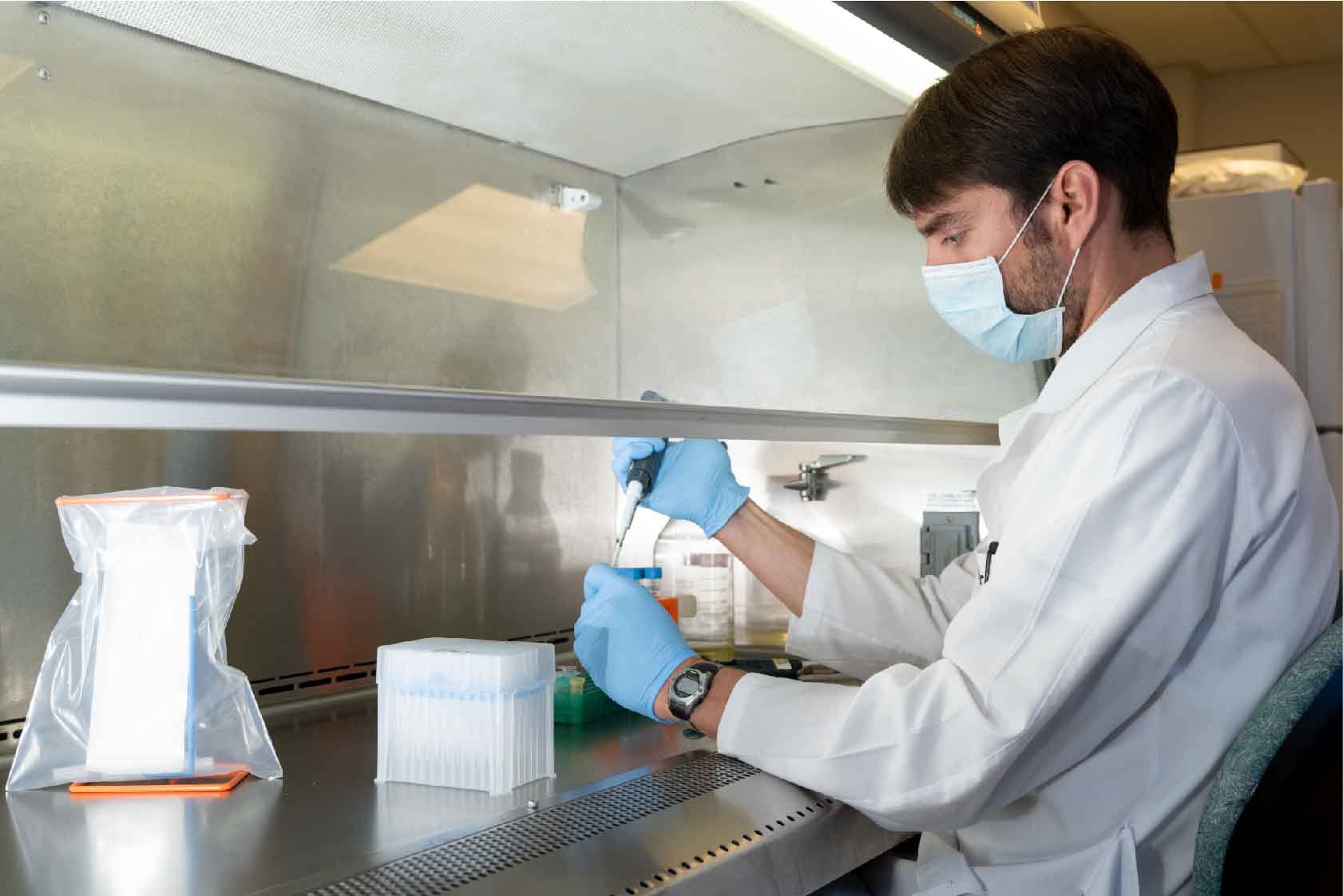
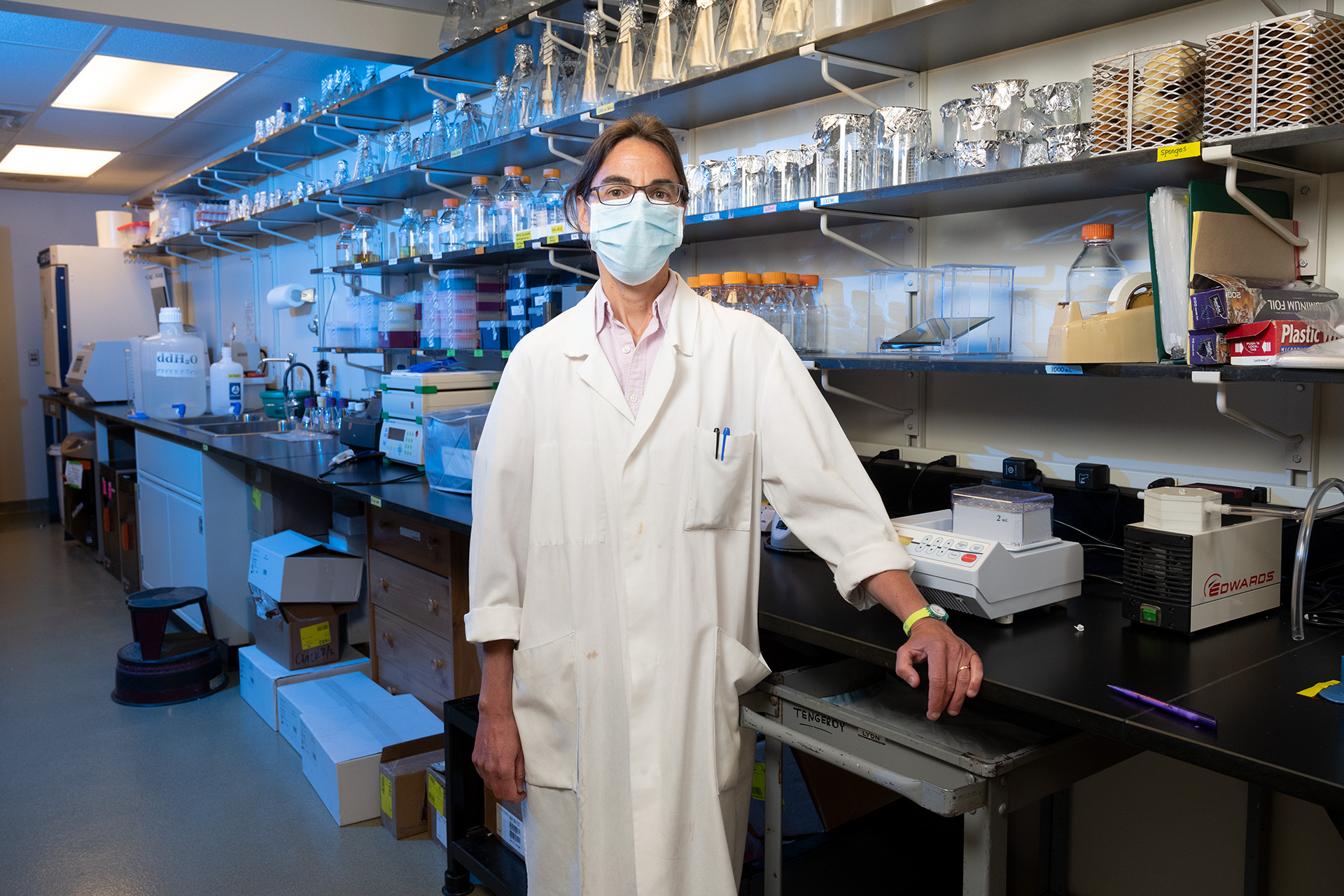
New Enzyme Discovery Is Another Leap Towards Beating Plastic Waste

Disclaimer: These articles are not intended to provide medical advice, diagnosis or treatment. Views expressed here do not necessarily reflect those of Pittwater Online News or its staff.